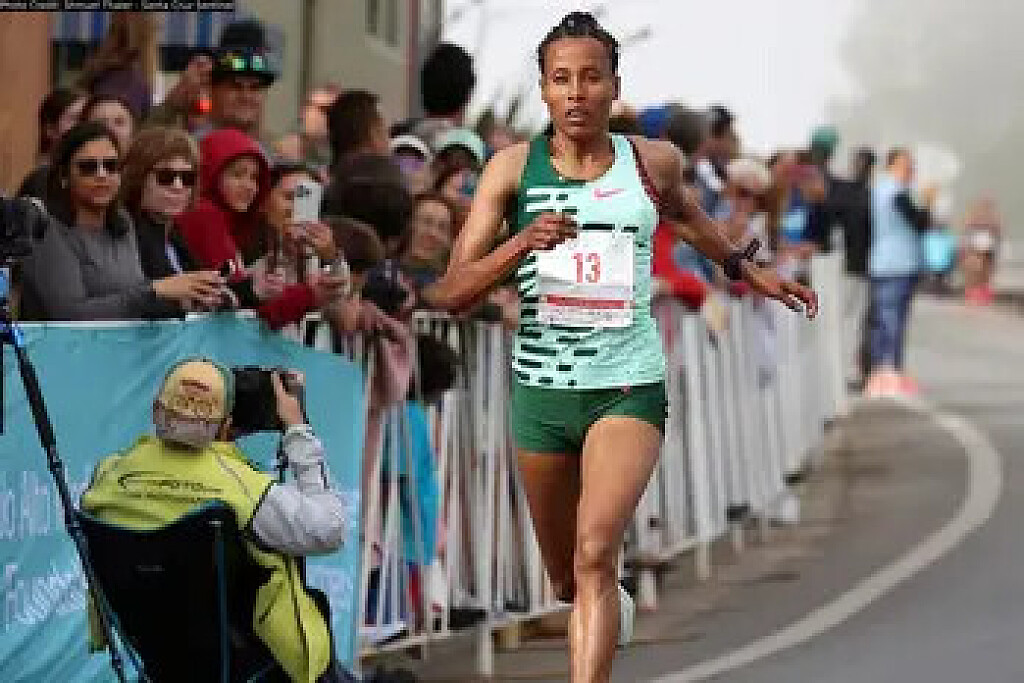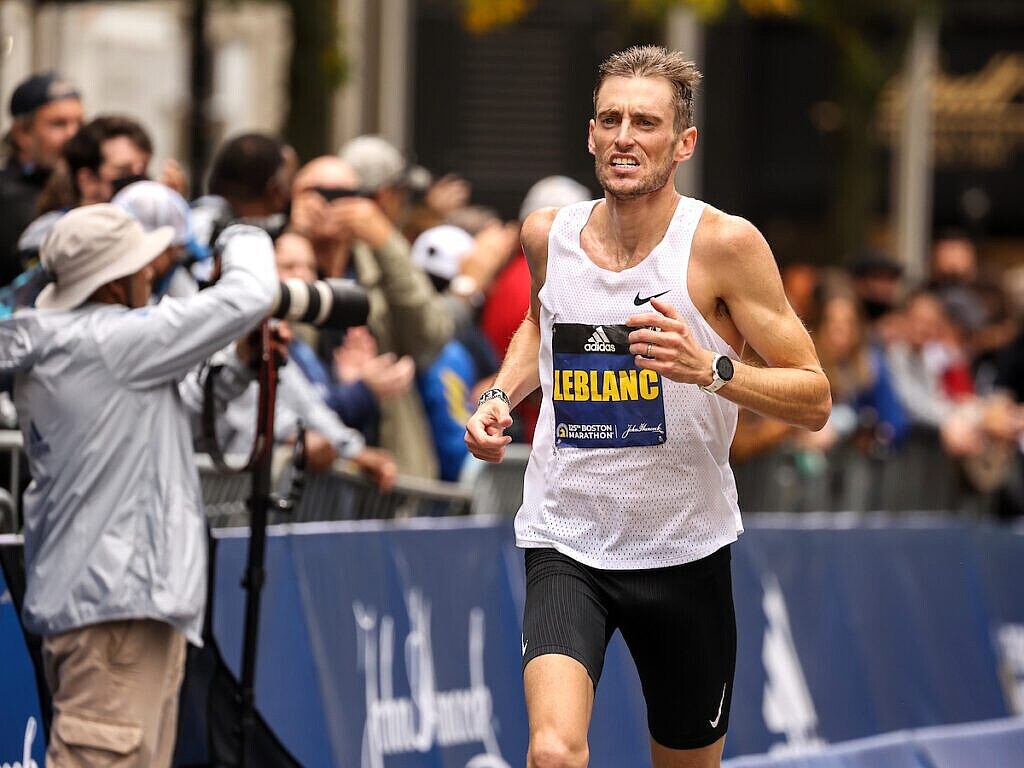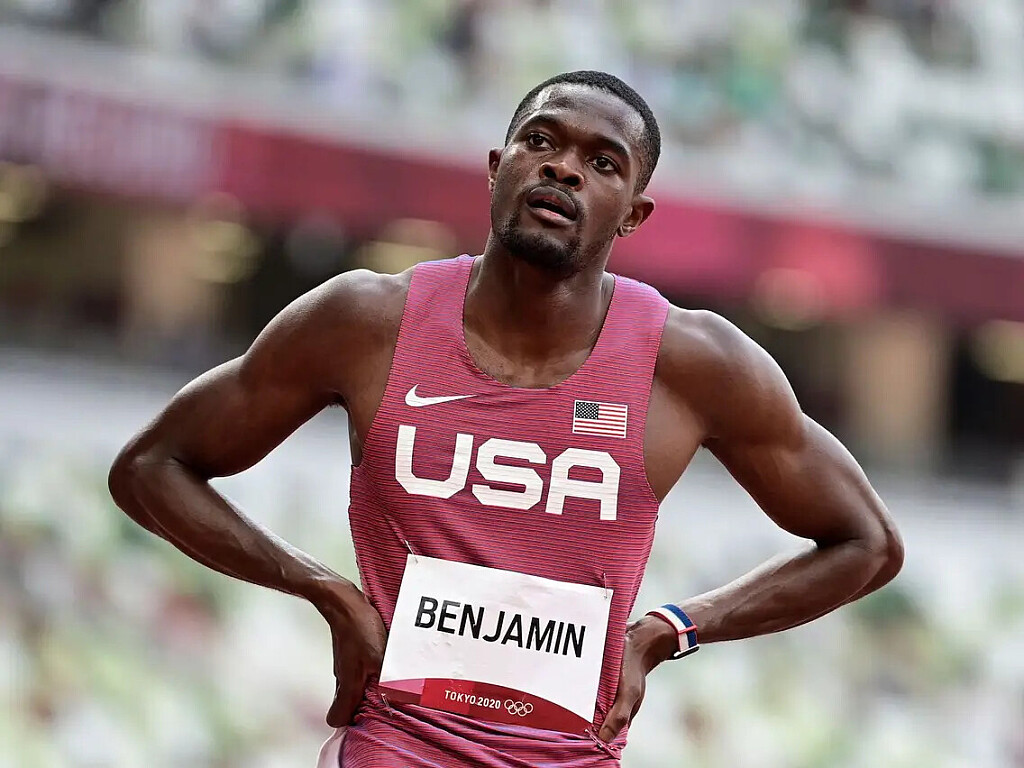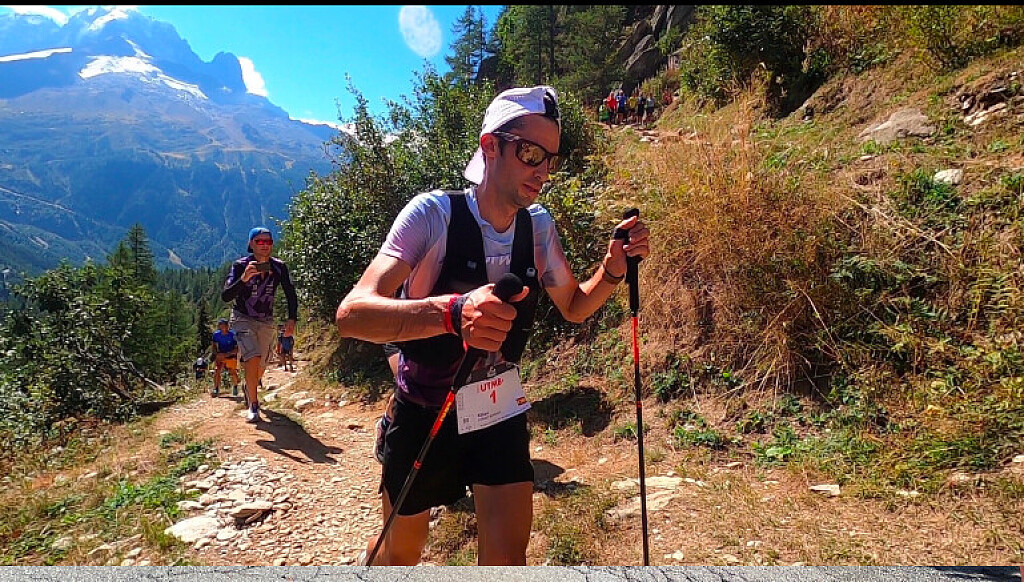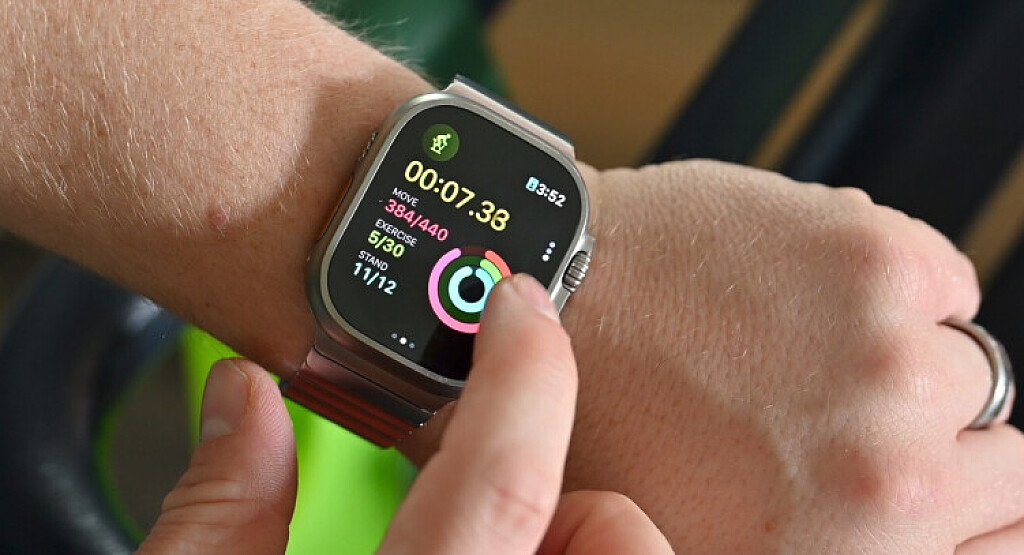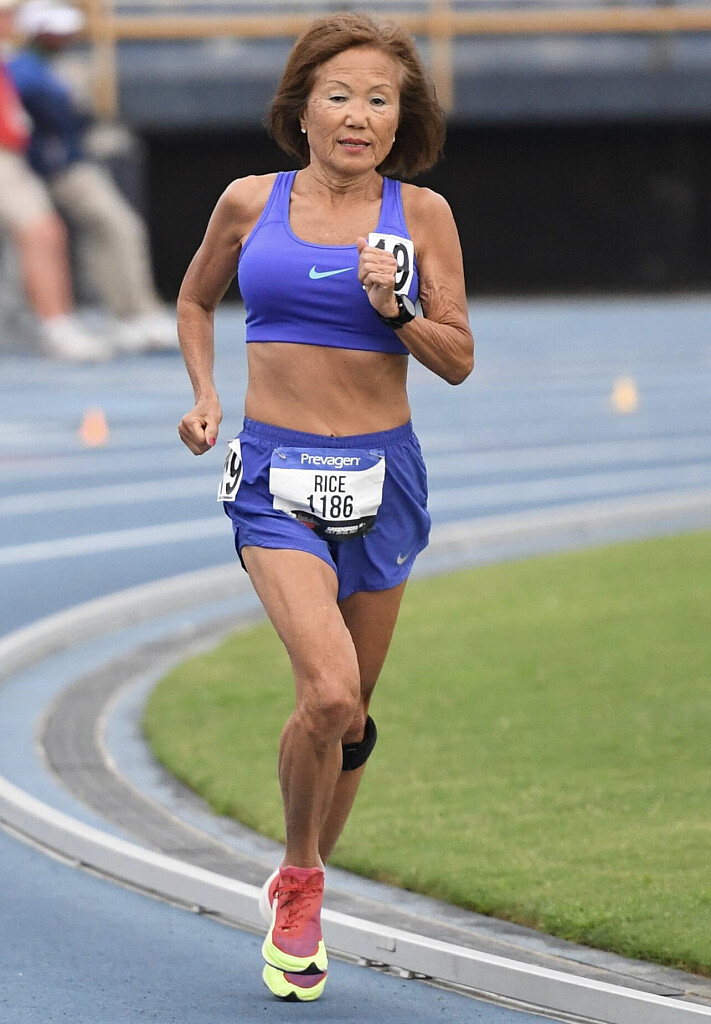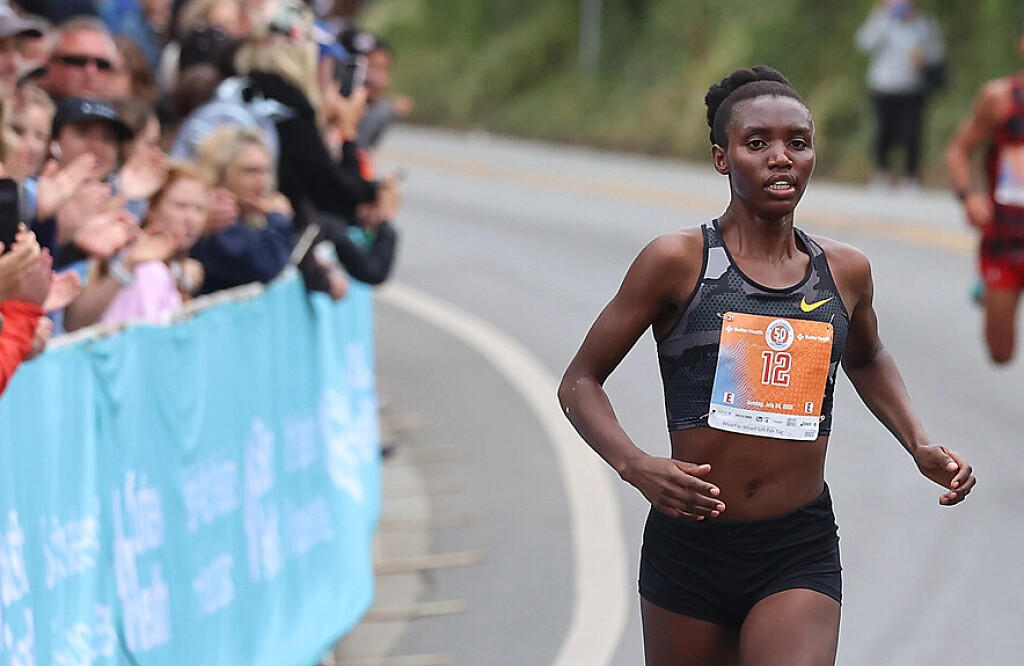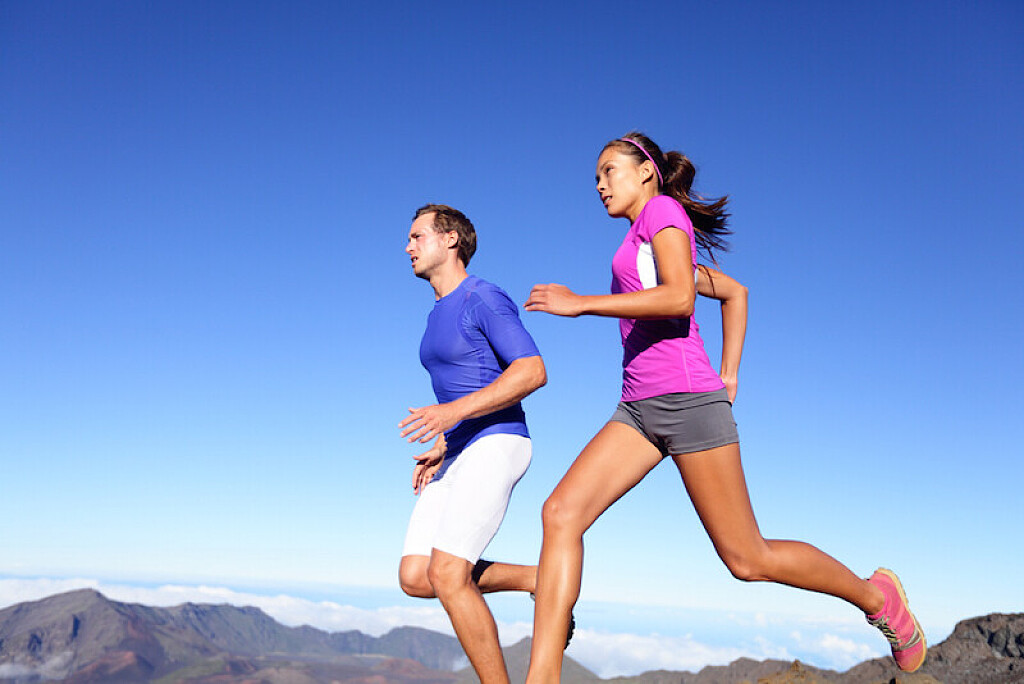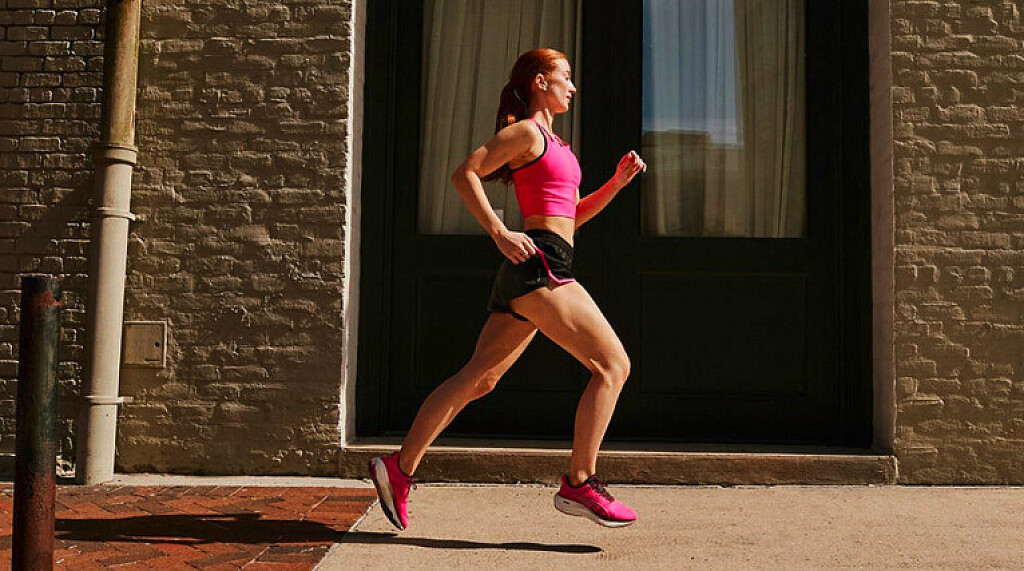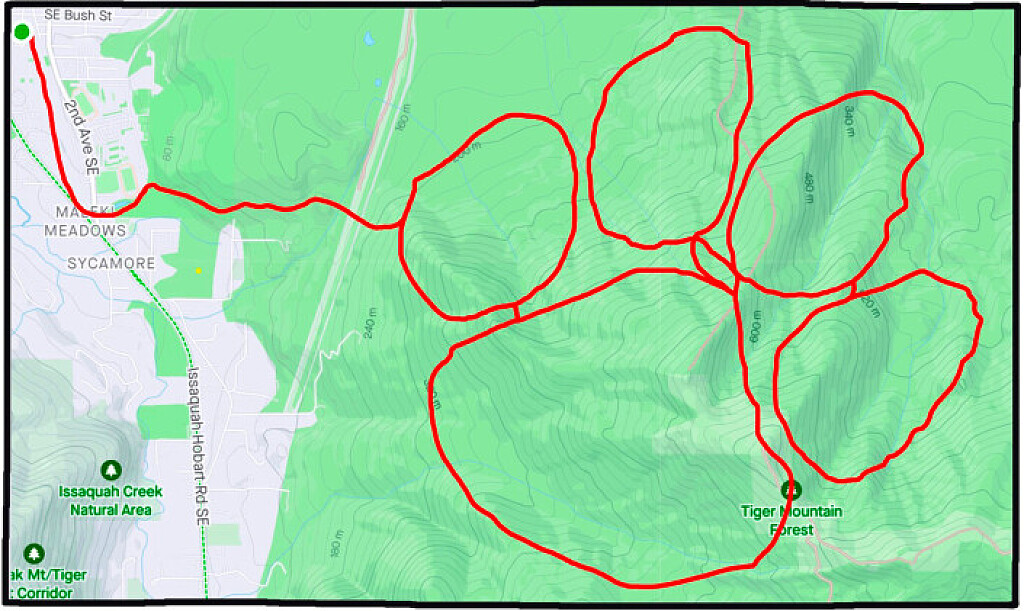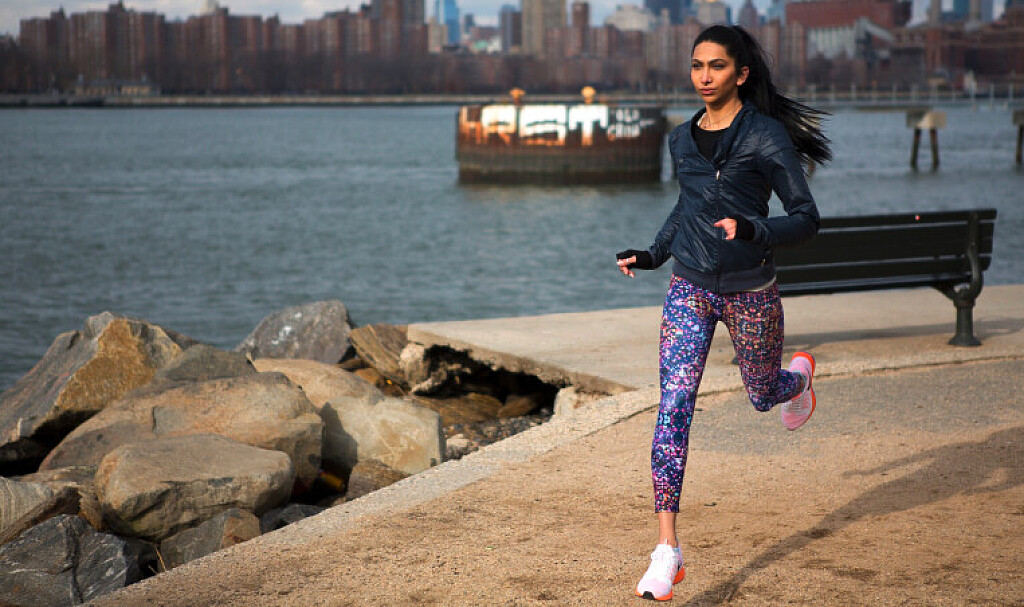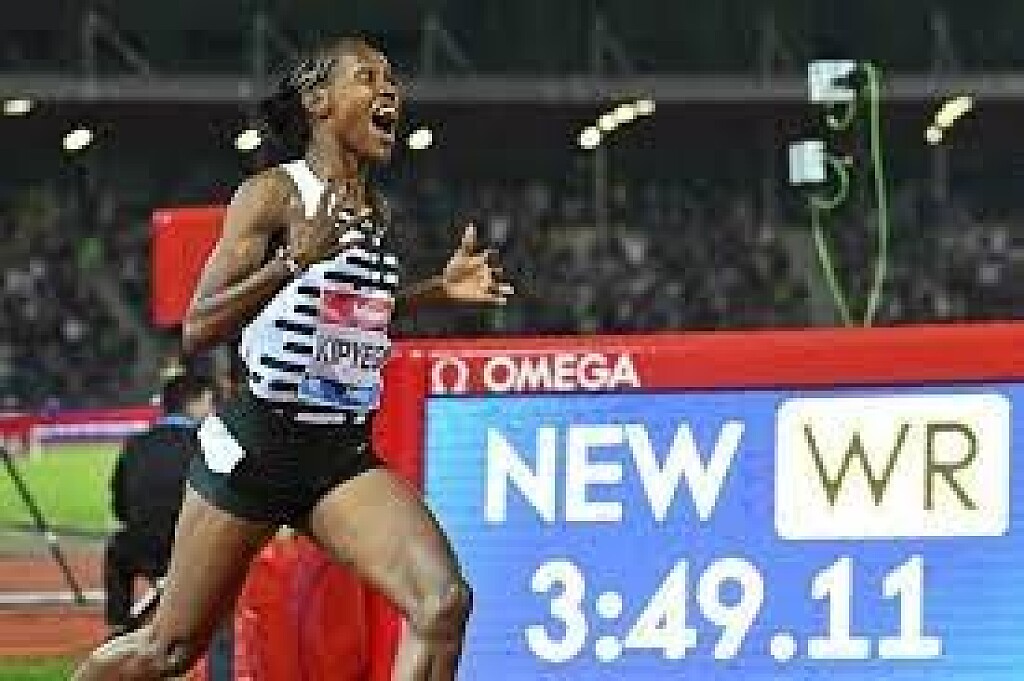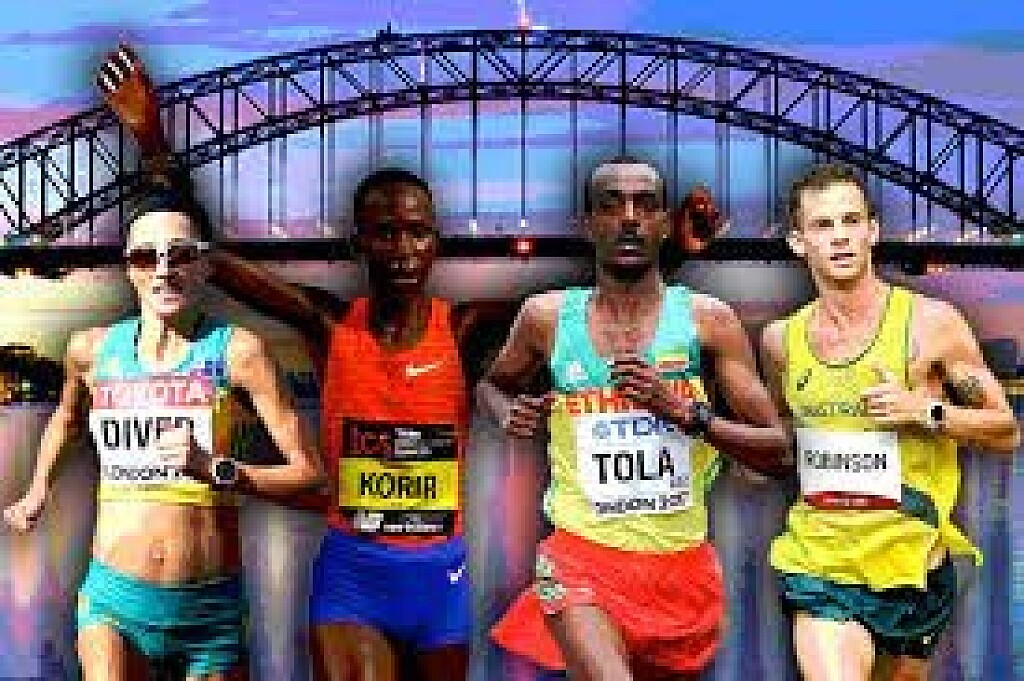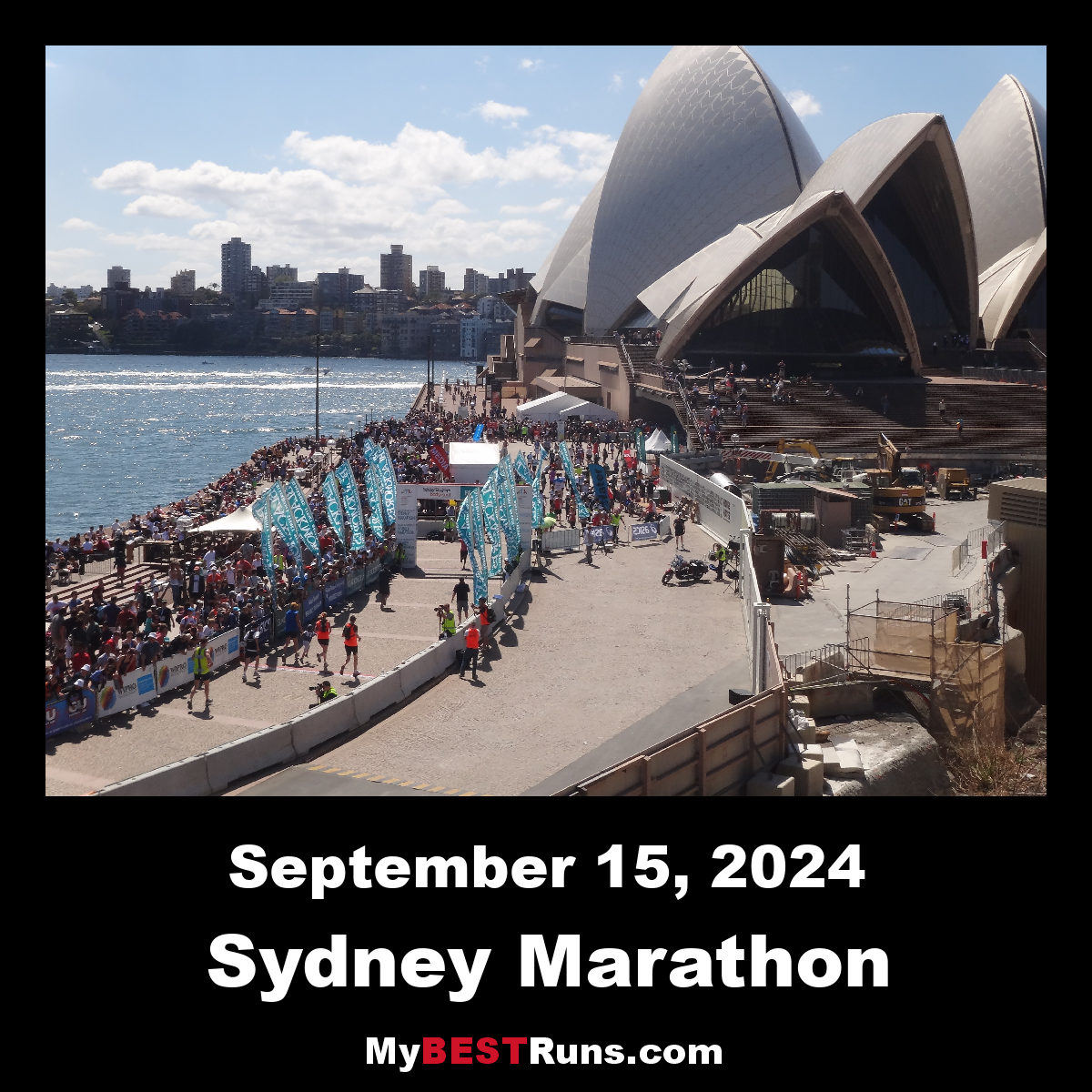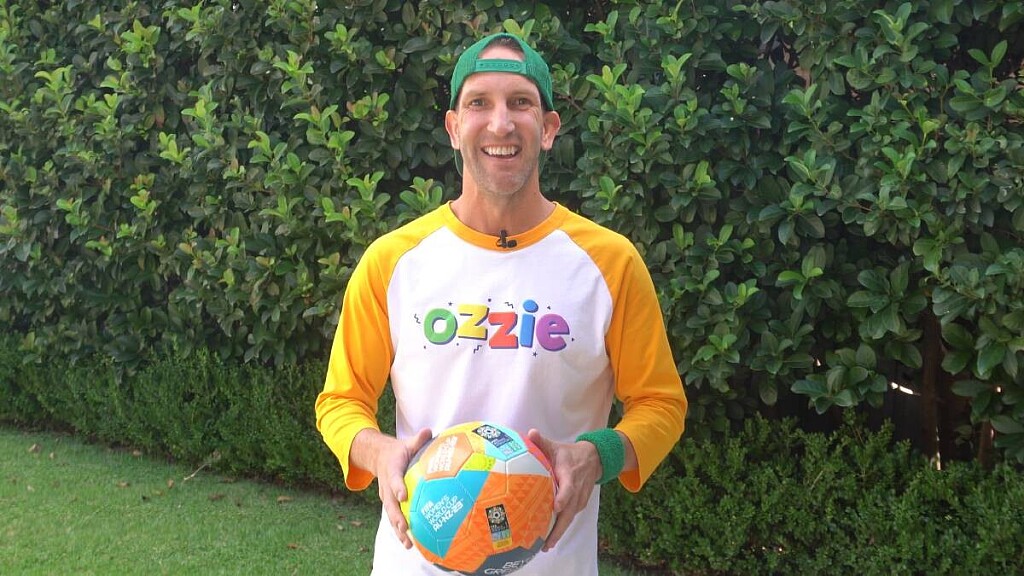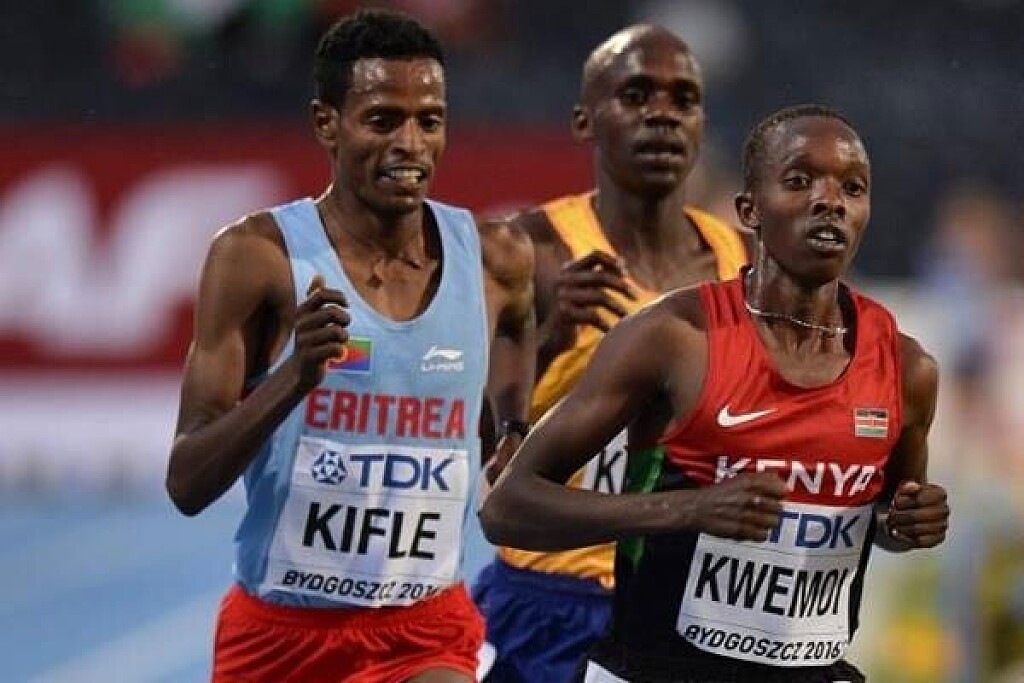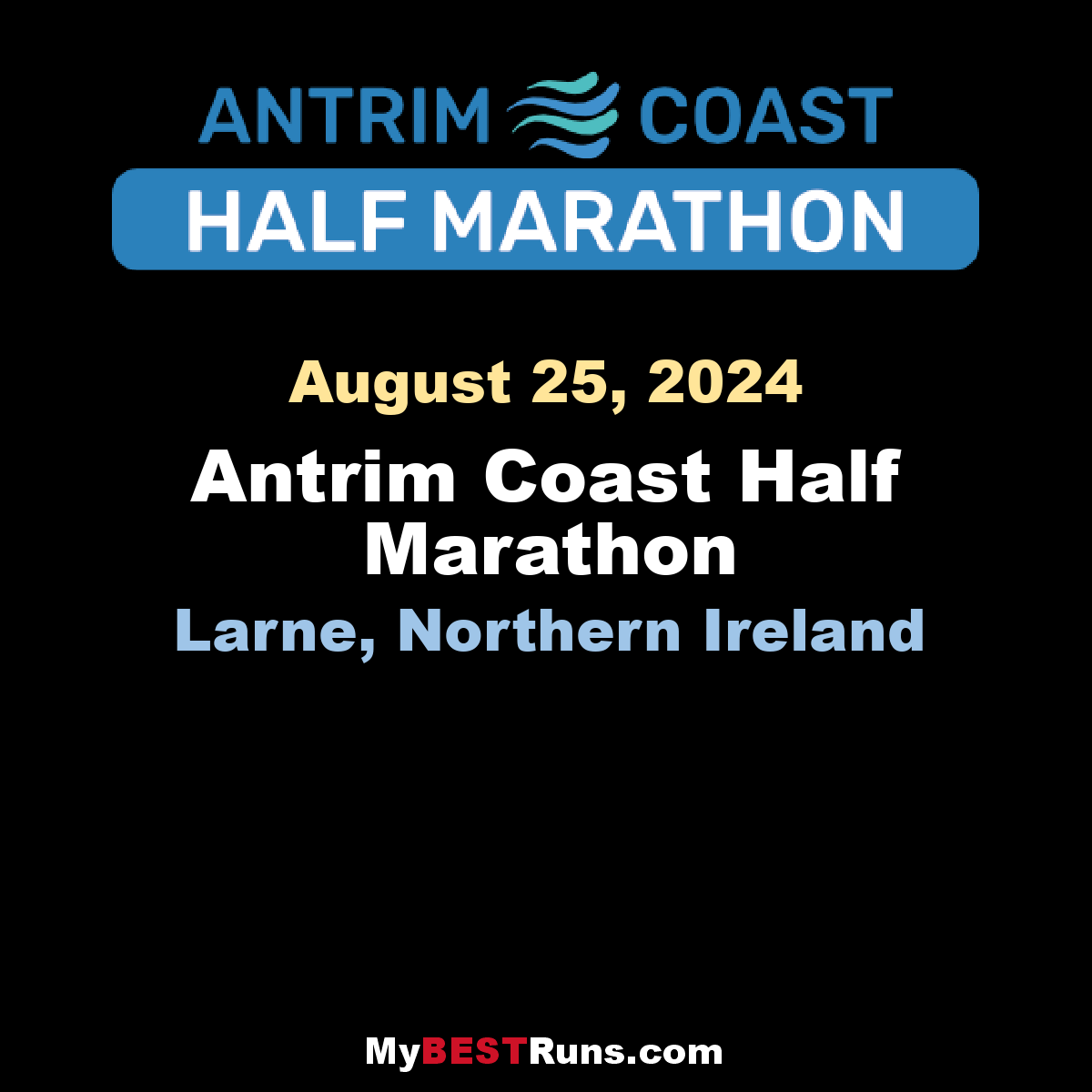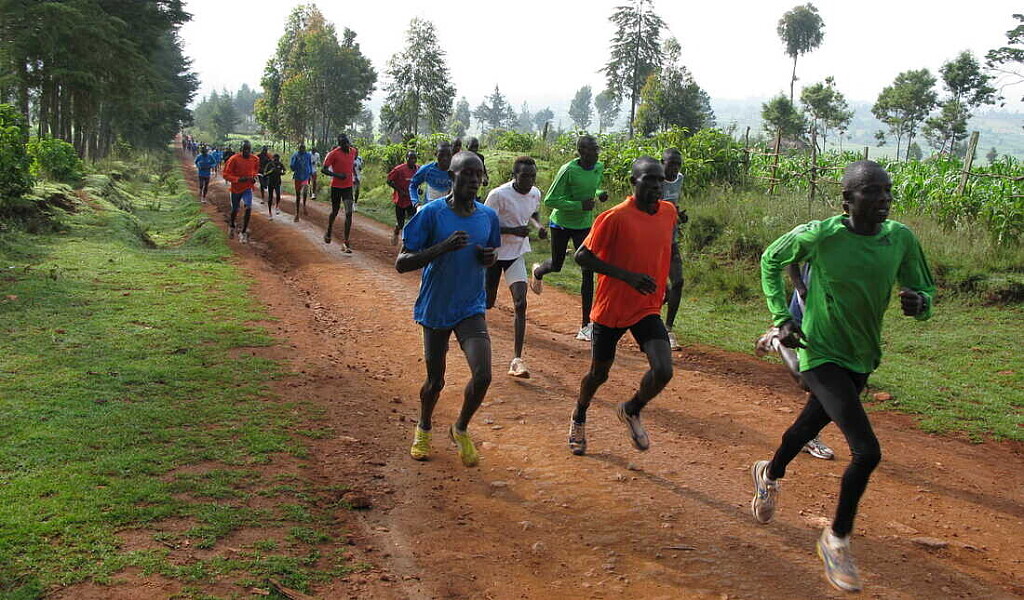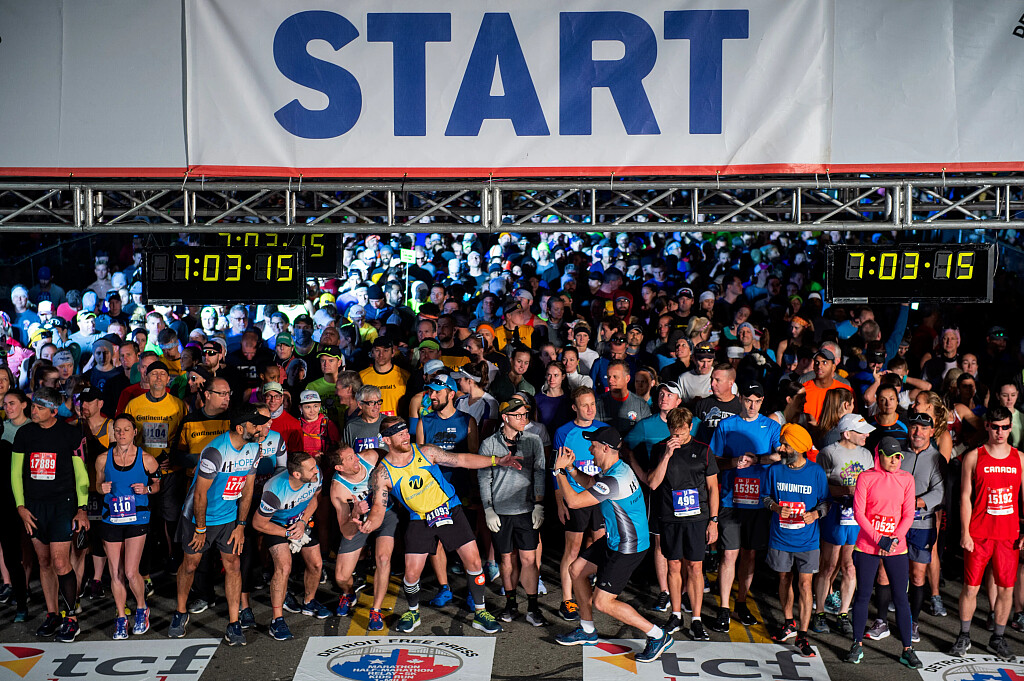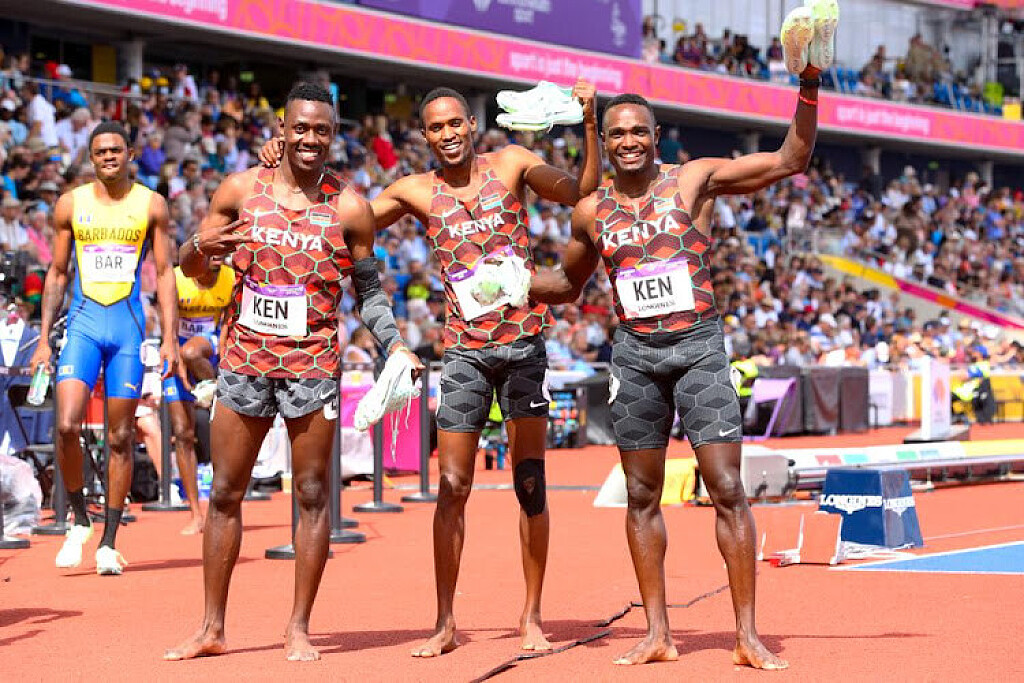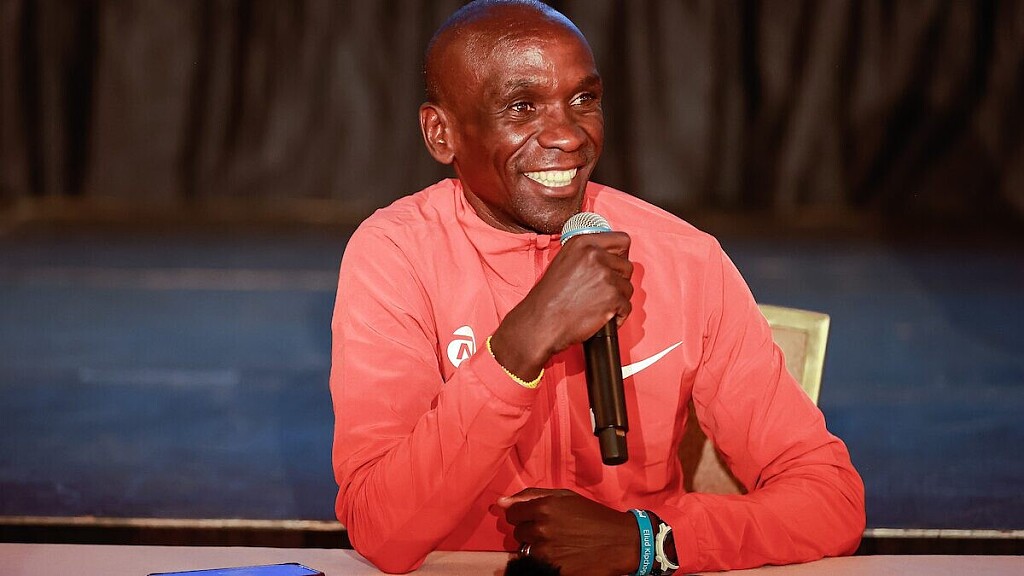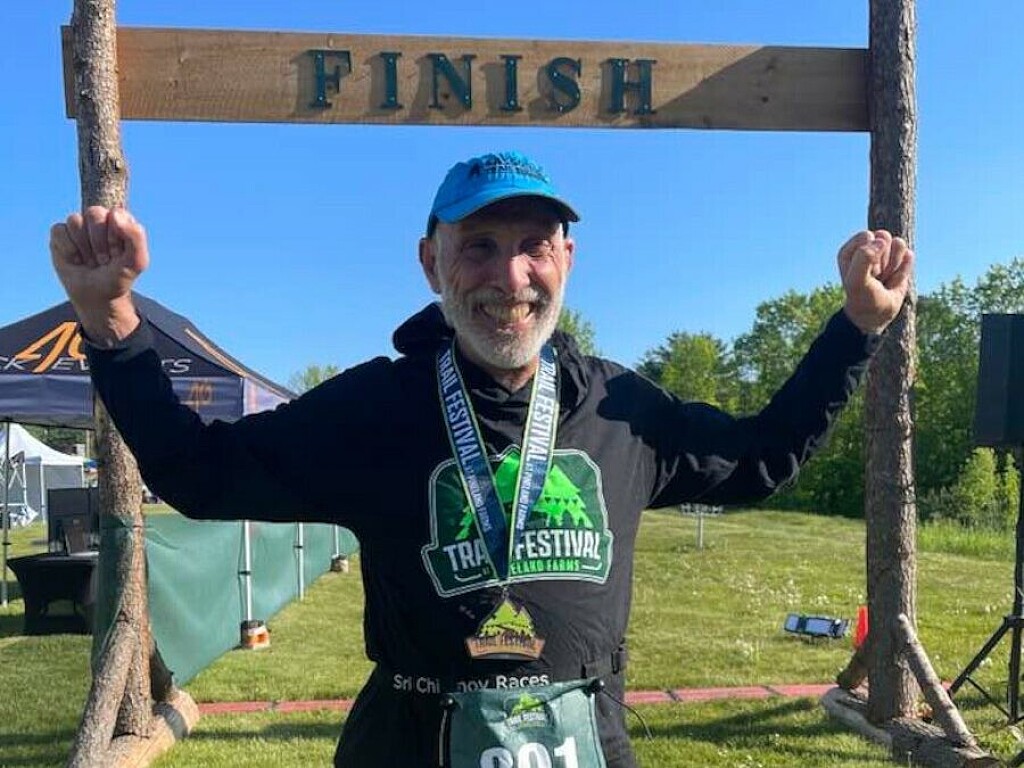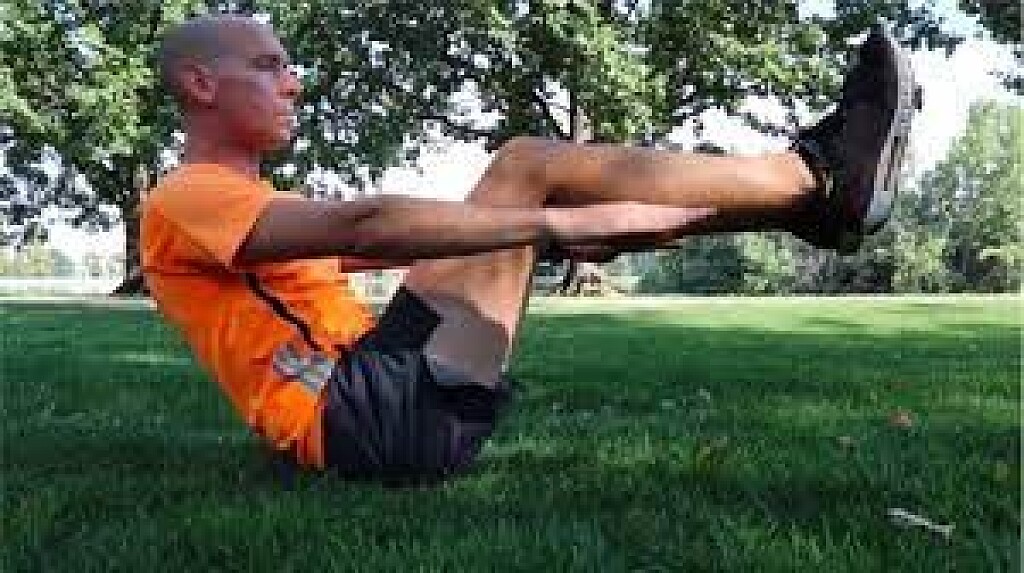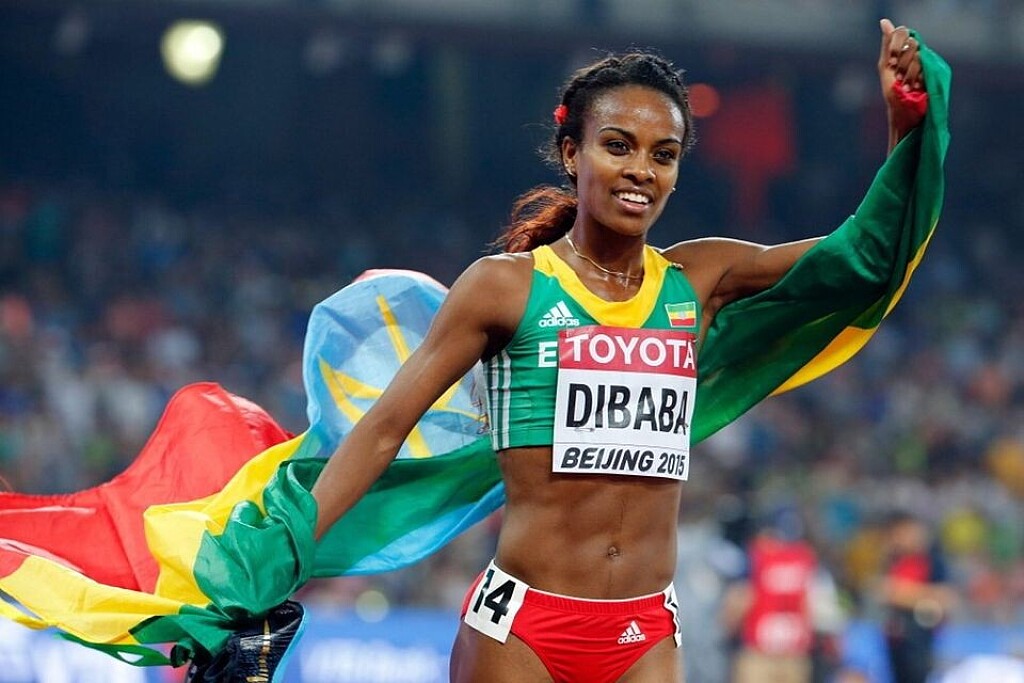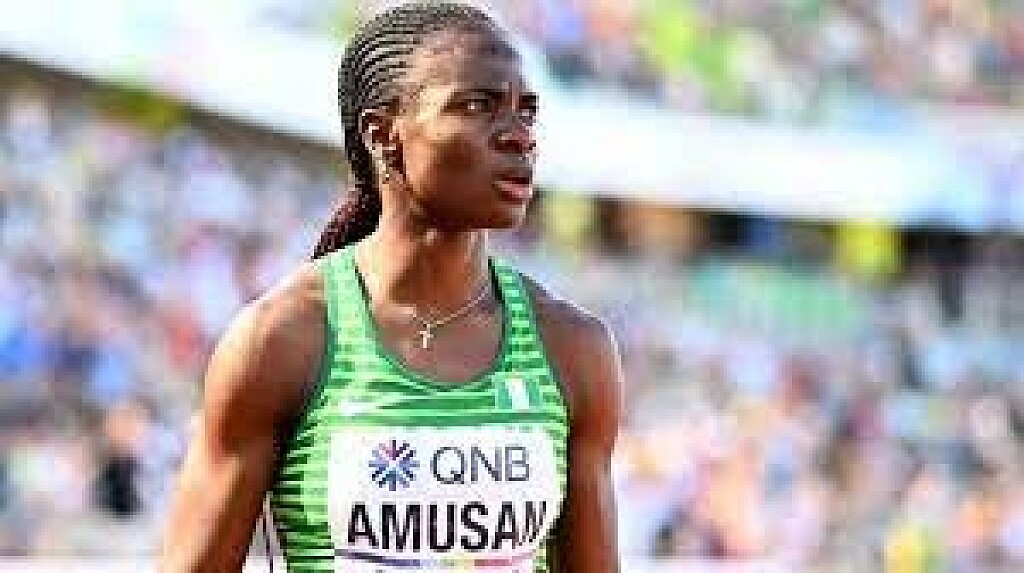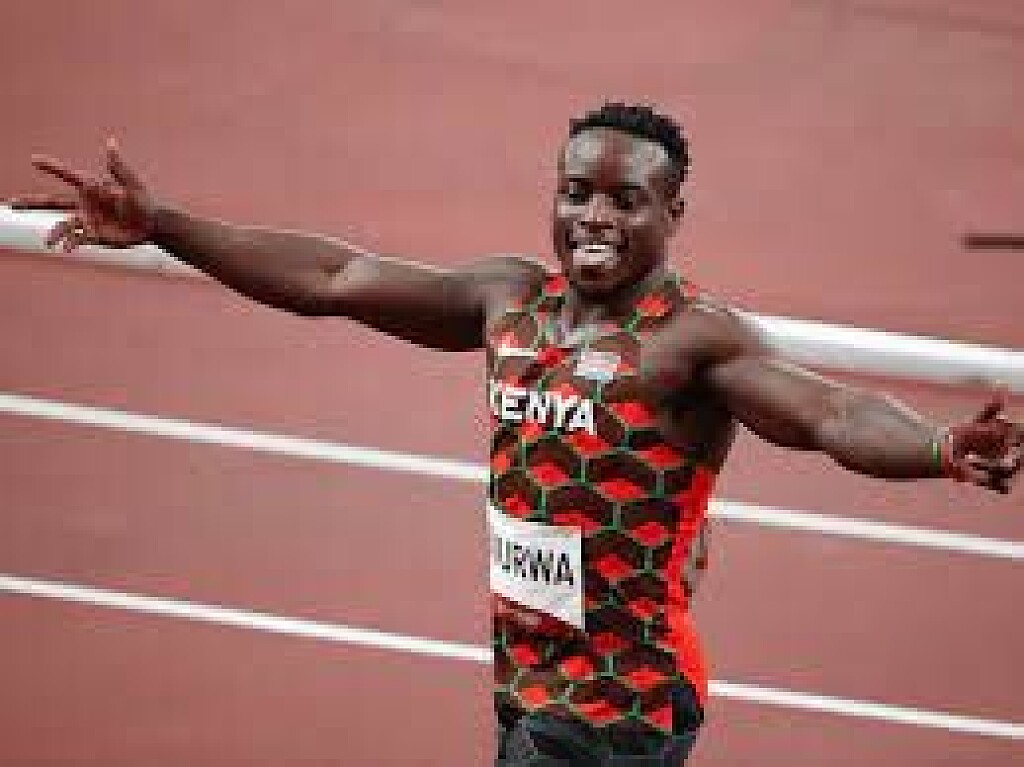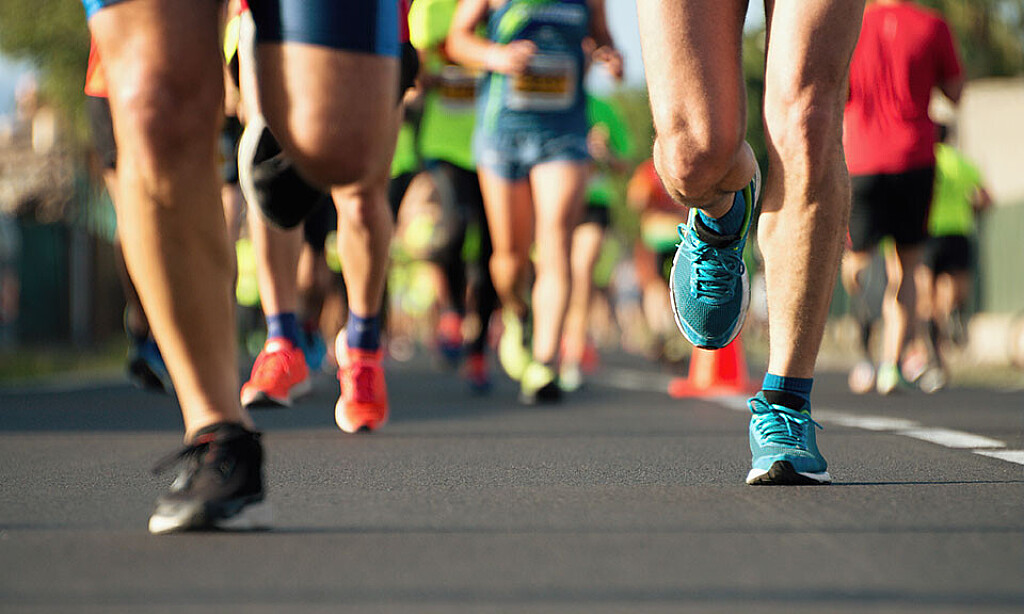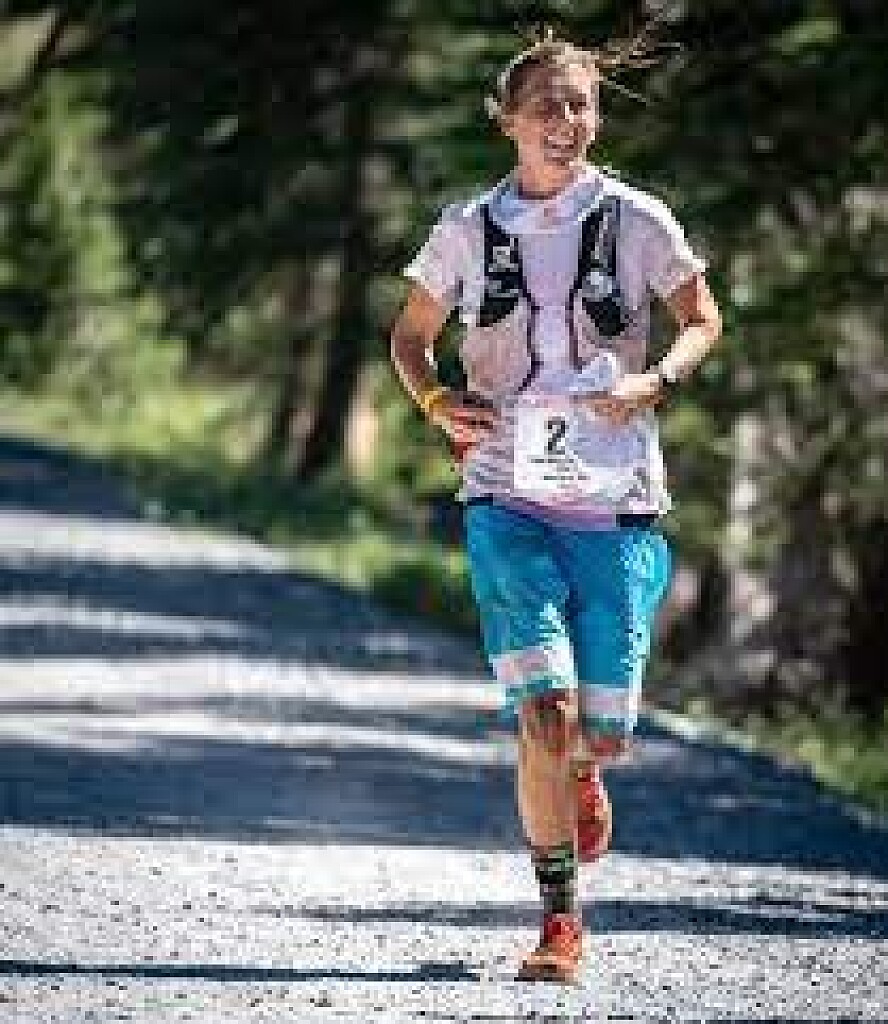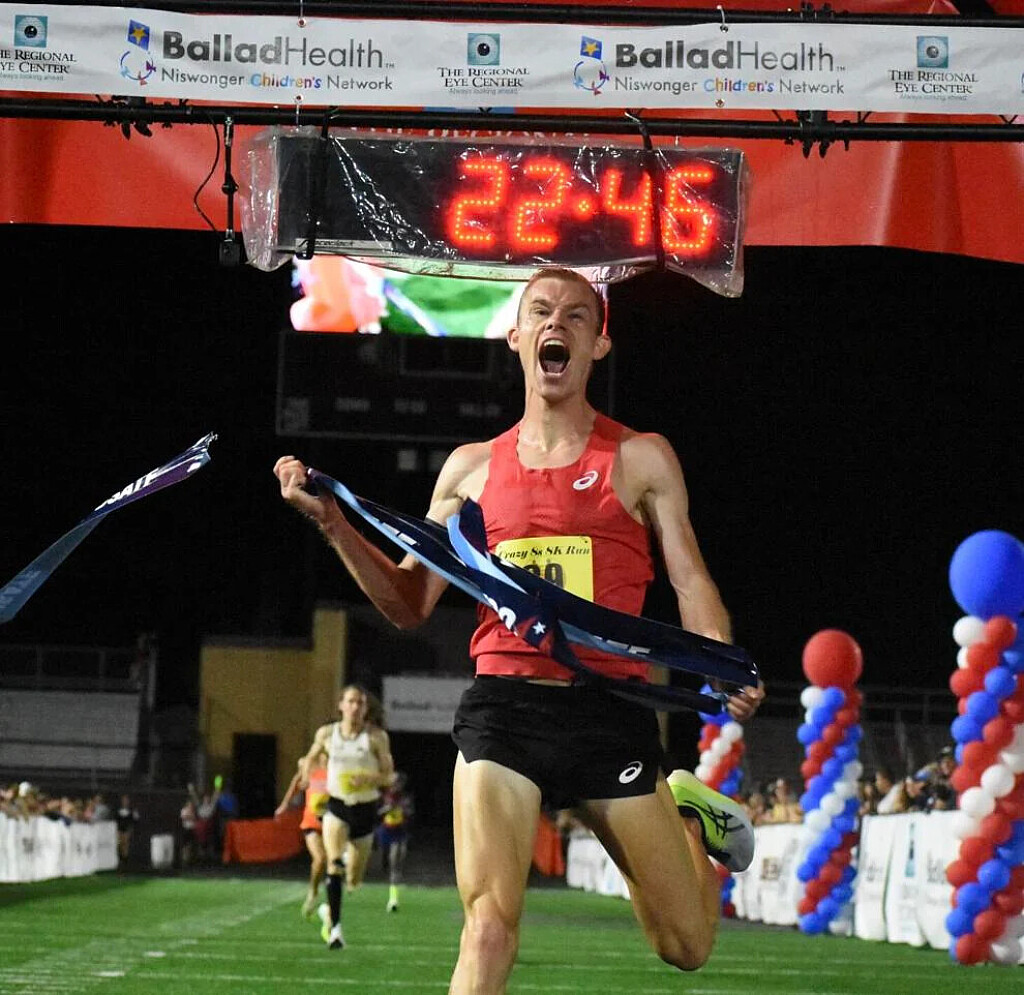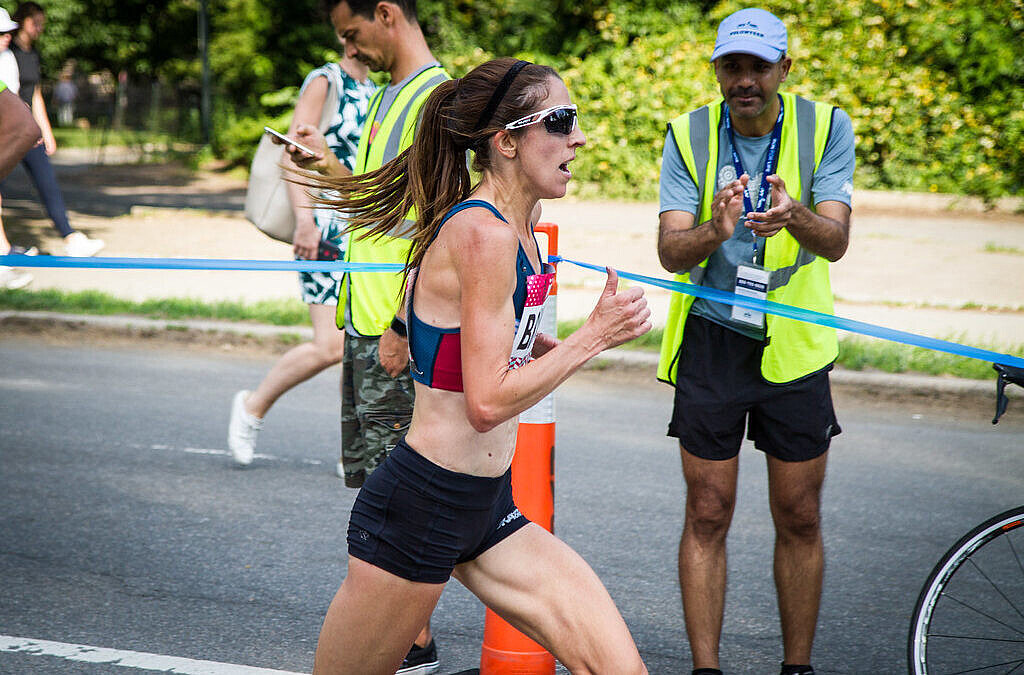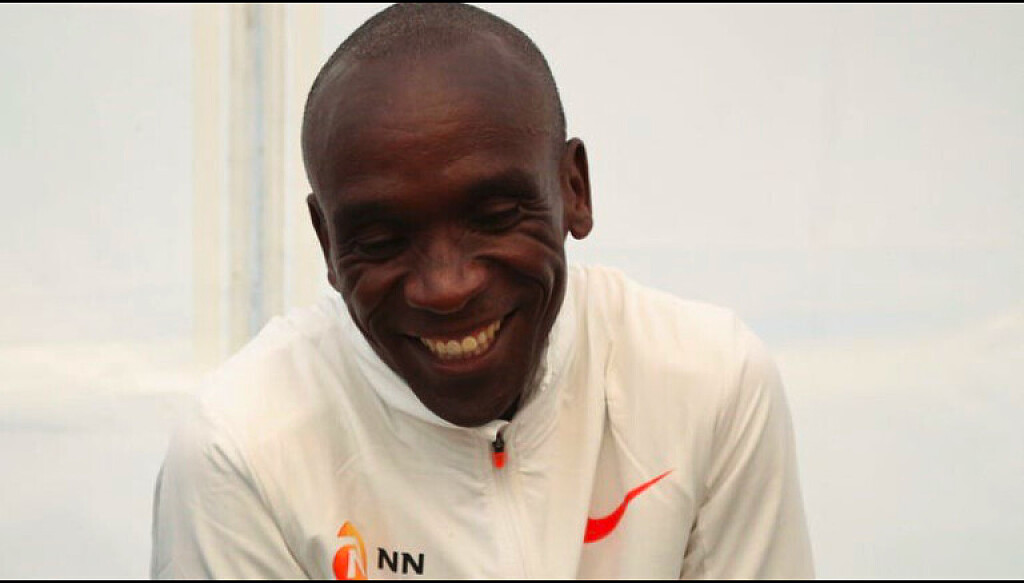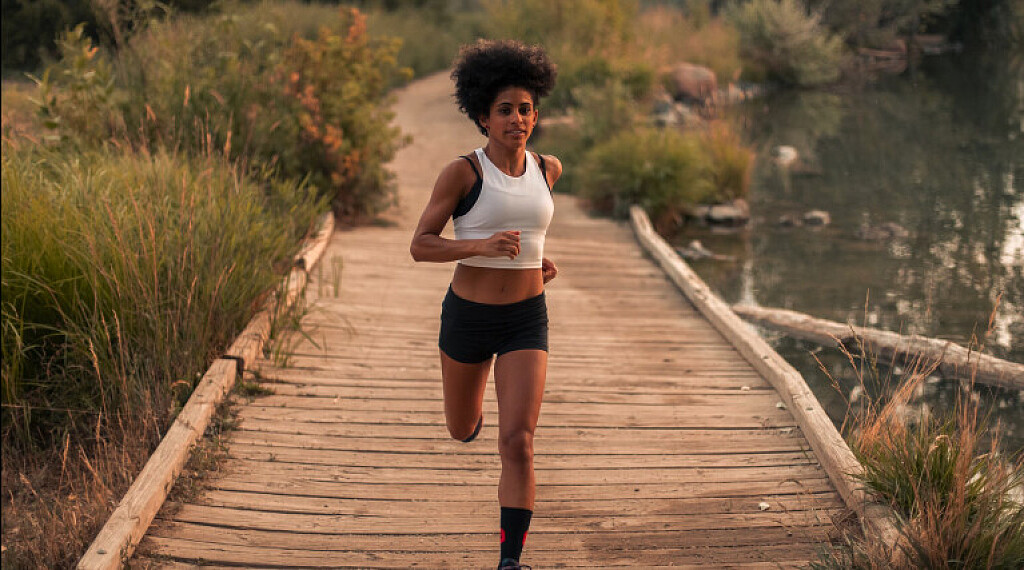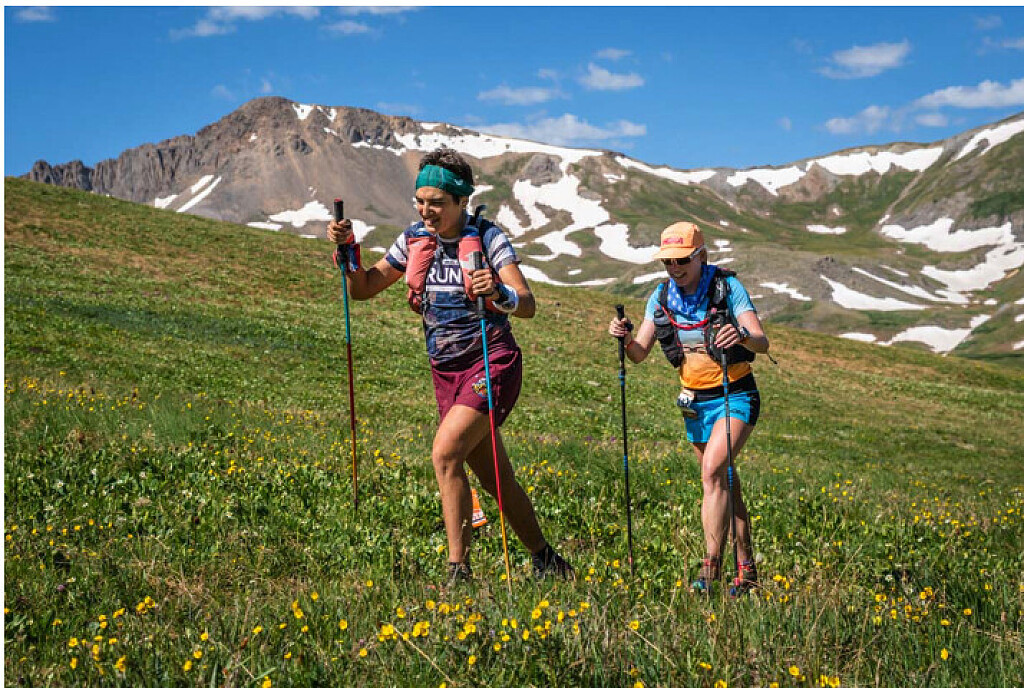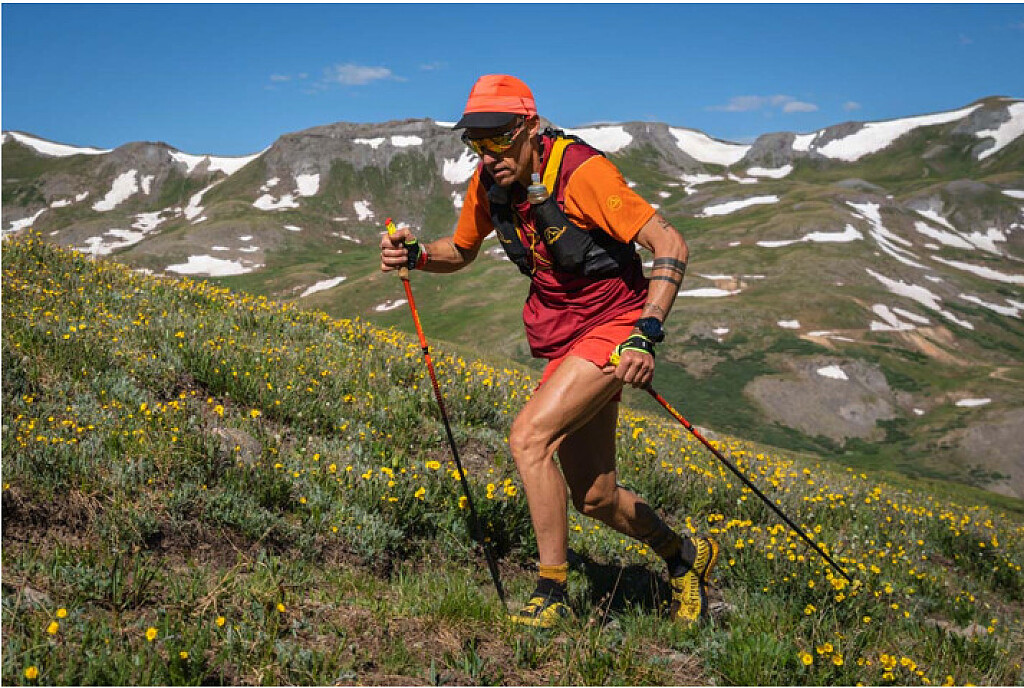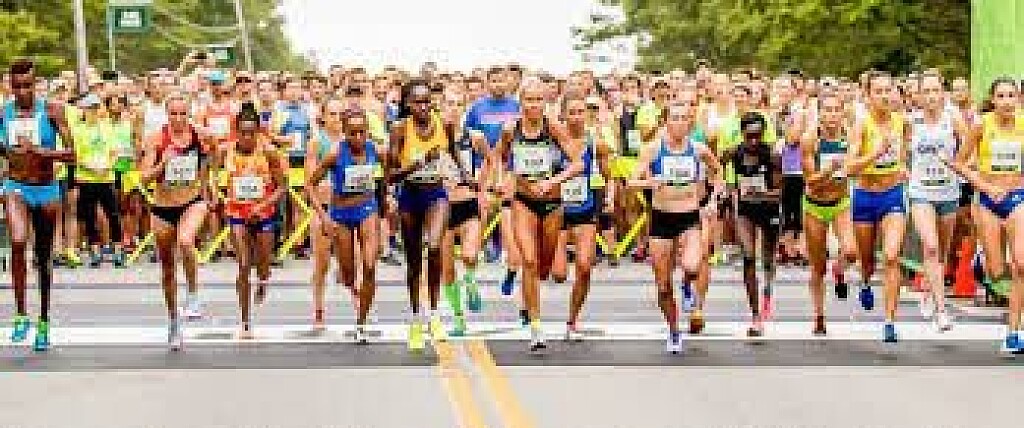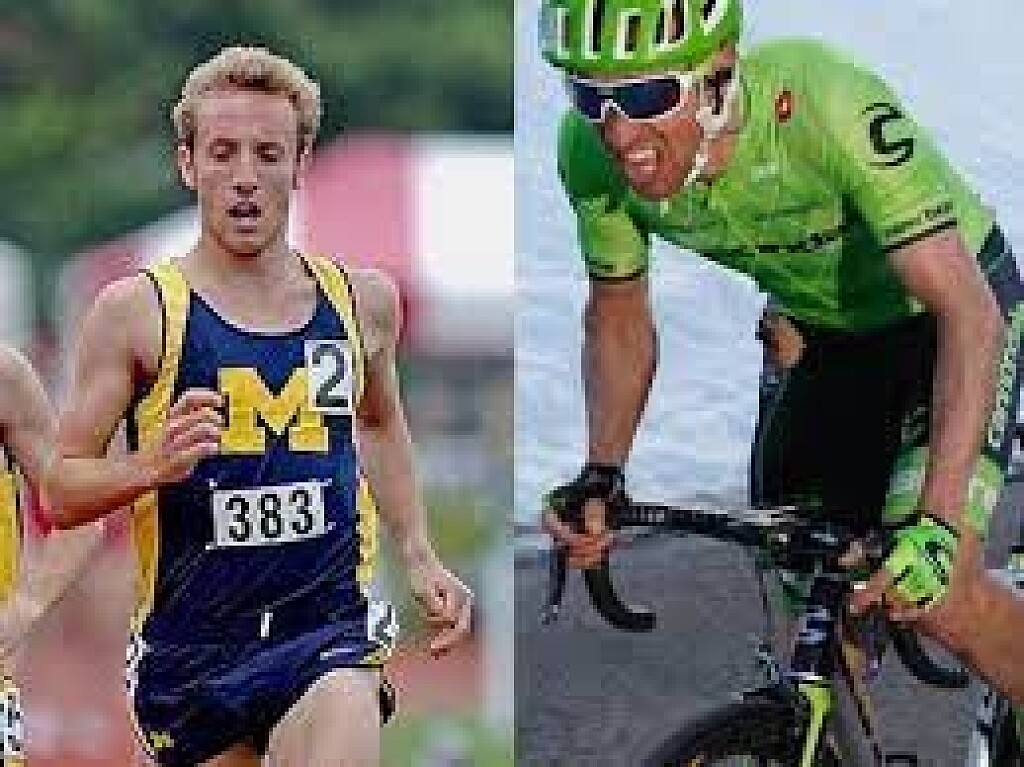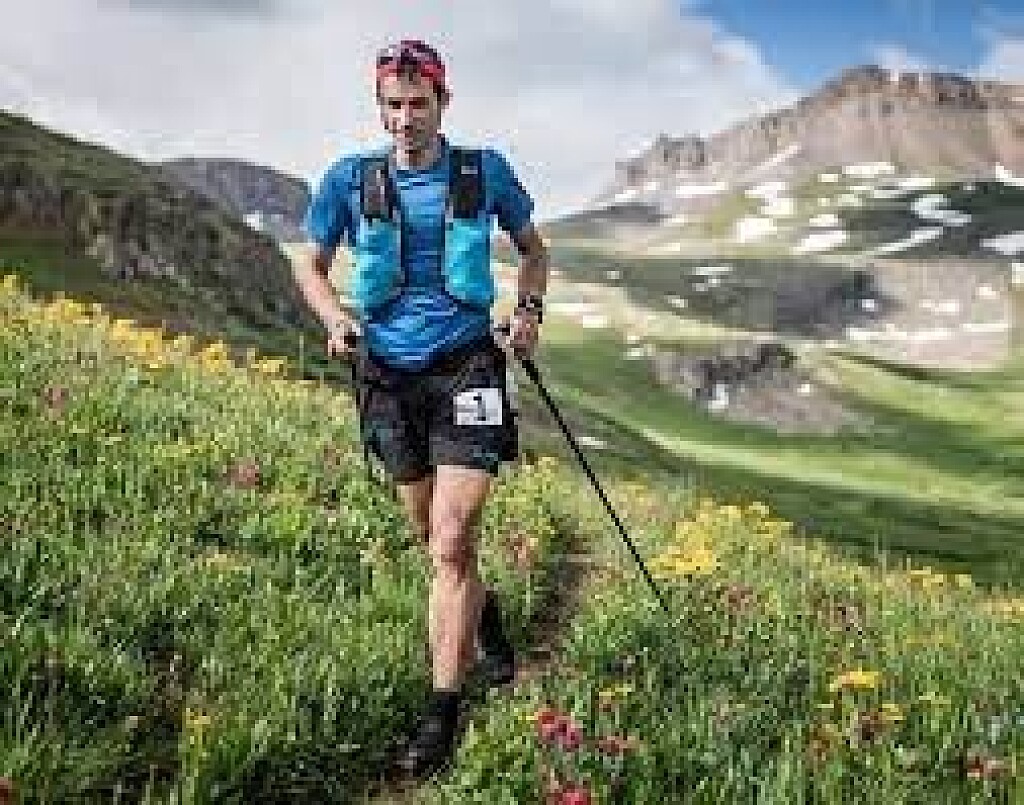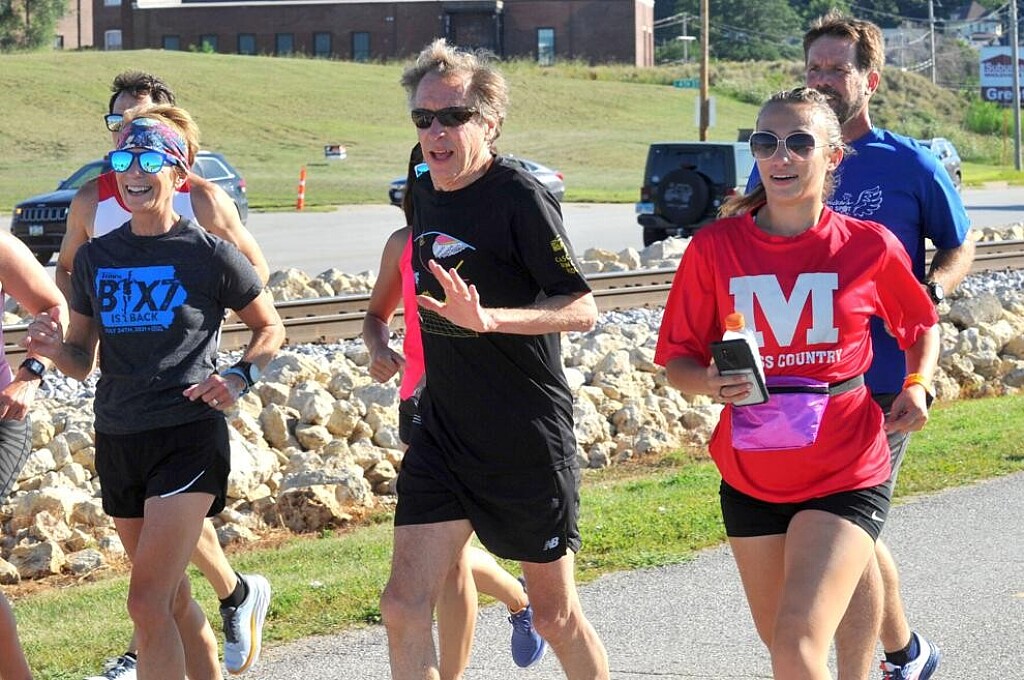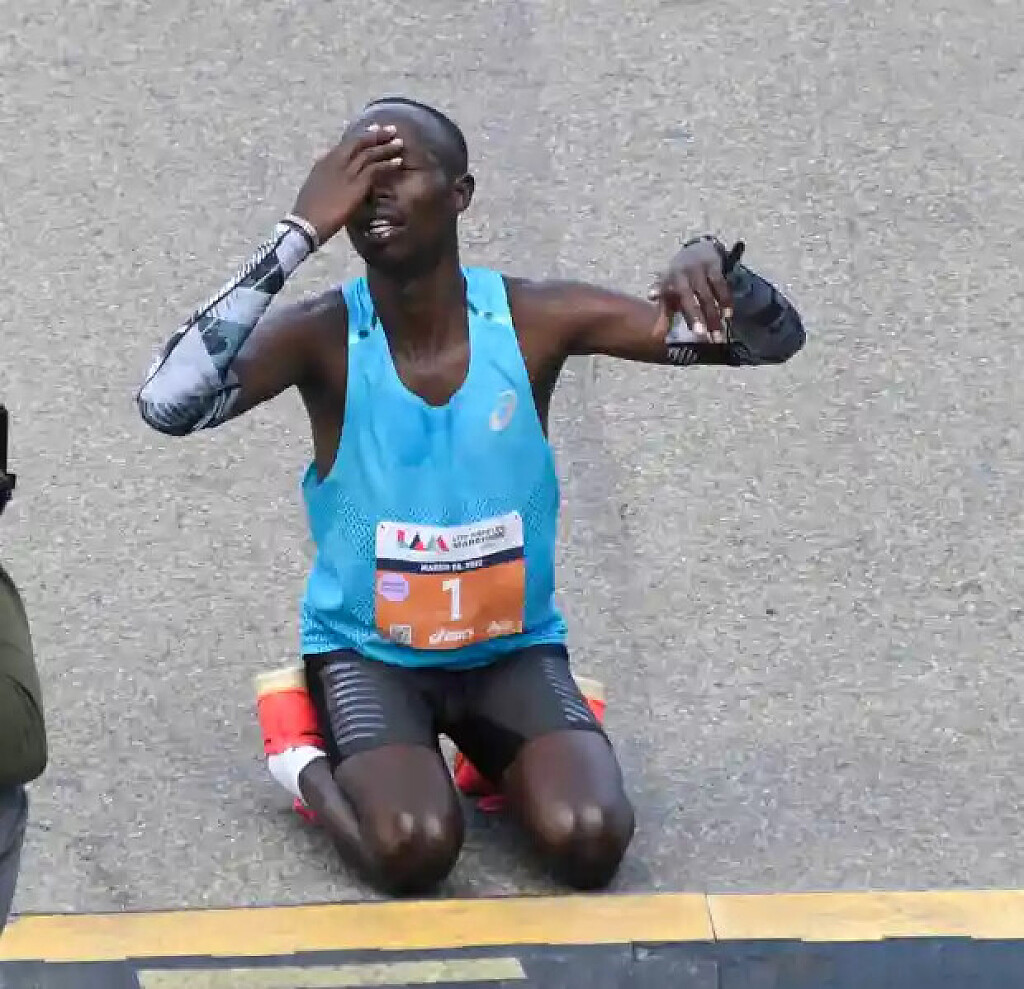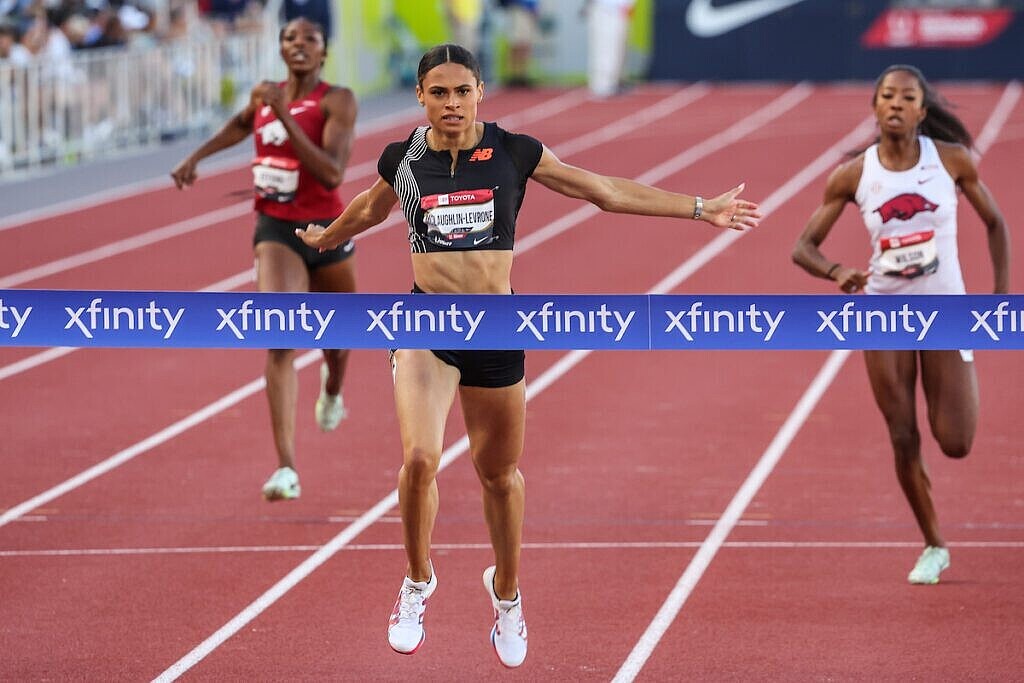Running News Daily
Running News Daily is edited by Bob Anderson in Mountain View, California USA and team in Thika Kenya, La Piedad Mexico, Bend Oregon, Chandler Arizona and Monforte da Beira Portugal. Send your news items to bob@mybestruns.com Advertising opportunities available. Over one million readers and growing. Train the Kenyan Way at KATA Running Retreat Kenya. (Kenyan Athletics Training Academy) in Thika Kenya. Opening in june 2024 KATA Running retreat Portugal. Learn more about Bob Anderson, MBR publisher and KATA director/owner, take a look at A Long Run the movie covering Bob's 50 race challenge.
Index to Daily Posts · Sign Up For Updates · Run The World Feed
Tigist Ketema set a course record to win the women’s contest, and USA’s Diego Estrada won the men’s wharf to Wharf race
The latest results from the 2023 Wharf to Wharf 6 Mile race, which took place on Sunday, 23 July, in the City of Capitola. This year was the 49th edition of the event, and the races were won by Ethiopia’s Tigist Ketema, who set a course record to win the women’s contest, and USA’s Diego Estrada, the winner of the men’s race.
Highlighting the 2023 Wharf to Wharf 6 Mile competition, which took place in California, was the record-breaking performance by Tigist Ketema, who clocked an impressive 29:51 to secure the victory. Her time was a new women’s course record, and she pocketed USD $4000 for her effort.
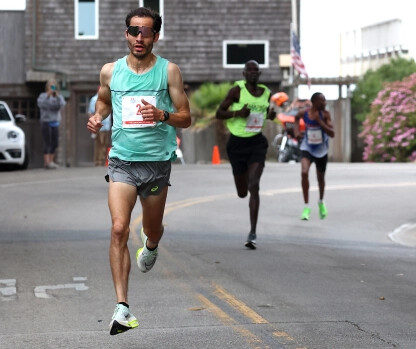
The previous Wharf to Wharf 6 Mile course record of 29:59 was set by Kenya’s Caroline Rotich in 2018.
Kenya’s Sarah Naibei ran a time of 30:13 to take second place behind Ketema to collect USD $3000, with third place going to Ethiopia’s Werkuha Getachew, who clocked 30:37 and earned USD $2000.
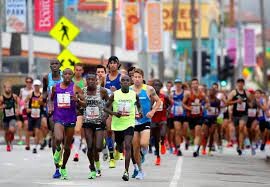
Meanwhile, USA’s defending champion Ednah Kurgat, who clocked 30:29 to win last year’s race, was only fourth this year in 30:38.
Diego Estrada Dominates Men’s Race
In the 2023 Wharf to Wharf 6 Mile men’s race, experienced runner Diego Estrada returned from his second-place finish to Emmanuel Bor last to clock 27:14 to run away with the title this year and earned USD $4000, plus an additional USD $1000 in bonus money.
Kenya’s Josphat Kipchirchir clocked in at 27:48 for second place, with his fellow countryman, Shadrack Keter, following home closely at 27:50 in third place. USA’s Colin Bennie (27:56) and Ben Blankenship (28:02) rounded out the top five men’s finishers.
(07/24/2023) Views: 702 ⚡AMPby Glen Andrews
Wharf to Wharf
Each year, on the fourth Sunday in July, thousands of runners from across America and around the globe return to Santa Cruz, California for the annual six-mile race to Capitola-by-the-Sea. First run in 1973 by a handful of locals, the Wharf to Wharf Race today enjoys a gourmet reputation in running circles worldwide. Its scenic, seaside setting, perfect weather, and...
more...Louisiana man Jarrett Leblanc runs 62-minute half-marathon on a treadmill
On Sunday, a Louisiana man took to the treadmill at his local gym in Lafayette, La., attempting to break the Guinness World Record for a treadmill half-marathon. Jarrett Leblanc, a 2020 U.S. Olympic marathon trials qualifier, clocked a time of 62:50 over 21.1 kilometers, breaking the old mark of 63:08 from 2020 and raising money for a non-profit organization that provides camps and programs for children with heart defects.
Leblanc had the speed on the treadmill set at a ridiculous 12.5 mph for nearly the whole challenge. According to local news, Leblanc was six seconds ahead of the record through his first 5K split (14:54) and built a 13-second cushion, hitting 29:46 through 10K. He ended up breaking the previous mark by 18 seconds. The previous treadmill record was held by U.S. 2:12-marathoner John Raneri, who placed fourth at the California International Marathon in 2022.
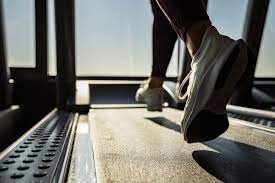
The 32-year-old told local news that his inspiration behind targeting the record came from a friend who broke this same record while running on a treadmill at altitude. “He broke the record at an altitude, so with me doing it at sea level, I knew I already had an advantage,” he said. “The thought of having a World Record attempt would not only bring the community together but also the entire world to get behind a great cause to help the children.”
Leblanc works full-time as a registered diagnostic cardiac sonographer at the Lafayette General Medical Center, and wanted to use his platform and passion to raise money for Camp Bon Coeur, a camp for children with hearts that have needed mending. Leblanc has so far reached nearly $10,000 of his $25,000 goal.
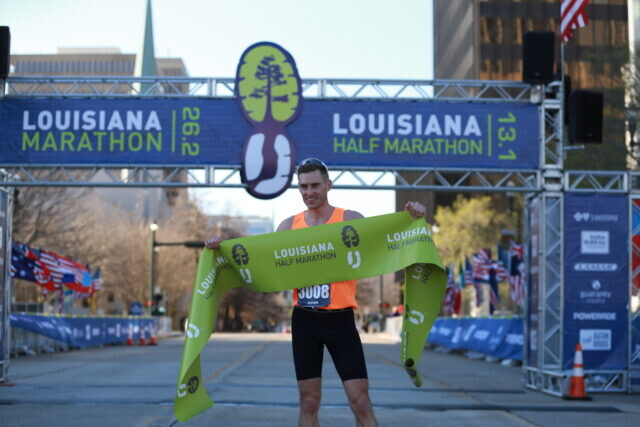
This world-record feat isn’t Leblanc’s first running accomplishment. In 2015, he became the first Louisiana native to run a sub-four-minute mile on Louisiana soil, clocking 3:59.95 in front of his friends and family in Lafayette. His success has also led him to qualify for the 2016 and 2020 U.S. Olympic Marathon Trials.
(07/24/2023) Views: 487 ⚡AMPby Running Magazine
Rai Benjamin eying world record performance at World Athletics Championships
USA’s 400 meters hurdler, Rai Benjamin, has his eyes set on the world record heading into next month’s World Athletics Championships from August 19-27 in Budapest, Hungary.
The record, 45.94 seconds, is currently held by Norwegian sprinter, Karsten Warholm.
The son of former West Indies and Antigua and Barbuda fast bowler, Winston Benjamin, Rai stopped short of revealing what targets he has set for the championships but said he believes it will take a record-breaking performance to beat Warholm in Budapest.
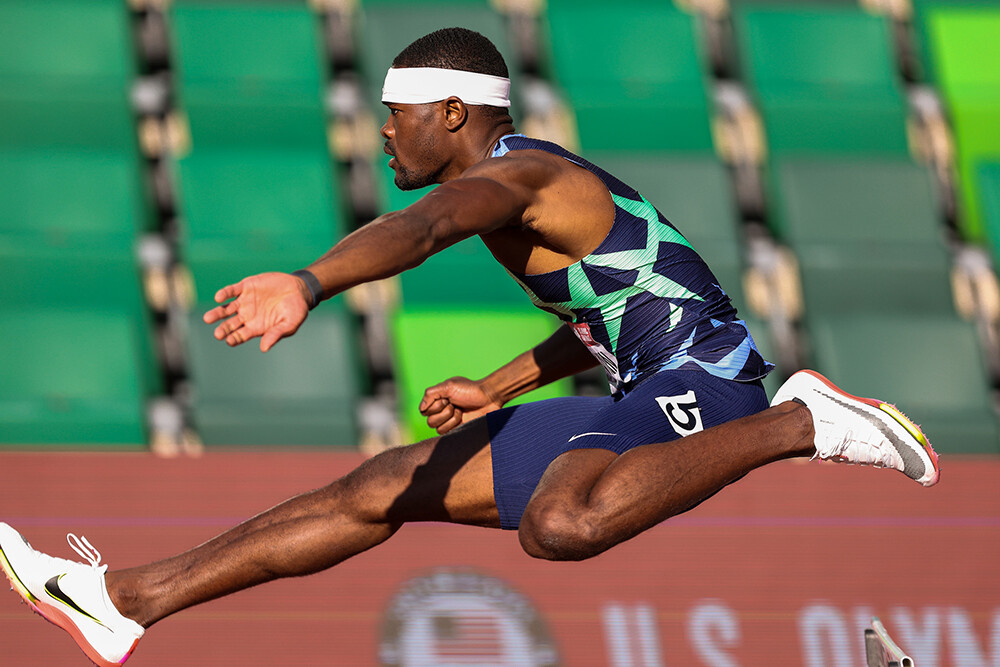
“Am not going to put it out there but I am looking for a sub world record mark because that’s what it’s going to take to win in all honesty because Warholm is in shape and I am in shape so it’s just about getting sharp now these next couple of days and fine-tuning a couple of things to get ready to go and do that,” he said.
Benjamin, who represented Antigua and Barbuda as a youth athlete, won a fourth straight US title in his signature event on July 9 at the 2023 US Track and Field Championships in Eugene, Oregon. In the final, he sped to his season’s best, a 46.62, to take the crown.
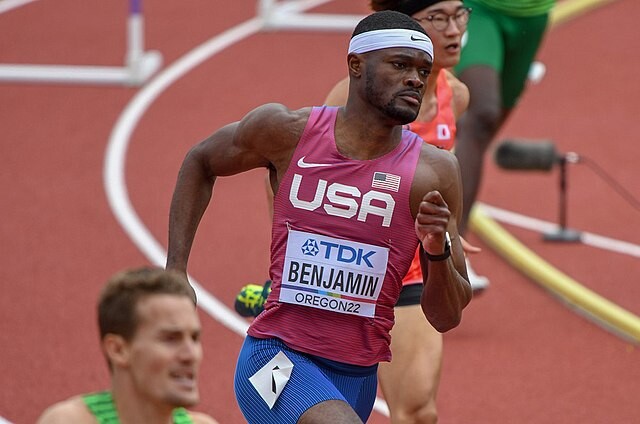
The athlete, who was speaking on the Good Morning Jojo sports show at the time, however revealed that he had struggled with an injury leading into the US event.
“I’ve been battling with a quad injury for the past three or four months so it’s been an interesting one because I was in great shape coming into the year where I opened up my season very well in the 400 and just preparing to do some big things this year.
“I had a quad injury after the first meet and then I had to go to Germany to get that [sorted]. After that we had USA’s [US trials] and I ran pretty fast there, so now it’s just about maintaining feeling good and training well,” he said.
Hoping to break the world record and become an Olympic champion in the near future, Benjamin said one of his goals is to fulfill his father’s dream of seeing him compete in the 200 meters.
“This was my initial plan, break the world record, win at the Olympics and then run the 200 the following World Championships but unfortunately nothing ever goes to plan.
“I am still trying to break the world record and then after I get done with that I’ll run the 200 and then I’ll run the 400 and go for that world record. I think I’ll run the 400 hurdles the last Olympics or the last two Olympic cycles,” he said.
In August 2021, Warholm broke the 400 meters hurdles record with a time of 45.94 seconds with Benjamin clocking 46.17 for the silver medal.
(07/24/2023) Views: 409 ⚡AMPby Neto Baptiste
World Athletics Championships Budapest 23
From August 19-27, 2023, Budapest will host the world's third largest sporting event, the World Athletics Championships. It is the largest sporting event in the history of Hungary, attended by athletes from more than 200 countries, whose news will reach more than one billion people. Athletics is the foundation of all sports. It represents strength, speed, dexterity and endurance, the...
more...New study shows how running affects the aging brain
Running is not only great for your physical health, but your mental and cognitive health as well. Regular exercise is necessary if you want to keep your brain healthy as you age, and new research from Florida Atlantic University explains exactly how it helps you maintain memory function as you get older.
For years, general cognitive decline and memory loss were regarded as an unavoidable part of the aging process. Thankfully in the last decade, research has shown that adult neurogenesis (the creation of new brain cells) is possible. The best way to ensure this happens? Regular exercise.

A study published earlier this year in the journal eNeuro demonstrated that long-term exercise increases the survival of adult-born neurons and modifies their network so they can continue participating in cognitive processes. In other words, the neurons you generated as an adult will continue to function effectively.
Running and the aging brain

The hippocampus and surrounding parts of the brain, which are responsible for learning and memory, are typically the first parts of your brain to start declining as you age. According to the researchers, running has been shown to increase the number of adult-born neurons in the hippocampuses of rodents, but they didn’t know if these new neurons remained integrated into the hippocampal network over the long term.
To find out, they tagged adult-born neurons in the brains of young adult mice, then came back to them after a six-month running regime (when the mice were middle-aged) to determine whether the neurons born in early adulthood remained integrated into the neural networks (i.e., whether they were still functioning effectively). The results showed that these old “new” neurons were still there, and still functioning.
“Long-term exercise profoundly benefits the aging brain and may prevent aging-related memory function decline by increasing the survival and modifying the network of the adult-born neurons born during early adulthood, and thereby facilitating their participation in cognitive processes,” said Henriette van Praag, one of the authors of the study.
The takeaways
Our brains are complex, mysterious organs, and there is still a lot we don’t know about how they function and how to keep them functioning well. This study is yet another reminder of the importance of regular exercise performed over a lifetime, and how that can impact your cognitive health. Runners, it seems, are a step ahead of the rest in terms of preventing cognitive decline, so if you needed a dose of motivation to get out the door today, perhaps that’ll do it.
“Our study provides insight as to how chronic exercise, beginning in young adulthood and continuing throughout middle age, helps maintain memory function during aging, emphasizing the relevance of including exercise in our daily lives,” said Carmen Vivar, a co-author of the study.
(07/24/2023) Views: 463 ⚡AMPby Brittany Hambleton
Tommy Rivers Puzey inspires in short film about his Boston Marathon
Beloved endurance athlete Tommy Rivers Puzey shares his “why” for running in a short film about his experience at the 2023 Boston Marathon, which the formerly-elite runner finished in 4:53:44–which is remarkable, considering that three years ago he was stricken by a rare and aggressive form of lung cancer that nearly killed him. “I don’t love to run fast, I just love to run,” Puzey says.
Puzey, or “Rivs” (as fans and friends call him), has for years been an inspiring force to the endurance world and casual runners alike. Once known for being an elite marathoner, ultrarunner and triathlete, Puzey now runs to celebrate his incredible recovery and to strengthen his body in case of a relapse. His illness and recovery are documented in a recently published book, Everything All At Once, written by his wife, Steph Catudal.
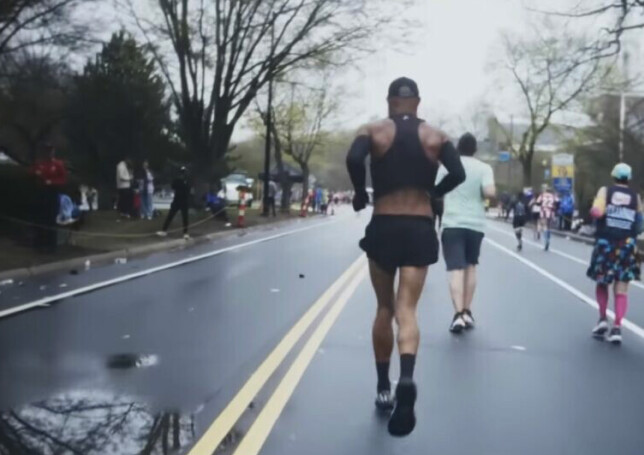
“Steph Catudal shares how her ultrarunner husband’s terrifying illness sparked transformation” — Canadian Running Magazine
View on the original site.
The short film poses the question of why we run: something Puzey can find a multitude of eloquent ways to answer.”It’s an expression of what we are as human beings,” Puzey shares in the film. “It’s what we’re meant to do.” Puzey, who lost 75 per cent of his lung capacity from his illness, has accepted and embraced his slower pace. “I don’t think anything has changed necessarily except that I’m not able to do it as fast,” he explains. Puzey returned to racing with the 2021 New York City Marathon, sharing high-fives and smiles as he walked the course with Catudal in 9:18:57.
The 2017 Boston Marathon was where Puzey ran his best, finishing in 2:18:57 for 16th place. In 2022, Puzey ran a vastly different, yet even more remarkable race. Due to his reduced lung capacity (and despite looking incredibly fit) Puzey must rest for 15-20 seconds for every 30 seconds of running, and he still manages to pull off a sub-five-hour finish.
Puzey explains that post-illness, the draw to the sport remains the same to him. Returning to the level of fitness he formerly had is not the goal; rather, he wants to “do everything [he] can to reach [his] greatest new potential.” Puzey has so many fans for a reason–he comes across as thoughtful and genuine and speaks with humility and grace. The film will have you pondering your why, and leave you inspired by a runner who never gives up.
(07/23/2023) Views: 801 ⚡AMPby Running Magazine
Strava unveils two new game-changing features
Attention Strava subscribers! Brace yourselves for two cutting-edge updates coming to the world’s most popular social media app for runners. These game-changing features will forever alter the way you use the app. With the new Waypoints feature, you can now draw and create your route, adding specific stops along the way. Plus, the Best Efforts feature allows you to view your top 10 fastest runs, tracking your progress like never before.
Draw your route with Waypoints
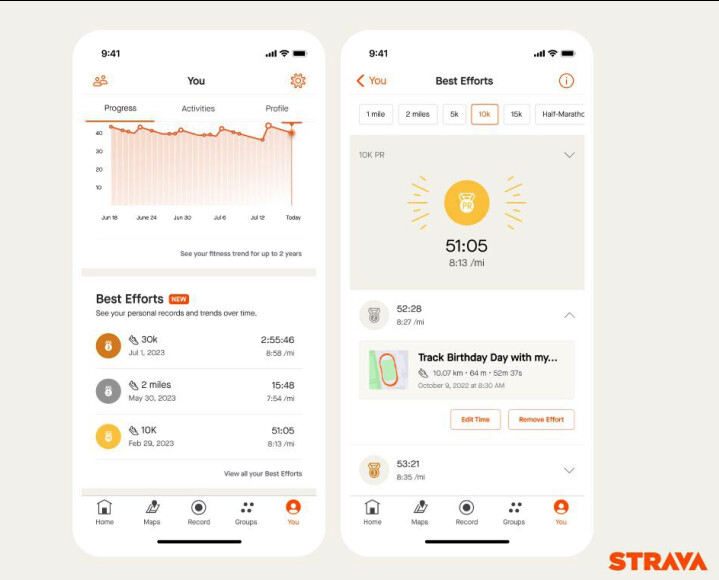
Many Strava users have eagerly awaited an upgrade to the route-designing feature, and their wishes have been answered with the introduction of the Waypoints feature, set to revolutionize your route-planning experience. With Waypoints, placing specific stops between the start and finish becomes a breeze, thanks to the new waypoint button and long-pressing on the map. This feature will build a route in the vicinity where you want to run, displaying specific viewpoints or landmarks en route.
“Strava adds Spotify integration in new update” — Canadian Running Magazine
View on the original site.
View your Best Efforts
Progress tracking on Strava has never been easier, thanks to its Best Efforts feature, now available for running. This new update brings an insightful experience, showcasing their top 10 efforts in distances ranging from one mile to 50K. The Best Efforts feature allows for effortless comparisons of your achievements, offering a glimpse of your progress over time. Strava subscribers can access their Best Efforts through the Progress tab on their profile, making it a breeze to stay motivated and on track.
Hold on tight, these exciting new updates are exclusively available to Strava subscribers. If you haven’t joined the club yet, now’s the time to unlock a world of endless possibilities and take full advantage of your training data.
(07/23/2023) Views: 470 ⚡AMPby Running Magazine
What is the UTMB? Meet trail running’s most difficult race
We answer all of your questions about this hellacious footsport event
If you’re starting to dip your toes into the crazy sport of ultrarunning, a couple of things will happen. First, you’re going to need several pairs of the best trail running shoes in rotation at any given time to put up with all those miles pounding rocky trails, and second, it won’t be long before you hear mention of the UTMB.
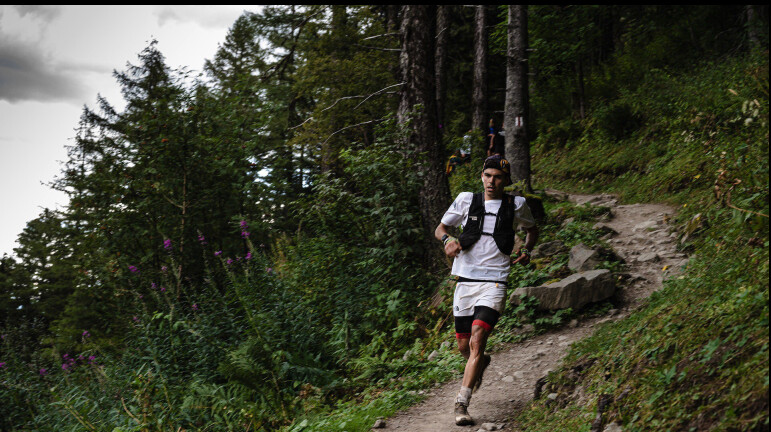
In fact, I recently attended the Arc’teryx Alpine Academy in Chamonix which holds a number of trail running clinics, and over the course of four days it was rare to have a conversation where the UTMB didn’t come up. Other participants in the academy wanted to know if our mountain guides had run it, how many times and whether they liked it (they don’t, considering it a tourist event) and mountain guides were keen to complain about how busy it made their favorite running trail.

But what is the UTMB exactly? Is it the ultimate goal for all trail runners? Why is it so hard? Here, we answer all of your questions about this hellacious footsport event.
What is the UTMB race?
UTMB stands for Ultra-Trail du Mont Blanc and is considered one of the world's premier trail ultra marathons. This demanding annual event follows the route of the Tour du Mont Blanc, a classic long distance hiking trail which circles the Mont Blanc Massif over 106 miles and passes through France, Switzerland and Italy. The UTMB begins and ends in Chamonix and is regarded as one of the most difficult races in the world.
The race takes place on the last weekend of August or first weekend of September and is today the ultimate in a series of events that take place around the world. Runners from all over the world aspire to compete in the UTMB. In the first year of the race, there were 700 participants, but these days, participation is capped at around 2,300 runners and other events have been created to allow for more participation.
The maximum cutoff for the race is 46.5 hours. In 2022, Kilian Jornet became the first to complete the UTMB in less than 20 hours (check out his race data to find out how he managed it) but most mere mortals can expect to have to run for two days and two nights to complete the race. Better bring some running gels then!
How does the UTMB race work?
Due to the event’s extreme popularity, you need to qualify to run the UTMB. That involves accumulating points through qualifying trail races over a two-year period. Qualifying races take place all over the world, from elsewhere in the Alps to Snowdonia, California, Mexico, Hong Kong and Australia. So if you’re serious about participating, you’ll have lots of time to train.
For each event you participate in and complete you’ll receive one running stone, which you can then enter into the lottery to be selected. You can enter the lottery at the UTMB website.
Why is UTMB so hard?
Besides the fact that at over 100 miles, it’s very long, competitors in the UTMB are also looking at 32,940 feet of elevation gain. In comparison, over roughly the same distance you could run the Leadville 100 in Colorado and gain only 11,000 feet (though at much higher altitude) or the West Highland Way in Scotland where you’d gain 10,300 feet.
The highest point of the route is 8,743 feet, which you’ll reach twice, in both Switzerland and France. That’s not extremely high altitude and it’s unlikely you’d experience altitude sickness at that height, but you’ll definitely notice shortness of breath and more challenging conditions, especially if you’re not already used to this altitude.
What you can also expect is more extreme conditions that come with trail running in the Alps. The altitude combined with the season means that the days might be swelteringly hot, while the temperatures at night could drop down around freezing at night.
How much does it cost to enter UTMB?
In 2023, the UTMB itself cost €335 to enter, plus administration fees. Of course, you’ll also have to pay registration fees for your qualifying events too. Your race will also include the cost of traveling to and from Chamonix, and accommodation while you’re there, but on the plus side the aid stations will be on hand to feed you during the race so you can save a little on those pricey Chamonix restaurants.
How many people have died in UTMB?
Sadly, deaths do occur in ultrarunning events and it’s perhaps more remarkable that for 17 years, no fatalities occurred during the UTMB, which not only places runners’ under extreme physical stress but entails a lot of night running. There have now been two deaths of runners in the UTMB, occurring in 2021 and 2022, both as the result of falls.
Do people sleep during UTMB?
Some runners somehow manage to do the UTMB without sleeping at all while others do sleep, but they’re not carrying a bivy sack and grabbing eight hours if that’s what you’re wondering. Sleeping during the UTMB looks like cat napping, and according to a 2015 study of 17 UTMB runners, the average time spent resting was between 12 and 17 minutes in total, and hallucinations were a common complaint, understandably.
Can you walk the UTMB?
Can you walk the UTMB? Well, yeah you could. Since the race is 106 miles and you have 46.5 hours to complete it, you technically could walk at a 2.3 mile per hour pace without any breaks and make the cutoff. Obviously though, you could just walk it at a time when the race isn't going on, save yourself €335 and enjoy far fewer people on the trail.
In all seriousness though, if you don’t already know, ultrarunning is actually hiking, and you’re not going to be running at the same pace you do on the tarmac back home. Even Jornet ran at an adjusted pace of around five miles per hour which isn’t exactly turbo speed (though it is if you maintain that for 20 hours). You’ll most likely walk the uphills and slow down or walk for rest periods, making up time on the downhills. And sorry, there aren’t many flats to speak of.
(07/23/2023) Views: 588 ⚡AMP
Apple Watch helps save Norwegian trail runner's life after a fall
A trail runner in Norway has credited the existence of the Apple Watch for being able to call an ambulance after falling during a run.Following a holiday, investment director Robert Naess decided to go for a trail run, with his time off prompting him to run faster than usual. However, an accident on the run led to a hospital visit, one helped by the Apple Watch.
After starting at 7 A.M. outside of Bergen, Norway, 59-year-old Naess slipped at one bend, despite being a keen runner and having ran the route a number of times.

The skid had Naess fall chest-first into the edge of a wall, before landing on the floor. Verdens Gang reports the impact cracked multiple ribs, and collapsed one of his lungs.
Due to ending up in severe pain and with breathing problems, he could not pull out his iPhone to call an ambulance. However, he was wearing an Apple Watch and was listening to podcasts via AirPods.
Rather than wait for Fall Detection to kick in, he placed the call to the emergency services himself. Approximately 15 minutes later, he was attended to near the road and taken to Haukeland Hospital.
During the 15-minute wait, Naess notes over 100 cars drove past his location. He reasons that he didn't get any assistance because it was hard to see him from the road, and that it was difficult for traffic to stop there, either.
Doctors confirmed the collapsed lung and broken ribs, before treating abrasions on his face and legs.
After recovering from the ordeal, Naess claims the Apple Watch saved his life, since he had no opportunity to move and was in a critical state. He adds that the next time he runs that route, he will be extra careful at that particular bend.
The Apple Watch has repeatedly been praised for saving lives and helping wearers in tough situations. In June, an Ontario man was helped thanks to the Apple Watch Fall Detection feature, while a woman in Cincinnati was saved from a high-risk blood clot.
(07/23/2023) Views: 526 ⚡AMP75-year-old Jeannie Rice blows away the 10000m world record for the 75-79 age group.
She did it again. On Thursday (July 20), the amazing Jeannie Rice, 75, broke the W75 World Record in the 5000 Meter Run. Jeannie Rice won Gold in Greensboro in the W75 5000 meters with a time of 22:41.46. By our calculations that betters the World Record of 22:53.55 set by British icon Angela Copson in Tampere last year. So, Greensboro Nationals may have already yielded a new World Record and the first morning of the competition isn't even over yet.
Today (July 21) she broke the W75 World Record in the 10000 Meter Run here in Greensboro, pending ratification. Jeannie ran 46:53.07. The existing W75 World Record is 50:00.93, set in 2005 by Melitta Czerwenka of Germany. Congratulations, Jeannie!
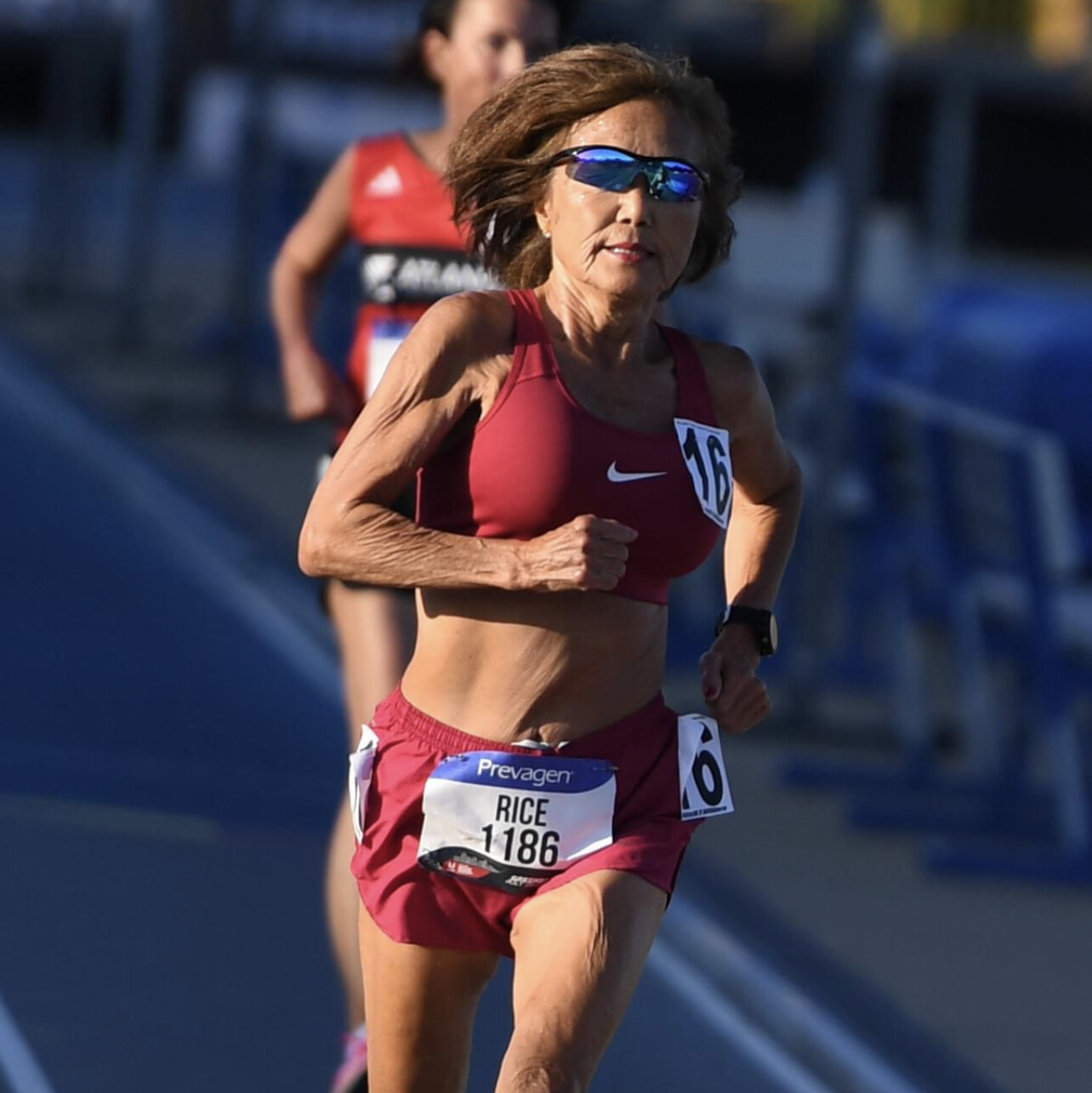
The women elite talent will be the strongest in the event’s history, at the 51st Wharf to Wharf race Sunday morning
The lineup of elite talent will be deep and the storylines numerous when runners of all ages and skill levels line up for the start of the 51st Wharf to Wharf race Sunday morning.
The excitement and anticipation will be palpable. For some, the goal is to complete the annual six-mile race to Capitola. Others will be costumed, poised to update their social media apps with colorful photos, full of smiling faces.
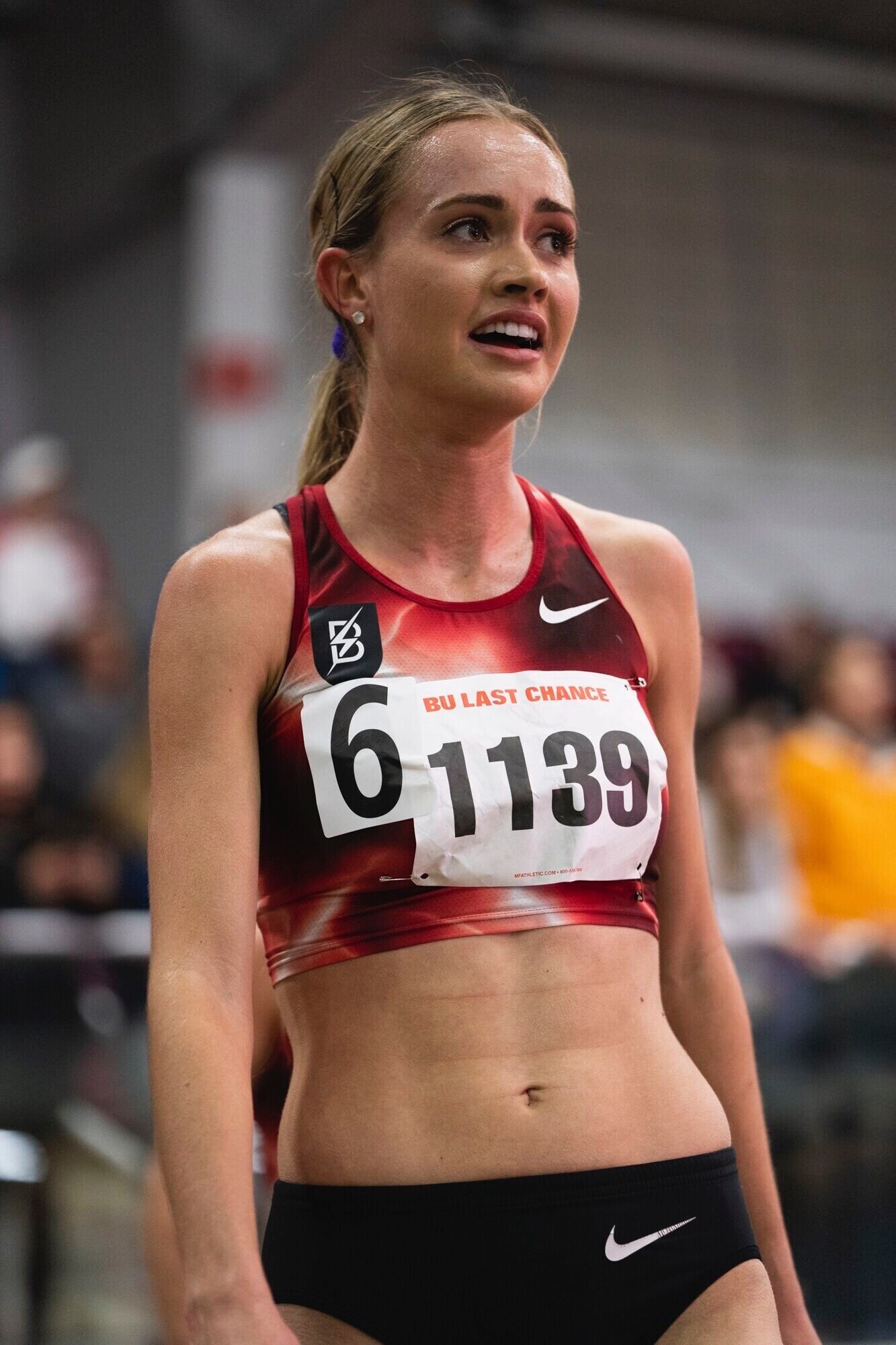
There will also be a more competitive bunch of runners who look to reach the Capitola Wharf in personal-record time, or post a top-100 finish in their gender division to claim elite Wharf to Wharf apparel.
And there will be a select few looking to take first, well ahead of the sea of runners, which has been capped at 15,000.
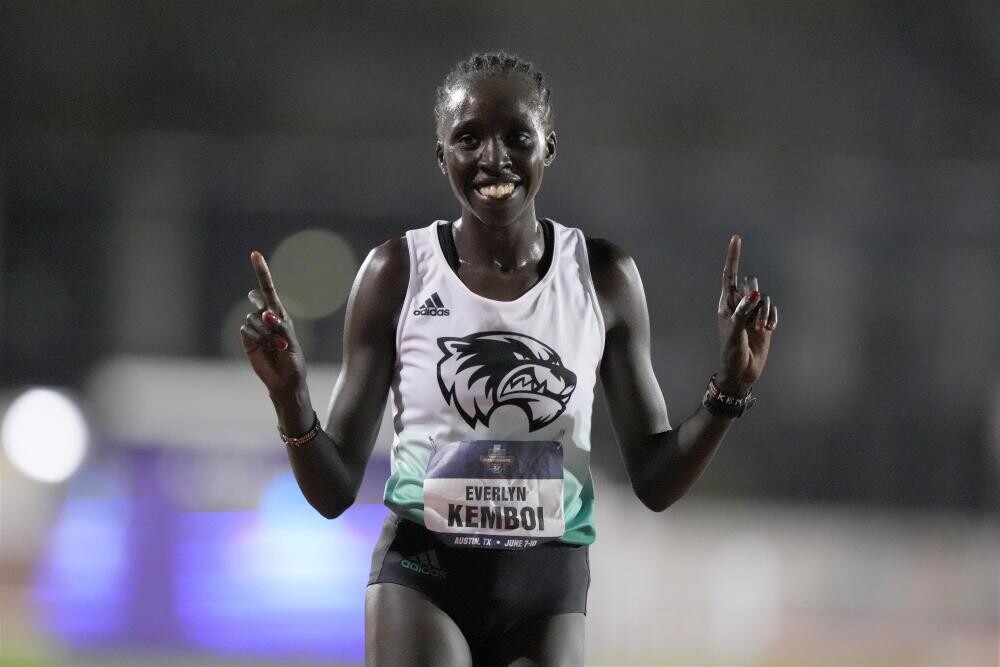
Among them is defending women’s champion Ednah Kurgat of Colorado Springs, who looks to again secure the Mayor’s Cup and $4,000 prize awarded to the winners.
Repeating as champ won’t be easy. “The women’s field is arguably the strongest in the event’s history,” said Dane Gradone, the event’s elite athlete coordinator. “It’s completely (awesome).”
Kurgat’s solid ’23 season includes a win at the USATF Cross Country Championships in January and a sixth-place finish in the 10,000-meter race at the USATF Outdoor Championships earlier this month.
Everlyn Kemboi, the ’23 NCAA champion in the 10,000 and runner-up in the 5,000, should contend for supremacy. Also entered are Kenyan Mary Munanu, last year’s Wharf to Wharf runner-up, Ethiopian Werkuha Getachew, the runner-up at last year’s World Championships in the steeplechase, and fellow Ethiopians Tigist Ketema and Weynshet Ansa, both multiple-time national champions. Kenyan Sarah Naibei is a world-class runner on the roads, and a 52-minute 10 miler. Annamaria Kostarellis is a freshly minted NCAA All-American.
The local contingent is equally impressive. It includes former Santa Cruz High and Oregon State University standout Mari Friedman, the top female local finisher in ’22.
“I’m super excited,” Friedman said. “It’s one of my favorite races. It’s a holiday for me.”
Friedman’s goal? “To race happy and have fun,” she said, noting her best results come when she follows that plan.
Back in the field for the first time since 2014 is Nike runner Vanessa Fraser, a Scotts Valley High and Stanford University alumna. She’s coming off a 12th place finish in the 10,000 at the USATF Outdoor Championships.
Fraser, who lives in San Francisco, is in the process of transitioning to more road races. She returns to the one that got it all started for her.
“I’m excited to mix it up and see how I can finish and be competitive,” said Fraser, who has qualified for the 2024 U.S. Olympic Team Trials on Feb. 3. “Top 10, that’s a good goal. Anything higher would be great.”
Ashlyn Boothby, an incoming senior who has broken most of Fraser’s records at Scotts Valley, will compete in the race for the first time. She’ has been at camp with the Falcons in Truckee, doing altitude training and bonding with teammates.
“This is super special to be in the same race as Vanessa Fraser,” Boothby said. “She’s my idol. I don’t know if I’ll be able to keep up with her.”
The men’s field is primed to produce another exhilarating finish.
Salinas’ Diego Estrada, an Alisal High alum and former Olympian in the 10,000, finished second in the ’22 Wharf to Wharf and expects himself to be in title contention again after upping his training. He finished in 27 minutes, 18 seconds last year, two seconds behind champion Emmanuel Bor.
“I’d like to break 27 (minutes),” said Estrada, who is running 90 miles a week. “If I lose and break 27, I’ll be really happy. And if I win and don’t break 27, I’ll be really happy. But there’s so much talent in our area, I don’t know what will happed til we get to the downhill.”
Estrada will be tracked closely by a fair share of challengers and hardened road running veterans.
Fellow Olympian Ben Blankenship, who currently lives and trains in Eugene, Oregon, is also in the field. So is established marathoner Colin Bennie of San Francisco, the top American at the Boston Marathon in 2021. He finished ninth in Capitola last year.
This year’s International contenders include a trio of experienced Kenyans, James Ngandu, Josphat Kipchirchir, and Shadrack Keter, who have all run nearly an hour in the half marathon and racked up numerous racing honors.
Aptos’ Jack Rose is back after finishing as the top local male finisher in ’22, but a handful of young collegians will be gunning to unseat him. Among them are former Scotts Valley star Jeremy Kain, who runs for Duke University; Julian Vargas, a St. Francis alum who runs for Xavier University; Aptos talent Trent Nosky, a recruited walk-on for Colorado State University’s cross country and track programs; and Patrick Goodrich, a former Scotts Valley standout who competes for Cal Poly-SLO’s club team.
Rose, winner of the Ventura Marathon in February in a PR time of 2:21:39, said the quality of his workouts have improved since he finished as top local last year. He excited to hear the bands stationed along the route and hear spectators shout support as he passes them.
Kain is hoping to unseat Rose as top local. He’s increased his miles from 40 a week to 65-70. “I do think I’m in pretty good shape right now,” he said.
Experience is key, and Kain is competing in the race for the first time. “I’m kinda ashamed of myself that it’s my first year,” he said. “It never worked in my training block, but, this year, getting out there and giving it my all is going to be exciting.”
(07/22/2023) Views: 705 ⚡AMPby Jim Seimas
Wharf to Wharf
Each year, on the fourth Sunday in July, thousands of runners from across America and around the globe return to Santa Cruz, California for the annual six-mile race to Capitola-by-the-Sea. First run in 1973 by a handful of locals, the Wharf to Wharf Race today enjoys a gourmet reputation in running circles worldwide. Its scenic, seaside setting, perfect weather, and...
more...Try an effort-based workout to switch things up
Runners love numbers. We track our heart rates, our weekly mileage, and, of course, our pace during workouts. Knowing exactly how fast you’re going during a run or workout has a lot of benefits, but it’s easy to get hung up on the numbers and stop listening to our bodies.
It can also create a stressful experience when we’re not hitting the pace goal we set. If you’re in a slump or just trying to get back in touch with your body, try this run-by-feel interval session, and have a little more fun with your workout.
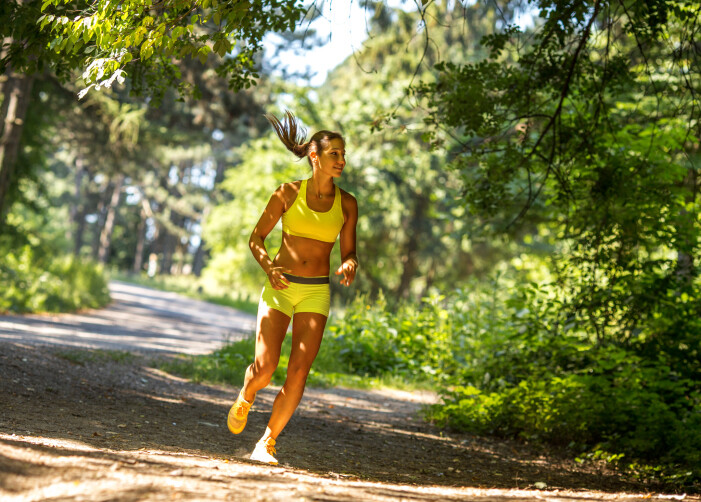
Technically, you can make almost any workout a “run by feel” workout if you just ditch the GPS, but this one is a great gateway into tech-free running, because the intervals are relatively short. Many runners find it difficult to stay focused and run consistently if they’re not used to running by feel , so the shorter intervals mean you don’t have to focus as long.
Without a watch to gauge how fast you should be going, you’re going to use some effort-based cues to know if you’re running the correct pace. Ideally, you should run each repeat so that the last 20-30 seconds feel tough–like you really want to stop or slow down, and you have to dig in mentally to maintain your pace. This is difficult to do out of the gate, so use the first set of intervals to try to dial into your pace, and then stick to that for the rest of the workout.
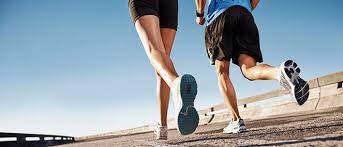
The workout
Warmup: 15-20 minutes of easy jogging
Workout: 2-4 sets of 3 minutes, 1:30 rest; 2 minutes, 1 minute rest; 1 minute, 2 minutes rest
Cooldown: 10-15 minutes’ easy jog, followed by light stretching.
(07/22/2023) Views: 481 ⚡AMPby Brittany Hambleton
PUMA Is Using Nitrogen Gas to Improve Your Stride
The ForeverRUN Shoe with NITRO technology could help you develop a healthier running form
One thing is true when it comes to picking an everyday running shoe: it’s an incredibly personal choice. With so many options out there, upgrading your footwear can be a daunting task. So let’s simplify things. If you want lightweight, responsive, and durable shoes to support your daily mileage goals, PUMA has the perfect match. Here’s why the ForeverRUN with NITRO™ technology is your next everyday running shoe.
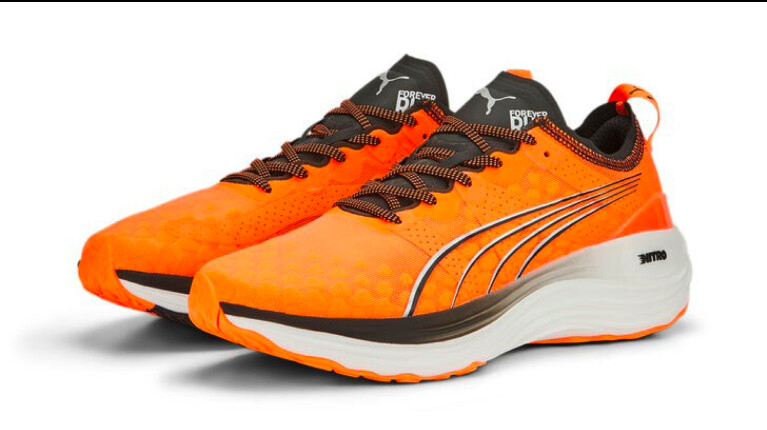
Regardless of your mileage or pace, having the right technology underfoot is key to maximizing the time you spend running. Every running shoe in the PUMA performance lineup is equipped with innovative NITROFOAM™ technology, which is designed to deliver responsiveness, durability, and comfort.
PUMA created its NITROFOAM™ technology through an innovative process that infuses the shoe’s foam with nitrogen gas. This technology allows PUMA to provide the support all runners require without tacking on additional weight.
For many runners, the ForeverRUN NITRO™ can be a one-shoe quiver. From pre-work jogs to weekend runs logging double-digit miles, the ForeverRUN NITRO™ hits the mark as a comfortable everyday running shoe. Featuring a 10-millimeter drop specifically designed to help runners embrace a healthier stride, ForeverRUN NITRO™ is a supportive ride for all.
The shoe’s stability is fueled by NITROFOAM™ technology, which provides two different foam densities in the midsole. Pair that with the asymmetrical heel counter—built to help keep the foot in place and aligned with each step—for solid support underfoot. The ForeverRUN also caters to frequent runners who need a little extra cushion or want to keep their foot a bit more neutral. To help maintain stability throughout the gait cycle, PUMA used a wider medial rubber segment on the outsole to keep the foot centered.
Fans of the ForeverRUN shoes call them “a dream to run in” and a “fave everyday trainer.” One runner, who suffers from back pain, loved that the cushioning allowed them to run comfortably enough to increase their weekly mileage—and with noticeably less pain. If you’re looking for a shoe engineered for comfort that will help you develop a more stable stride, look no further than the ForeverRUN from PUMA. Because the best runs are fueled by NITRO™.
PUMA is one of the world’s leading sports brands, designing, developing, selling and marketing footwear, apparel and accessories. For 75 years, PUMA has relentlessly pushed sport and culture forward by creating fast products for the world’s fastest athletes. PUMA offers performance and sport-inspired lifestyle products in categories such as Football, Running and Training, Basketball, Golf, and Motorsports. It collaborates with renowned designers and brands to bring sport influences into street culture and fashion. The PUMA Group owns the brands PUMA, Cobra Golf and stichd. The company distributes its products in more than 120 countries, employs about 20,000 people worldwide, and is headquartered in Herzogenaurach/Germany.
(07/22/2023) Views: 457 ⚡AMPby Outside Online
One Runner Followed His Watch’s AI Training Plans for a Month. Here’s What Happened.
This avid runner wore his GPS watch 24 hours a day for one month, performing every single workout it suggested
A few months ago, I noticed an odd thing about my Garmin Enduro 2 watch. At the start of my Saturday run, instead of immediately searching for satellites, it displayed a new screen, an AI-generated suggested workout customized just for me. I was planning to do a long run, but my watch said I should do intervals instead.

Initially, I scoffed. How could this wrist device know what my body needs, better than me? The longer I sat with it, the more curious I got.
In the last few years, running watches have made substantial leaps forward. They are now able to collect and analyze a wealth of information, stuff like heart rate variability, blood oxygen levels, respiration rates, sleep cycles, stress, acclimatization, stride mechanics, and other metrics. Even midpack models offer a robust feature set that would’ve been hard to imagine a decade ago. Most major watch brands like Suunto, Coros, and Polar now offer a suite of recovery recommendations, load tracking, and basic workout suggestions.
Could my Garmin watch actually know something I don’t about my training progress? Could it, heaven forbid, replace a coach? I have had a handful of coaches over my running career, usually whenever I had a clear race or goal in mind, so needless to say, I was skeptical. Currently I have no coach, and no specific race I’m preparing for, so I decided to be a guinea pig, making a resolution to wear my Garmin for a full month, 24 hours a day, and do everything it recommended.
In 2020, Garmin bought Firstbeat Analytics, a Finnish company, and started to release suggested workouts a few months later, crunching numbers on your recovery, sleep, and body strain to recommend what you should do on any given day. The goal? To use machine learning to help improve users’ VO2 max and lactate thresholds, or in other words, your short- and long-term fitness capacity.
It’s easy to be skeptical—even this publication is dubious of Garmin’s recovery algorithm—but the more I asked around, the more I realized how few people had actually given these suggested workouts, or even the Garmin Coach feature, a fair shot.
So who, exactly, are these suggested workouts for? Joe Heikes, Forerunner Product Manager, says that Garmin developed these recommendations for “the middle of running’s society.” The top quarter of the sport—highly competitive, elite, pro runners—likely have a coach already, while most new runners aren’t ready for a structured training plan as they ease into the sport.
“This feature is for committed runners who need a little help,” says Heikes. “They don’t need a ton of hand-holding, but do want a plan and to see progress.”
Herman Bonner, who works for Firstbeat Analytics, says the biggest challenge is trust. “Anytime you’re giving advice, you first have to prove you are trustworthy. This takes a lot of time and effort.” But Booner is confident in the algorithm. “As an analytics company, we sifted through all kinds of data, applied accepted training philosophies, and tested for years, but our customers don’t see that,” he says. “They have to use the feature to see the benefits, but it’s hard to commit before you trust it. So there is a loop.”
Heikes says they first identified the need almost ten years ago. Garmin was getting feedback from users who wanted guidance on workouts, something to push them in the right direction. “I was skeptical when I started testing it; so was Herman,” Heikes says. “The watch will never be perfect. It’s built on a specific coaching philosophy that’s not right for every runner, but it’s far better than nothing.”
Because suggested workouts are informed by the aggregate of all the data your watch is able to collect, I committed to wearing it nonstop. This isn’t normal for me—I typically wear watches only for runs—but I knew it would be more accurate (and presumably beneficial) if I was fully committed.
From there, Garmin took over. I didn’t have to log my workouts or figure out my baseline fitness, like you would with a new coach. All of this hums along in the background and only gets more accurate the more you use the watch—the strange beauty of AI tracking everything you do.
As I learned, there are seven different types of recommended workouts: a mix of recovery runs, base endurance, high-intensity aerobic workouts, and anaerobic training efforts. I found this to be diverse enough to stay interested for a month, but I wonder if it would get repetitive in the long run. I would later learn it’s designed as a step in the process of establishing a running routine, not necessarily something you would rely on for years.
The workouts scale as you get more fit, in terms of duration and intensity. My ramp-up started slow, but as the weeks flew by, I did notice an acceleration, especially in the duration of my harder workouts. My biggest pain points were in the first week when the watch served up some questionable recommendations. For example, on my second day, Garmin suggested a tempo workout, but I was feeling terrible after sleeping poorly, so I did an easy run instead.
Garmin acknowledges its own imperfection on their website: “There will be days when the best option is for you to rest for your next challenge,” implying that you can skip workouts as needed. Blips like this are part of the process—the watch is trying to learn your long-term patterns, and errors are much more likely early on.
On the plus side, right away I noticed how well the algorithm incorporates data from other devices, like my Garmin Edge bike computer. This is critical, as someone who keeps a relatively even balance between running and riding. It also incorporates big efforts in the gym, telling me to back off my next day of running after a hard kettlebell workout. I liked this multi-sport integration, which applies to many other weekend dabblers like me.
Overall, I found the AI behind the watch to be mostly accurate, suggesting base efforts in line with my expectations, threshold workouts consistent with past workouts, and anaerobic sprint workouts to be hard, as they should be. While it took time to build trust, I feel confident that the logic is sound, although not for everyone. If you already have specific workouts you like that focus on key running metrics like VO2 max or lactate threshold, you’re probably not the intended user of the feature anyway.
While I enjoyed my month using the feature, I’ve already returned to my old habits of training by feel, an approach that offers more flexibility. But maybe this experiment says more about my personal preferences than it does about the watch and its algorithms.
Heikes says the suggested workouts feature was not developed to replace coaching, though he thinks they could certainly complement each other. “There is a lot of data for a coach to look at for high-level advice, while letting the watch operate as an AI training plan for day-to-day workouts,” he says.
Corrine Malcolm, who has been coaching since 2016 and founder of Foothills Endurance, sees an opportunity for coaches to work in tandem with AI coaching platforms.
“The biggest challenge of coaching is how to scale. If you’re doing it right, you can only support a few dozen people at a time,” says Malcolm, who believes a hybrid model could provide value to a runner who doesn’t want to pay a large monthly fee.
“Think of it like a low-cost, low-touch model. A weekly office hours to ask questions to a human, while mostly relying on the AI to give workouts.” Leveraging the algorithms ability to collect and analyze data, Malcolm says a hybrid model could help her coaching business scale while giving runners a new style of coaching to consider, and from which to benefit. “I could probably coach a few hundred people this way, which is a win-win for everybody.”
After my personal experiment, I can see the value of the data and suggested workouts to inform and simplify coaching. And for someone just a couple years into the sport without a coach, I’m confident that the suggested workouts will help improve fitness and variation, provided you stay consistent and (gasp!) trust the algorithm.
(07/22/2023) Views: 338 ⚡AMPby Outside Online
Feeling out of shape? Maybe you should run up and down a mountain three times.
It’s a perfectly normal question to ask someone, I just wasn’t the right person to ask. I had been chugging up the trail at about mile 22 or so of the race, trying to push myself but also pace myself, and in my own head because I’d only seen three or four people in the last 45 minutes or so. The guy was hiking downhill, getting out before the Saturday heat really warmed things up, and I had made a little room as I passed him hiking the other direction, trying to get up Tiger Mountain for the last time. We’d said hello, and then he asked,
“How far to the Section Line Trail?”

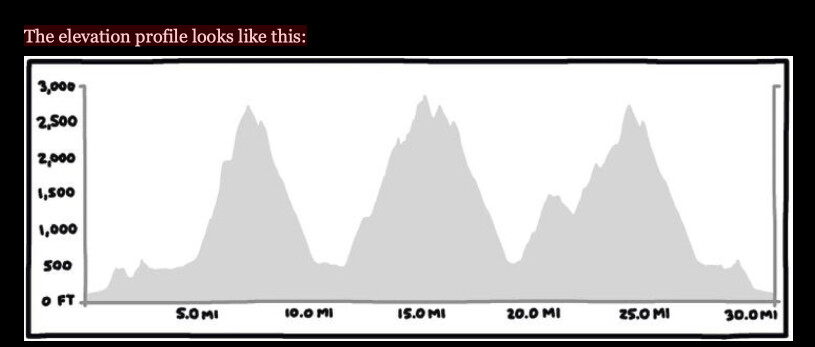
I rounded the switchback and confidently said, “Oh, I don’t know,” and he seemed a little surprised that I didn’t know, pausing for a second with a somewhat quizzical look on his face. So I added, “This is my first time here,” hoping that would help him understand. It was true, kind of. If I’d felt like I had more time to stop and chat, I might have added a few more bits of information:
> I am participating in an ultramarathon trail race called the Tiger Claw 50K > I have never set foot on this mountain before today, May 13th, 2023 > This is my third trip to the summit of West Tiger #2, and finally, > Hey man, I’m just following these pink flags till I see people with pitchers of electrolyte drink and trays of Oreos standing under an EZ-up at the top. I’m not paying attention to the trail names, the distances, or the intersections, I’m barely looking at the scenery. My goals today are:
a) Survive this race despite the 88-degree temperature and 70 percent humidity and b) Produce urine that isn’t the color of a No Passing Zone sign by midnight tonight
I hope that man found his way and is not still out there looking for the Section Line Trail.
Another question someone asked me, the day before the Tiger Claw: “Why did you pick that race? Isn’t it just kind of a local thing?”
I got really out of shape in 2022—spinal disc injury, new baby, sleep deprivation from helping take care of a new baby, and another back/hip injury. I was starting to wonder if at 43, I was hitting some sort of downhill slope in life. I turned 44 this winter, and was determined. Not to return to any sort of athletic glory, no, but to avoid going to the emergency room again after herniating a disc while picking up a dog because I sit on my ass 40 hours a week, and inside my regular-sized middle-aged man body is a smaller man who loves to eat emotionally and is also super fucking lazy.
So I started looking on UltraSignup for 2023 races near western Montana, and thought
Three summits of West Tiger #2 (elevation 2,757 feet), returning to the High Point Trailhead (elevation 527) each time. For a total of “nearly 9,000 feet of elevation gain,” per the Tiger Claw website. If you are looking for a fast, flat race to help you get your PR for the 50K distance, the Tiger Claw is not it.
This, I was afraid, would call for drastic measures: I was going to have to learn to do something I have always been terrible at doing: drink a responsible amount of fluids. This was almost too much to ask, I thought. Maybe I should bail. DNS: Did Not Start. Reason: Not good at drinking water.
The White Loop was the steepest. Ethan’s final email to participants the previous day had said the Pink Loop would stay in the shade into the afternoon. I had decided to go White (steepest, least fun) first, Yellow (longest, most meandering) second, and Pink (afternoon shade). I chugged down a 17-ounce water bottle in the final minutes before the start and stuffed it in my vest.
The first 4.6 miles wound around in the forest with a couple ups and downs, gradually climbing a few hundred feet to get us to the lower aid station, where we’d split up into our respective loops and go on our way. I had put a small drop bag at the lower aid station, as we’d all return here after each of our three ascents and descents of West Tiger 2. I packed my drop mag pretty minimally because after I finished my final lap, I planned to stuff whatever was left of it into my vest for the final three miles to the finish line, so I didn’t have to drive back to get it after the race.
I filled one water bottle at the aid station and ran on, splitting off to do the White Loop, 2.8 miles, 2,800 feet of climbing to the upper aid station/turnaround. I had no ambitions to do a fast first lap, but ran some of the less-steep sections and hiked the rest. Less than a mile into the White Loop, I was alone in the forest, so I pulled over to pee. Just as I was finishing, Krissy Moehl, who is a very famous ultrarunner, hiked past a few feet away, which is sort of an awkward moment to introduce yourself, but I did it anyway, because we have a mutual friend, and then we ended up hiking together for the rest of the ascent. This is not to say that I am as fast as a person who won the UTMB in 2003 and 2009; more like Krissy was not in a hurry on the race course.
With a couple other guys, we jogged a few short sections of the trail, but mostly hiked at a good clip to the upper aid station, arriving at about 1 hour and 45 minutes. I got my water bottles refilled and started heading down. The top of West Tiger 2 had been logged a few years back, and the good news was we could see Mt. Rainier, Mt. Baker, the buildings of downtown Seattle, and the Puget Sound. The bad news was there was no shade at the top, and it was already sunny and warm at 8:45 a.m.
The 2.2-mile route back down to the lower aid station, which we’d all do a total of three times during the race, was steep and technical for about a half-mile, and then just steep. I made myself drink two 17-ounce bottles of fluid as I ran downhill, and made a mental note to do this each time I ran the descent. I had drunk two bottles on the way up, and my shirt was completely drenched in sweat, front and back, by the time we hit the summit.
At the lower aid station, I grabbed my drop bag, stuffed a couple packages of Clif Bloks into my sweat-soaked vest, filled up three water bottles, and started jogging back up the trail, looking for the turnoff for the Yellow Loop—5.5 miles, 3,000 feet of elevation gain.
The Tiger Claw is sort of a multiple-loop race, in that you run multiple loops, and pass through the same checkpoint (the lower aid station) at the end of each loop—but that checkpoint is still three miles from where you parked your car at the start/finish, so maybe it’s less tempting. (you could call someone and ask them to pick you up at the aid station, though, since it’s about 150 feet from a parking lot that’s only a mile from I-90)
But I was definitely not thinking, “Man, I hate loops, I can’t believe I have to come back to this aid station two more times”—I was thinking, “Jesus it’s hot already.”
I was alone for most of the loop, running when possible, hiking the steeper parts, and chugging water and Skratch electrolyte drink. About two-thirds of the way up, Krissy Moehl passed me, and we chatted for a few minutes. Through the forest, I had been forcing myself to chug water—three 17-ounce bottles by the time I got to the top of the climb. Mileage-wise, I was past the halfway mark by my second summit of West Tiger 2, and had drunk 7 bottles of liquid, or about 119 ounces.
With only the Pink Loop to go, I only had 2,700 feet of elevation gain to climb. I could feel a slight dehydration headache forming, but maybe if I kept forcing water down I’d be able to keep it at bay. At the Upper Aid Station, I refilled two bottles and drank both of them as I navigated the downhill.
If you look a map of the course with all three loops on a map, you could see why they called it the Tiger Claw:
A solid mile and a half from the upper aid station, I started to hear a dog howling. Or some animal. I kept plugging away, slowly passing a couple other runners, every once in a while scanning the trees above my head for the top of the ridge, the end of my final climb. Eventually, I ran out of trees, hitting the north edge where the trees had been clear cut. I went from hints of sun to full-blast afternoon white heat as I chugged up the trail, finally seeing the howling dog, which turned out to not be a dog at all, just a really psyched volunteer wooing so loudly and so often that I thought there was no chance he’d have his voice tomorrow. I thanked him and walked to the aid station, got my water bottles refilled, grabbed a handful of potato chips and a couple Oreos, and headed down.
On each of my three descents of the trails to the lower aid station, I was elated to not be climbing. I was also reminded that there was, also today, a race called the Tiger Claw Double, a 50-mile version of this same race I was doing, but with THREE EXTRA LAPS to the summit of West Tiger 2. As I ran downhill, I’d pass by a 50-mile racer heading uphill, and I’d say something like “Good job,” but what I was thinking was, “Look, I am a person of questionable judgment and intelligence, who is spending their Saturday doing a steep-ass 50K race with almost 9,000 feet of climbing in 88-degree heat and 70 percent humidity, but you, Runner, are a FUCKING MANIAC. I salute you. Also I’m really glad I didn’t sign up for that race instead.”
At this point, midway through my final descent, the hot spots on the instep sides of my big toes had turned into full-on blisters, and my toenails were sick of the cumulative effects of being pushed backwards by my shoes every one of the thousands of downhill steps so far.
My strides had shortened, and I wasn’t grunting or wincing with pain every step, but I definitely wasn’t smiling. I glanced down at my watch to check my pace, just out of curiosity: 12-minute miles. I was pretty ready to be done.
I hit the lower aid station, grabbed my drop bag, shoved it into the back pocket of my vest, and started jogging down the road in full sun. Every piece of fabric on my body was soaked through with sweat, including the inside of my vest and the outsides of my shoes.
The route meandered through a short section of forest, and the final three-quarters of a mile was a wide, paved, shaded multi-use path. I started running faster, because on flat ground, my blisters didn’t hurt, and I was ready to get it over with. And I think I remembered them saying something about pizza at the finish line.
I jogged under the finish arch, gave Ethan a very soggy, gross hug, took my finisher medal, and felt the relief of No More Exercising Today slowly roll over me. Mark Griffith, who had been out on the course taking photos all day and working as hard as the racers, directed me to the pizza and cold beverages, and I asked him if he was able to take care of himself at all in the heat. He said he eventually was able to rehydrate at the upper aid station, but at one point, the sweat was just rolling down his head into his eyes. “My eyebrows stopped working,” he said. And I thought, Same, man. I had drunk approximately 225 ounces of water and Skratch electrolyte drink in 7 hours and 39 minutes, and I still felt like a piece of beef jerky that had been left out in the sun for a week.
It had been hot, for sure, but I finished, and as I sat down with a can of sparkling water, it seemed like I had a good chance of surviving the day. I thought a little bit about my friend’s question as to how I decided to sign up for the Tiger Claw, since it was kind of a local race on a local mountain. I am not sure if I could draw a flow chart of how I, and maybe other runners too, decide to run whichever races we run. I don’t know, it sounded fun? It sounded not fun? I heard good things about it? It was close to where I live, or close to some place I wanted to travel to, or it was flat, or it was steep, or whatever.
As far as I know, ultramarathon races basically work like this:
I had assumed that Ethan and Kim could put on a pretty good race because they do other things well, and I am not in the business of reviewing races, but I have to say, I was right. It was fun. Although parts of it were not fun.
Fortunately, there’s plenty of steep terrain very close to where I live. Unfortunately, lots of that steep terrain was still covered in snow and ice until the first week of April. But, I have microspikes, and enough of it melted out in time for me to get in some steep uphills. I did laps on Mt. Sentinel, sort of our local Tiger Mountain, with a ~2,000-foot climb via several different trails. At one point, I wondered: “Am I spending too much time on really steep terrain? What if the course is more gradual, or rolling?”
(Answer below)
I honestly hadn’t given it any thought until he asked. I had just focused on the big numbers: 31 miles, 8,000-something feet of elevation gain. But now I was thinking about it. And it did sound kind of nice to run the loops in whatever order they would be least crowded. But how would I know?
(07/22/2023) Views: 433 ⚡AMPby Outside Online
Do Women Need Gender-Specific Running Shoes?
Hint: It’s not a yes or no answer—it’s about having options
I’ve been wearing running shoes for 30-plus years, and still, when I lace up a new pair that fits me just right, it makes me want to take them for a spin right then and there—but finding perfectly fitting running shoes can be a challenge, even for someone like me who has access to innumerable pairs as a running shoe reviewer.
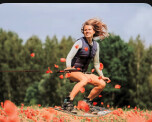
Because I test shoes, people always ask me, “What’s the best running shoe?” And while my male counterpart, Cory Smith, and I vet, test, and write up all the best shoes on the market each season for the Outside Gear Guides and other roundups throughout the year, I always respond with some version of: “There are a lot of great ones out there, but what’s most important is that those great shoes fit your specific feet.”
Much of the running experience depends on comfort, and so much about comfort depends on how well a running shoe fits the individual person’s foot. Yes, other factors differentiate running shoes from each other—midsole compounds, traction, upper materials, lacing systems—and all of them matter in creating a comfortable and effective ride for individual runners and their technique and preferences. But none of it matters if the shoe rubs, bites, or binds your feet uncomfortably. Fit should never be overlooked, and it is linked to the shape of your foot, which is tied to your gender.
So how big a role does gender play in finding your ideal running shoe? Most brands offer men’s and women’s sizes and colorways in each of their shoe models, with both size ranges based on the same last, or, the shape/mold around which the interior of the shoe is built. Some shoes come in men’s sizes only (usually shoes from smaller brands and “niche” models, like weatherized mountain running shoes). Women buy those shoes, but the fit isn’t always right. Many of them have a higher-cut heel cup than women’s models, which can put pressure on a woman’s Achilles. And most often, a men’s shoe fits wider than a women’s.
A handful of brands (Altra, Asics, Hoka, New Balance, Saucony) offer some of their shoe models in widths for both men and women, which offer a broader range of choices. But a select few brands (Altra, Adidas, Hoka, Under Armour) offer all or some of their models in truly gender-specific fits—shoes molded off of gender-specific feet to create gender-specific lasts. And a few brands have come to market with models meant just for women: Lululemon’s Blissfeel and Blissfeel Trail, Hilma’s road-to-trail shoe, UnderArmour’s Flow Synchronicity road shoe, and Puma’s Run XX Nitro road shoe are some examples.
Brian Beckstead, co-founder of shoe company Altra—a brand that’s offered men’s and women’s-specific fits in all of their models since the brand launched in 2011—explains how the differences between men’s and women’s-specific lasts are found around three main places in the foot. One: Women’s lasts are generally narrower in the heel than men’s or gender-neutral lasts, because women tend to have narrower heels. Two: Women’s lasts generally have more support around the midfoot, or arch, because ladies generally have higher arches than men. And three: Because men and women tend to have different “Q-angles”—the angle drawn between the hip, the patella, and the upper shin, which differs genetically for the purpose of child-bearing, according to the National Library of Medicine—most women’s lasts are built up slightly around the interior of the heel or calcaneus bone, with more room on the lateral side of that bone.
But gendered fits aren’t always black and white. “I know women who like to buy the men’s fit [of Altras] and I know men who like to buy the women’s shoes just because they have a really narrow heel,” says Beckstead. “It’s a matter of having options. It’s just a matter of having more variations for a dialed-in fit.”
Regardless of brand preferences and gender designations, some women have wide feet and flat or fallen arches, and some men have narrow feet and high arches. Not all women have more pronounced Q-angles than men. (Personally, I have narrow feet with fallen arches, and appreciate a little space in the toe box, but a secure midfoot wrap.)
And what if you don’t identify as either male or female? That’s a question the running shoe development team at Salomon has been asking lately, as they’ve relaunched a handful of their trail running shoe models as “unisex,” with what aims to be inclusive color palettes (though the fit is based off a men’s last).
It’s a trend we may see continuing throughout the footwear space.
What really matters, regardless of your gender or how you identify, is that you find a running shoe that fits your particular foot. Ill-fitting shoes can create blisters and discomfort, which can make you alter your gait and lead to injury. Great fitting shoes, on the other hand, can excite you to head out for a run and make that experience as enjoyable as possible.
So head to a local running shop with good reviews where you can get to know your feet with some professional help and assess the options available to you. The perfect shoe for you is out there.
(07/22/2023) Views: 587 ⚡AMPby Outside Online
Faith Kipyegon obliterates women’s mile world record by almost five seconds
On Friday at the Monaco Diamond League, Kenya’s Faith Kipyegon ran the fastest women’s mile in history, breaking her third distance world record in the last two months. The 29-year-old mom clocked a jaw-dropping 4:07.64, taking over four seconds off the previous mile record.
In her first mile race since 2016, Kipyegon led the race from start to finish, going through the first 800 in 2:04 and closing in a negative split 2:03. Kipyegon broke the former mile world record of 4:12.33 set by Sifan Hassan of the Netherlands at the same meet in 2019.
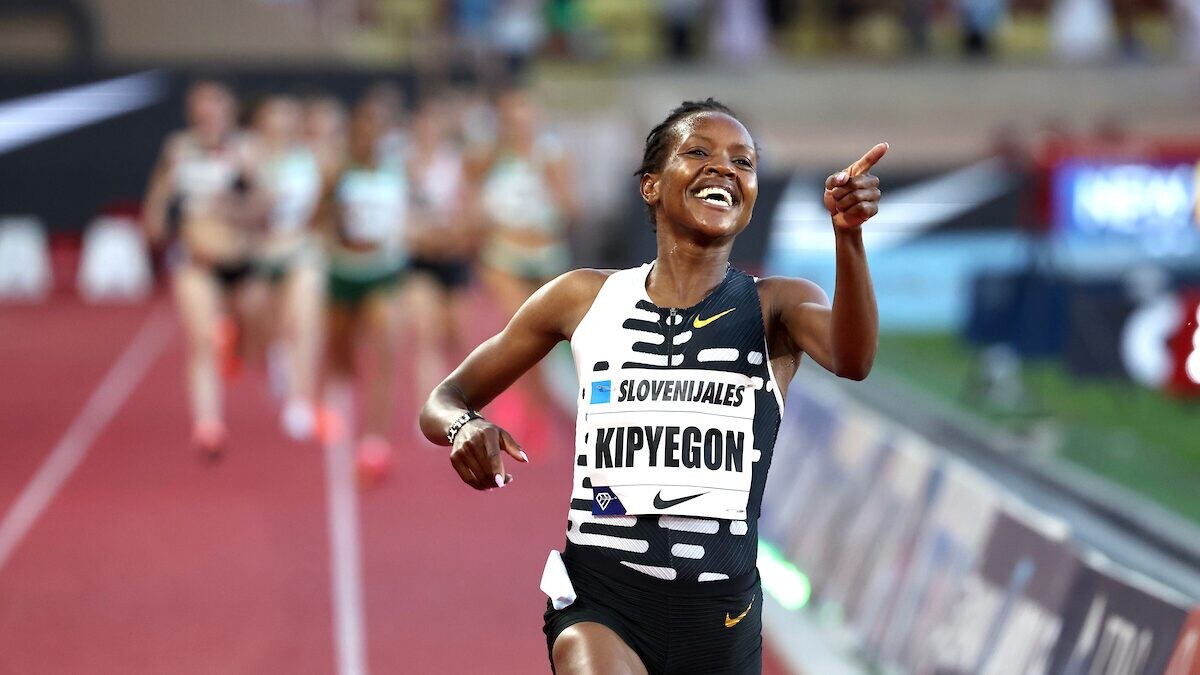
It has been a sensational season for the women’s Olympic and world champion in the 1,500m, who previously lowered the 1,500m and 5,000m world records in June over a seven-day span. There was never a doubt heading into the meet that Kipyegon would break the record, but the question was by how much–and she made a statement, becoming the first woman to run a mile under 4:10.
The mile world record was the only record broken in the race, Kipyegon dragging six athletes to their own respective national records in the mile. Ireland’s Ciara MaGeean finished behind Kipyegon in an Irish national record of 4:14.58, and Ethiopia’s Freweyni Hailu, who went out with Kipyegon through the first two laps, finished third in a season’s best 4:14.79. Olympic 1,500m silver medallist Laura Muir finished fourth in a British national mile record of 4:15.24.

by Running Magazine
Sydney Marathon has announced the fastest and most decorated elite field for the 2023 event
The Sydney Marathon presented by ASICS has today announced the fastest and most decorated elite field for the 2023 Sydney Marathon, to be run on Sunday, September 17. The field’s experience in World Championship and World Marathon Majors racing will make it the fastest marathon pack assembled in Australian history, with homegrown and international talent battling it out on the event’s new marathon course.
Minister for Jobs and Tourism John Graham said the Sydney Marathon was a world-class event with one of the most spectacular marathon courses anywhere in the world.
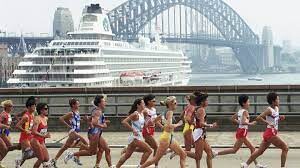
“Sydney leads the pack when it comes to venues to host a marathon. No city on earth has a better combination of natural beauty, a famous love of sport and iconic landmarks and it is an honour to host this elite field of international runners who will test themselves here in Sydney.
“The NSW Government is proud to support the push for Sydney Marathon to become a World Marathon Major. It is a great example of a high-participation community event that brings global attention and tourism benefits for the city and NSW.”
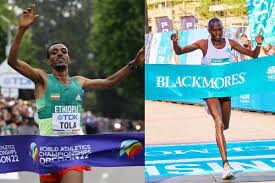
The 2022 Men’s World Marathon Champion Tamirat Tola (ETH), will headline the men’s field; competing in Australia for the first time with a personal best of 2:03:39. Formidable contender Gabriel Geay (TAN), who placed 2nd at the 2023 Boston Marathon has the fastest personal best of the field at 2:03:00. They will line up alongside Moses Kibet (KEN), Sydney Marathon’s defending champion and the current record holder for the fastest marathon time ever run in Australia.
Australia’s fastest ever marathoner, Brett Robinson (VIC), who broke Rob de Castella’s long-standing Australian Record in Fukuoka last year with a time of 2:07:31 will lead the homegrown elite field.
The 2022 World Marathon Championship runner-up and 2022 Paris Marathon Champion, Judith Jeptum Korir (KEN) will make her Australian debut at the Sydney Marathon, with a personal best of 2:18:20. She will be chased by an impressive line-up of competitors who have recorded times under 2:23:00 including Nazret Weldu (ERI), Haven Hailu (ETH) and Angela Tanui (KEN) who has a blistering personal best time of 2:17:57.
Australian Marathon record holder, Sinead Diver (VIC), who broke the Australian marathon record last year in Valencia with a time of 2:21:34 will lead the local elite field, making her Sydney Marathon debut for the first time in 2023.
“We are thrilled to have assembled such a high calibre field for this year’s Sydney Marathon, as we head into our second year as a Candidate Race for the Abbott World Marathon Majors,” said Wayne Larden, Race Director, Sydney Marathon. “The presence of these exceptional runners is a testament to the event’s status as a world-class marathon for elite athletes, running enthusiasts and recreational runners alike, and we are confident that this year’s event will be nothing short of extraordinary.”
The Sydney Marathon and its candidacy for the Abbott World Marathon Majors series is supported by the NSW Government through its tourism and major events agency, Destination NSW.
(07/21/2023) Views: 483 ⚡AMP
by Runners stribe
Sydney Marathon
The Sydney Marathon is a marathon held annually in Sydney, Australia. The event was first held in 2001 as a legacy of the 2000 Summer Olympics, which were held in Sydney. In addition to the marathon, a half marathon, 9 kilometres (5.6 mi) "Bridge Run", and a 3.5 kilometres (2.2 mi) "Family Fun Run" are also held under the banner...
more...Australian ultrarunner Scott Richmond dribbles soccer ball 320 km to new world record
An Australian ultrarunner has set a new world record for the longest distance run while dribbling a soccer ball. Scott Richmond, who lives in the Greater Sydney Area, completed the novel feat of endurance Thursday after dribbling a soccer ball non-stop for seven days from Canberra to Sydney, reaching his 320 km goal and breaking the former record by 20 km.
A children’s entertainer known locally as “Ozzie,” Richmond took on the challenge to raise funds for partner organizations Sports Access Foundation and Fair Game, with money raised going toward sporting equipment and programs for children living in Australia‘s remote and underpriveleged areas, as well as expanding sports opportunities for children with disabilities.
Being an experienced ultrarunner, Richmond was confident he had the legs for the challenge, which kicked off July 14 in Canberra. However, he told news.com.au during the homestretch of his attempt that he didn’t feel as surefooted when it came to keeping control of the ball. “I don’t have a soccer background … so I had to adapt my fitness and build up confidence to tackle this challenge. But I’m hoping this can prove that if you train hard enough, you can achieve anything.”
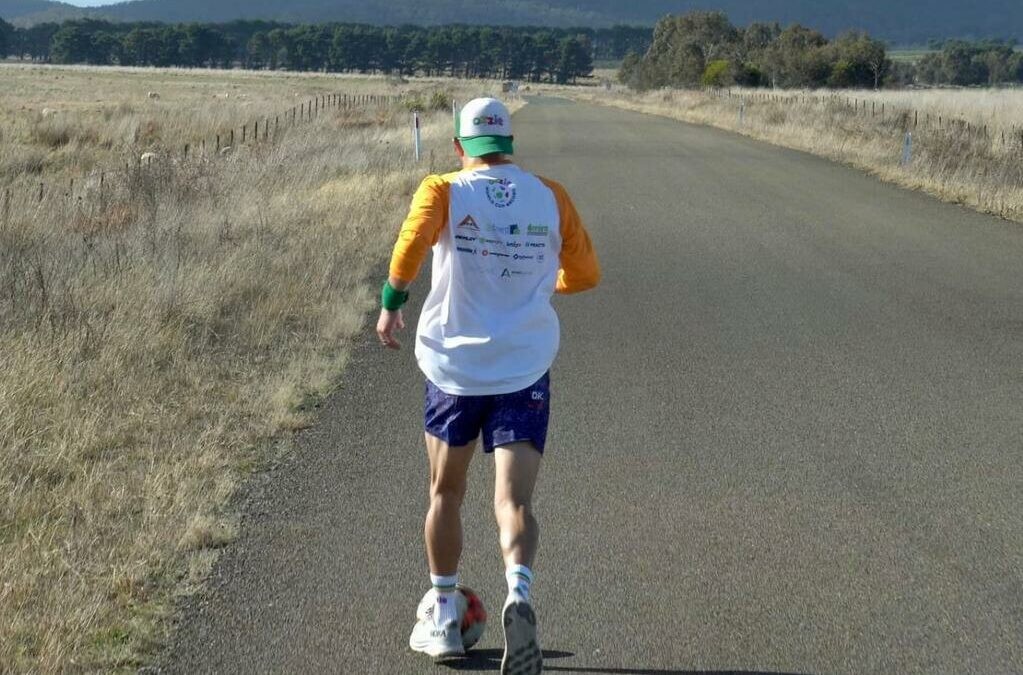
Although the run didn’t always go according to plan—detours caused by construction work added 8 km to his planned distance on the fifth day of his run, and there were the odd brushes with traffic that were too close for comfort—Richmond said the experience was “everything I expected and more.”
A video posted to Richmond’s Instagram page on Thursday showed the runner receiving a boisterous reception at Seymour Sharp Park in Miranda, a suburb of southern Sydney, which served as the finish line to Richmond’s days-long dribble.
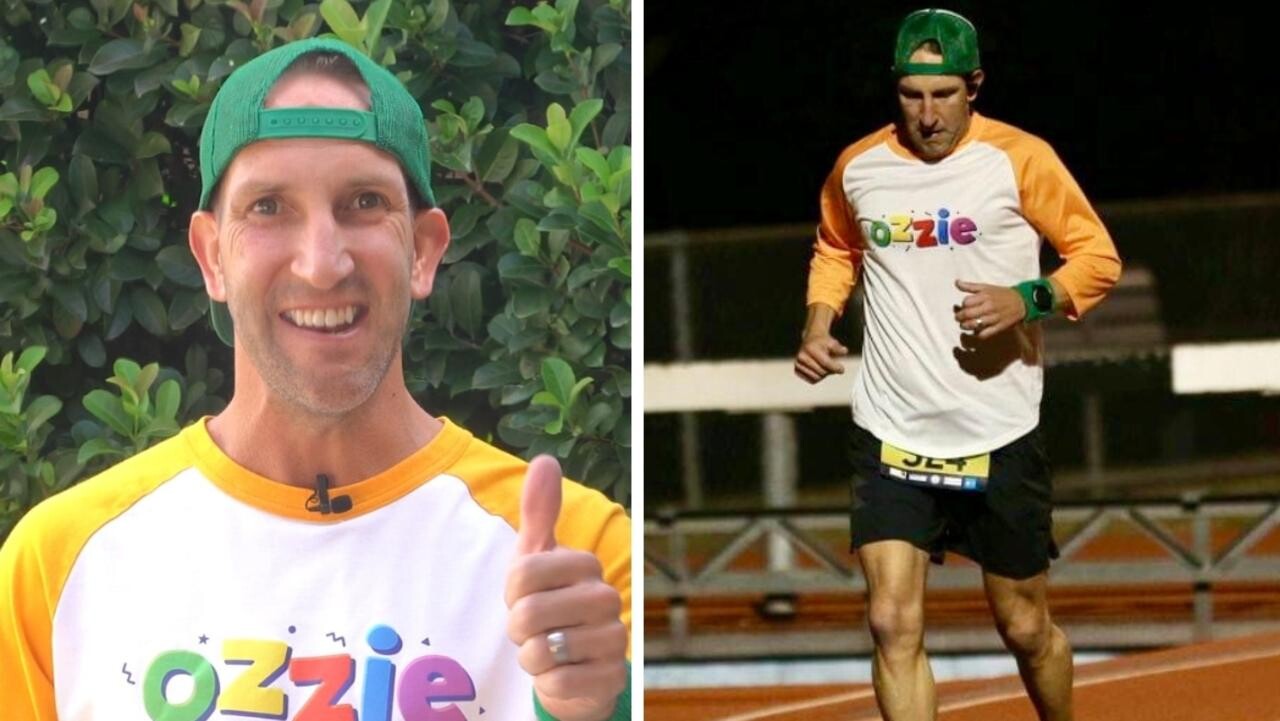
His reaching the park didn’t mark the end of Richmond’s efforts, however. Upon his arrival, the runner took part in a second world-record attempt—the most people simultaneously dribbling a soccer ball for five minutes—which was organized as another fundraiser to benefit the same youth sports organizations. There wasn’t any word from Richmond’s fundraising team Thursday on whether participants at the park were successful in breaking the record of 2,067 simultaneous dribblers, or whether the fundraising goal of AUD$100,000 between both record attempts had yet been reached.
(07/21/2023) Views: 618 ⚡AMPby Paul Baswick
Rodgers Kwemoi hunting for maiden season victory at Antrim Coast Half Marathon
Kwemoi goes back to the roads after a successful outing last season that saw him reign supreme at the N Kolay Istanbul Half Marathon.
The 2016 World Under-20 10,000m champion Rodgers Kwemoi will compete in his first half marathon race of the season at the Antrim Coast Half Marathon, a World Athletics elite event, on Sunday, August 27.
Kwemoi goes back to the roads after a successful outing last season that saw him reign supreme at the N Kolay Istanbul Half Marathon. Later that year, he finished second at the Ras Al Khaimah Half Marathon in the United Arab Emirates.
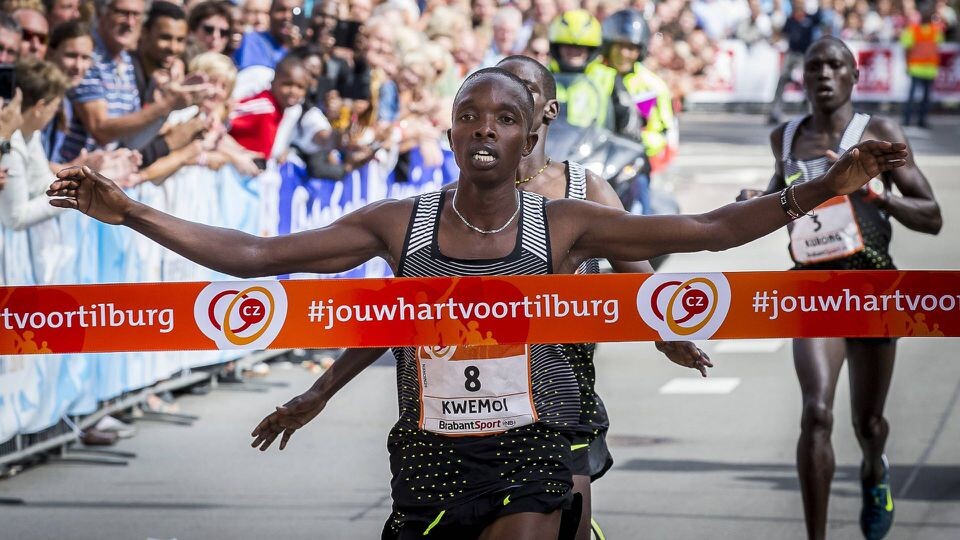
He opened his 2023 season with a 10th-place finish in the 10,000m at the 31st Kanakuri Memorial Middle-and Long-Distance Invitational Meet.
He then went ahead and finished ninth at the 1st Nittaidai Challenge Games before completing the podium at the 67th Central Japan Corporate Teams Athletics Championships, both races being 10,000m.
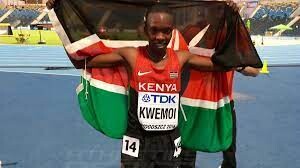
He will be looking for his first win when he takes on opponents in the Irish capital for the first time.
Another athlete who has confirmed participation is Great Britain’s Callum Hawkins who will be opening his season at the event.
His last race was last year’s Valencia Half Marathon where he fizzled out to finish in a disappointing 28th place.
The 2017 Marugame Half Marathon champion will be looking for a fresh start when he takes on his opponents. He returns to Ireland after a seventh-place finish during last year’s event.
(07/21/2023) Views: 435 ⚡AMPby Abigael Wuafula
MEA ANTRIM COAST HALF MARATHON
The MEA Antrim Coast Half Marathon 2022 has been approved by World Athletics as an Elite Event. The World Athletics certified course takes in some of the most stunning scenery in Europe, combined with some famous landmarks along the route. With it's flat and fast course, the race is one of the fastest half marathons in the world. Starting...
more...Sha'Carri Richardson shows support to Tobi Amusan on alleged doping violation case
Sprints sensation Sha'Carri Richardson voiced her opinion on Tobi Amusan's alleged doping violation case.
US champion and sprints sensation Sha'Carri Richardson has shown her support to Tobi Amusan on the Nigerian's alleged doping violations case.
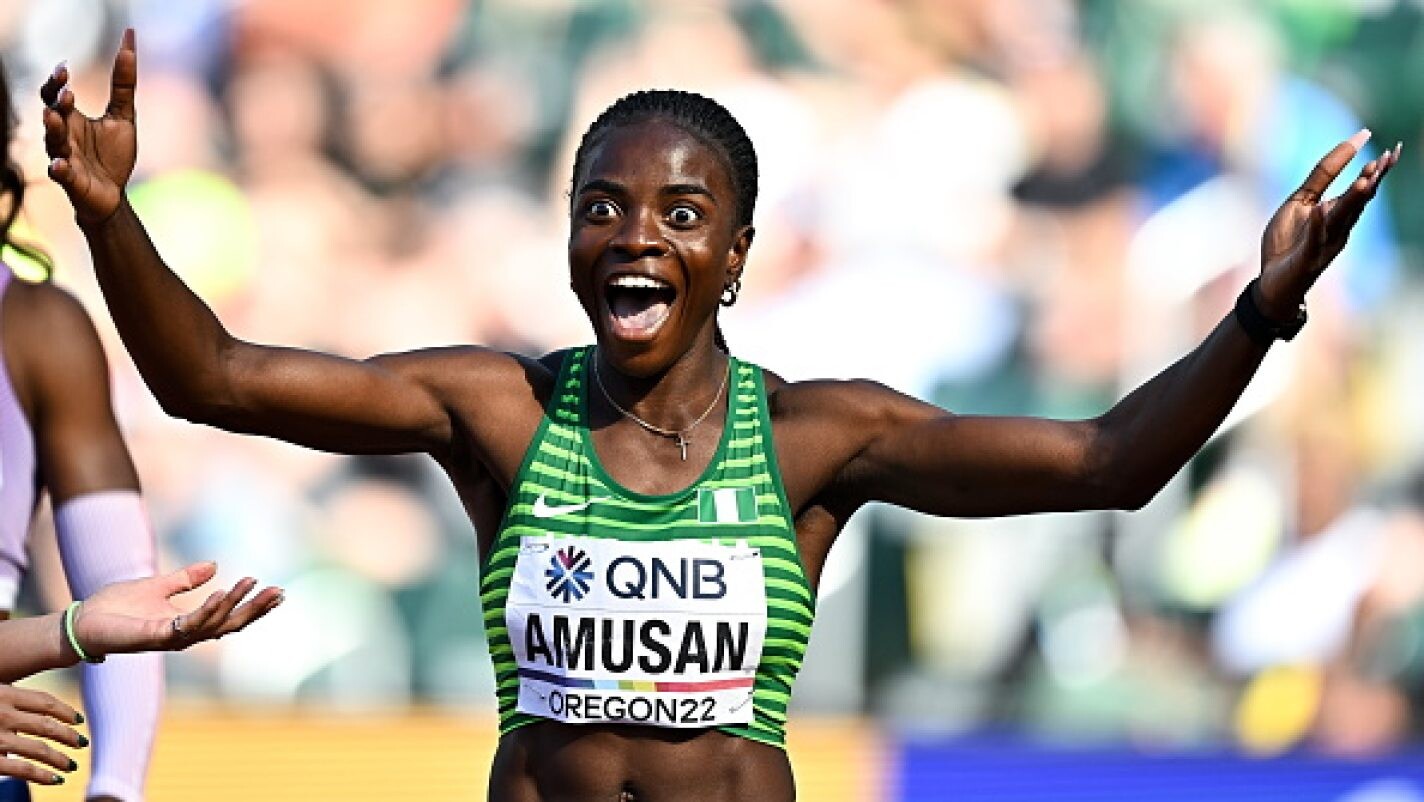
Amusan became a topic of online discussion when she released a statement on her Instagram page that she had been charged with an alleged doping violation rule by the Athletics Integrity Unit (AIU).
In the statement, Amusan said the AIU had charged her for missing three tests in the space of 12 months, which is a doping violation that has now led the AIU to provisionally suspend her until the case is cleared.

Richardson will later show her support to Amusan by posting pictures of the women's 100m Hurdles World Record (WR) on her Instagram stories, and one of the captions reading:
"If you don't know which a lot of y'all do not, SHUT UP," wrote Richardson.
Amusan stated that she will have her charge decided by a tribunal of three arbitrators before the start of next month's World Championships in Budapest.
(07/20/2023) Views: 592 ⚡AMPby Funmilayo Fameso
Is depth of talent the issue behind Kenya’s doping scandal?
If you have been following the sport of distance running for the past five years, you’ll be aware of the rise in positive doping cases out of Kenya, whose athletes have dominated the major marathon scene for nearly three decades. Since 2000, the country has won a total of 30 Boston Marathon titles, and the remarkable performances of marathon world record holders Eliud Kipchoge and Brigid Kosgei have put Kenyan athletics at the forefront of distance running. Still, below those few at the top, there are hundreds of aspiring talented distance runners from the East African nation willing to do whatever it takes to make ends meet.
In an in-depth interview with the BBC, Athletics Integrity Unit (AIU) head Brett Clothier explains that Kenya faces a unique problem that most countries don’t face—the sheer abundance of talent that sits below the elite level. “The problem is there is a huge pyramid of top-class athletes,” explains Clothier. “The difference in ability, in that pyramid, between the top and those below is not very much, because of the depth of their talent.”
Clothier adds that in the past, they have been testing the top of that pyramid, i.e., major marathon winners, domestic champions and world championship athletes, but the bottom ones have not been subject to out-of-competition testing. “That pyramid is hundreds, or even thousands, of athletes, so even though we are controlling the ones at the top very well, because of the pressure from the athletes below, who aren’t being tested out of competition, the athletes at the top are taking risks, and there is pressure to stay on top.”
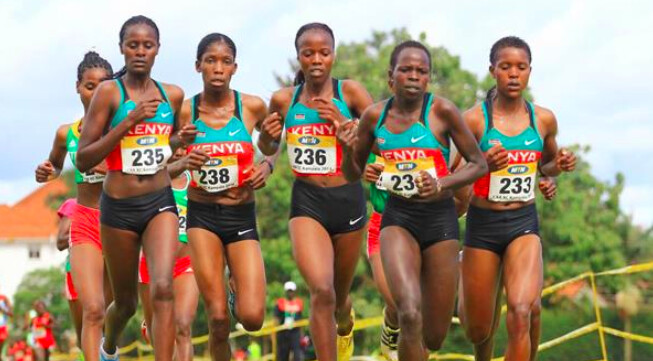
The lure of financial incentives is a major driving force behind doping in Kenya. Road races tend to offer lucrative prize money and appearance fees, attracting a large professional class of runners who potentially see doping as a means to secure a better living. The extensive pyramid of top-class athletes in Kenya creates pressure to succeed, even for those not yet subject to out-of-competition testing. Clothier pointed out that these athletes do not have to go far to find performance-enhancing drugs. “When you have this illicit market, you have the opportunity for people to financially benefit from doping, and people who have the financial opportunity to sell performance-enhancing drugs,” said Clothier. “What we see is a market driven by money and demand.”
There are 165 Kenyan men who have run under 2:07 for the marathon. To put it into perspective, only three U.S. men in history have accomplished the same feat. USADA, the country’s doping agency, is backed annually by major players, including the U.S. Government and the U.S. Olympic and Paralympic Committee (USOPC), to help create a safe sporting environment and regularly test athletes.
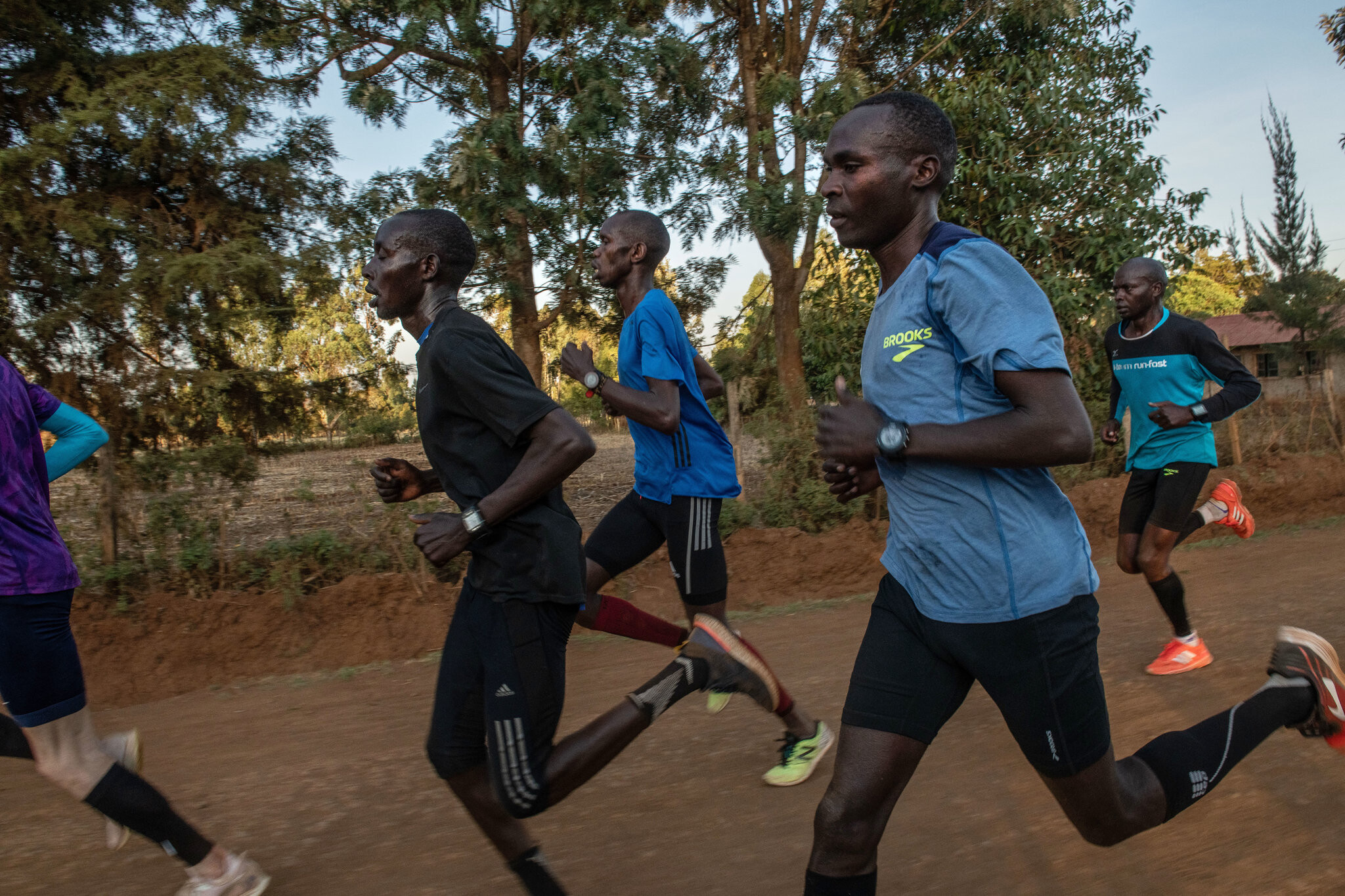
Kenya’s problem is that it doesn’t yet have the funding or resources within its anti-doping agency to completely tackle the larger pool below those at the top, but the AIU and Kenyan government have increased funding for the Anti-Doping Agency of Kenya (ADAK) by five million a year for the next five years. “Funding can be a real game-changer,” said Clothier. “No other national anti-doping agency is at that level of testing in our sport.” In the last year, testing at the Kenyan National Championships has increased nearly 400 percent, which Clothier believes is a serious improvement.
World Athletics President Sebastian Coe fully supports the efforts made by the Kenyan Federation and government in tackling the issue. Although running fans may feel discouraged by seeing the downfall of major marathon winners and world championships medallists who are cheating, Clothier insists that each case represents progress in making athletics a cleaner sport. The country’s fight against doping continues, but the increased testing and commitment to fixing the problem offer hope for real change. With Coe and Clothier backing the efforts to address doping in Kenya, there is reason for optimism that the nation’s anti-doping initiatives will lead to a cleaner and fairer athletic environment, benefiting clean athletes and preserving the integrity of the sport.
(07/20/2023) Views: 473 ⚡AMPby Running Magazine
Detroit Free Press Marathon announces first Kids Marathon
The Detroit Free Press Marathon is set to host the first-ever kids marathon as a part of the event.
Kids 13 and under will have the opportunity to experience a modified version of the marathon. Parents can register their children online for $25 and then download the 2023 Free Press Kids Marathon log sheet.
Participants have until Oct. 14 to log 25.2 miles, when they will then join in on the final mile of the race on Saturday morning of race weekend. Once they finish the mile, they will receive a finishers shirt, a completion medal and fun post-race celebration. In order to participate, kids must be 13 or under on Oct. 14.

Parents wanting to run the final mile with their children can register for the 1-mile race, as the two will use the same course.
"Whether they want to do a daily walk or daily run or a weekly run or jog, I think it really helps promote consistent exercise and activity leading up to a goal and that goal being 26.2 miles of activity," Aaron Velthoven, Free Press Marathon vice president and executive race director, said.
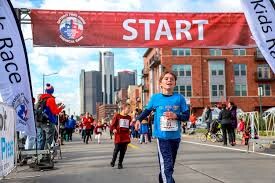
The 46th annual Free Press Marathon, a three-day event, will be Oct. 13-15. Attracting runners from all over the world, this marathon is the only race in Michigan that crosses international borders twice. Participants cross into Canada through the Ambassador Bridge and then make their way back to the United States through the Detroit-Windsor Tunnel. Other events include the half-marathon, U.S.-only half marathon and marathon relay, competitive 1-mile race, 5K and the Meijer Kids Fun Run.
Those interested can register online for the category of their choosing. Participants of the full marathon must be 16 or older and must be able to enter both Canada and the U.S.
(07/20/2023) Views: 440 ⚡AMPby Jenna Malinowski
Detroit Free Press Marathon
Our marathon course offers international appeal, traversing both downtown Detroit and Windsor, Ontario, crossing the border at both the Ambassador Bridge and Detroit-Windsor Tunnel. You will run through historic neighborhoods, around beautiful Belle Isle, and along the spectacular RiverWalk. ...
more...Sprints coach Stephen Mwaniki confident relay teams will make cut for Budapest
Sprints coach Stephen Mwaniki believes Kenya's 4x 400m (men) and 4x400 mixed relay teams can shoot to between positions 10 and 12 in the world rankings when they compete in Gaborone, Botswana, on Thursday.
The Kenyan teams are currently placed 16th on the World Athletics rankings. The mixed relay team has a time of 3:14.64 while the men's 4x400m team boosts of a 3:02.02 mark. Both times were set at Nyayo Stadium on June 24.
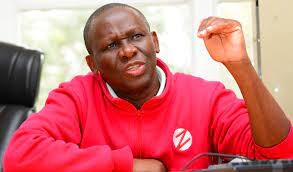
The contingent in Gaborone has Wiseman Were, Bonface Mweresa, Kennedy Kimeu and Zablon Ekwam in the 4x400m race while the mixed relays trialists include Ekwam, Kevin Tauta, Mercy Oketch, Maureen Thomas and Millicent Ndoro.
Mwaniki said the individual athletes are the best the country has to offer over the distances and expressed confidence they will deliver in Botswana.
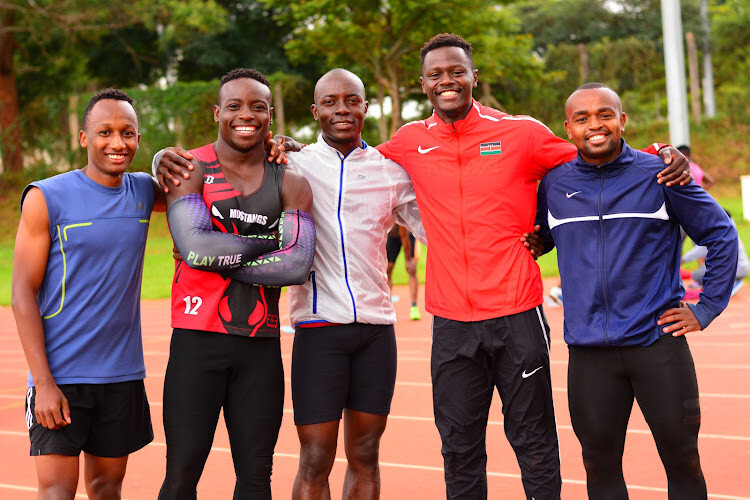
"These are our best athletes and we hope they will do the country proud by cementing their place at the World Championships in Hungary," said Mwaniki.
The Kenya Prisons coach said the window for qualification closes on July 30 and the Botswana event presents a good opportunity for the team.
"We have a very good opportunity to improve our time before the deadline," he said.
The top 16 teams in the world by July 30 will head to Budapest.
He added that Kenya stands a good chance of medaling in the mixed relays.
"We won a bronze medal at the World Relays in Yokohama, Japan, four years ago and I believe our chances are very good in that regard," he said.
Mwaniki added that should Kenya make it to the 4x400m and mixed relay finals in Budapest, they will have qualified for next year's Olympic Games in Paris.
"This is a big incentive for us as a federation and team. They know what's at stake and if we attain better times in Gaberone, we will work very hard to ensure we make it to the final in Budapest," he noted.
Commonwealth Games 800m champion Mary Moraa is a probable member of the mixed relay team if they make it to Budapest.
"She is a strong athlete, especially over 400, and will be an asset to the side if we do qualify," he said.
(07/20/2023) Views: 494 ⚡AMPby William Njuguna
World Athletics Championships Budapest 23
From August 19-27, 2023, Budapest will host the world's third largest sporting event, the World Athletics Championships. It is the largest sporting event in the history of Hungary, attended by athletes from more than 200 countries, whose news will reach more than one billion people. Athletics is the foundation of all sports. It represents strength, speed, dexterity and endurance, the...
more...Eliud Kipchoge says he’s not worried about Kelvin Kiptum in potential Berlin Marathon clash
Less than a week ago, marathon world record holder Eliud Kipchoge announced he will return to the Berlin Marathon on Sept. 24 for a bid at his fifth Berlin title on the famously flat and fast course. Many fans expected Kipchoge to choose to run the New York City Marathon in November in preparation for the extremely hilly course at the 2024 Paris Olympics. Now, he will potentially clash against the second-fastest man in history, Kelvin Kiptum.
On June 15, he conducted a virtual press conference with the media to explain his decision behind Berlin, hinting at his future plans and chatting about the potential clash between him and the 2023 London Marathon champion, Kiptum. Kipchoge said: “Kiptum has all power to do what he wants. I have done enough. I trust that what I have done in the (sport) world will be respected. In any case, I wish him well. […] If Kiptum runs under 2:00, he will always be the second [to do so]. I’ll be the first one. So I have no worries at all.”
In his two marathon starts, the 23-year-old Kiptum won on both occasions. He ran a 2:01:53 debut to win the 2022 Valencia Marathon and followed it up with a 2:01:25 to break Kipchoge’s course record at the 2023 London Marathon five months later.
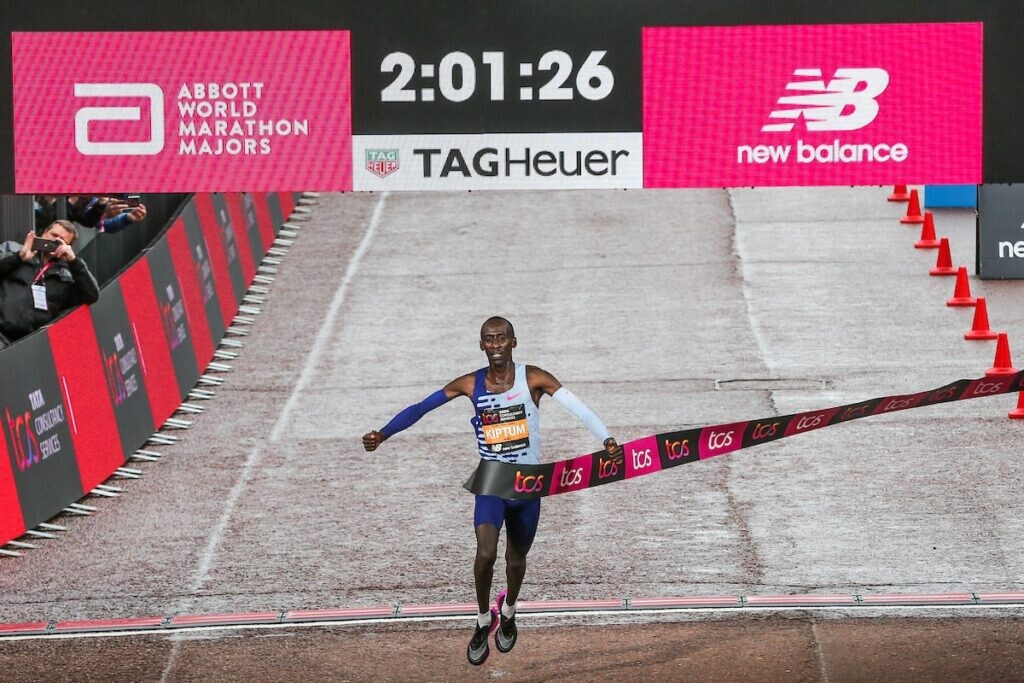
Only three men in history have run under 2:02, and Kiptum is the only marathoner to do it under the age of 35. Although Kiptum has not been announced for the 2023 Berlin Marathon, there has been a lot of speculation about him entering this year’s elite field. After his win at the 2023 London Marathon, he expressed interest in seeing what he could do on the Berlin course, which is known to be fast and flat. Berlin has been the race where the last eight men’s marathon world records were set, dating back to Paul Tergat’s record of 2:04:55 in 2003.
At the 2023 Boston Marathon, Kipchoge had a tough day on the prestigious course, struggling with a leg issue that ultimately brought him his second marathon loss in the last nine years (he finished sixth). “I have no control over what happened in April in Boston,” Kipchoge told reporters. “There’s no point in brooding. I can (only) control things happening now and get ready for Berlin.”
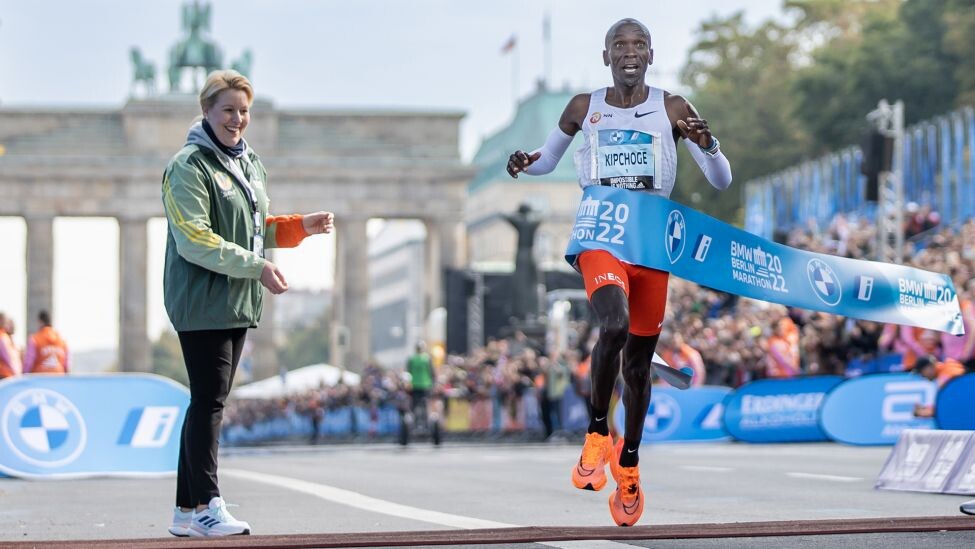
The goals remain the same for the 38-year-old Kenyan, who is looking for his third consecutive Olympic gold in the marathon at the 2024 Paris Olympics. “I want to be the first man to win back-to-back-to-back,” Kipchoge said. “I am really looking for that. That would be real, real history.” Kipchoge believes that Berlin gives him the best opportunity to prepare himself for gold in Paris, giving him nearly 10 months to train in the lead-up to the Games.
Earlier this month, Kiptum also withdrew his name from a nomination to the Kenyan marathon team at the 2023 World Athletics Championships in Budapest, which hints that a fall marathon will indeed be on his calendar.
(07/20/2023) Views: 497 ⚡AMPby Marley Dickinson
BMW Berlin Marathon
The story of the BERLIN-MARATHON is a story of the development of road running. When the first BERLIN-MARATHON was started on 13th October 1974 on a minor road next to the stadium of the organisers‘ club SC Charlottenburg Berlin 286 athletes had entered. The first winners were runners from Berlin: Günter Hallas (2:44:53), who still runs the BERLIN-MARATHON today, and...
more...Canadian ultrarunner still snagging podiums at 66
Trishul Cherns has firmly staked his place in the history of Canadian ultrarunning. But at age 66, the endurance athlete has shown with his recent ascents to the podium that he has no desire to dwell on past successes—nor should other runners who have entered their senior years. The Hamilton native, who lives in Kingston, N.Y., with his wife and crew leader, Käären Schilke-Cherns, has recently racked up no fewer than three podium finishes at ultras around the U.S., including second overall at the 144-hour 3 Days at the Fair road race in Augusta, N.J., in early May, covering 677. 53 km; third overall at the 33-hour Centurion Ultra Trail Event–Blue Buckle in Connecticut in June, completing 183.304 km; and earlier this month, Cherns won the 48-hour event at the Notchview Ultra in Windsor, Mass., covering 229.332 km on trails.
Cherns is best known as a multi-day racer, and throughout his career, has represented Canada in many international competitions. He has broken more than 110 Canadian ultrarunning records and has racked up tens of thousands of kilometres in events as short as 50K and as long as 1,600 km on roads, trails and the track. Altogether he has accumulated more than 300 ultra finishes during his career.
Cherns says beyond being personal accomplishments, these latest results speak assertively to the strength and potential of runners over the age of 65.
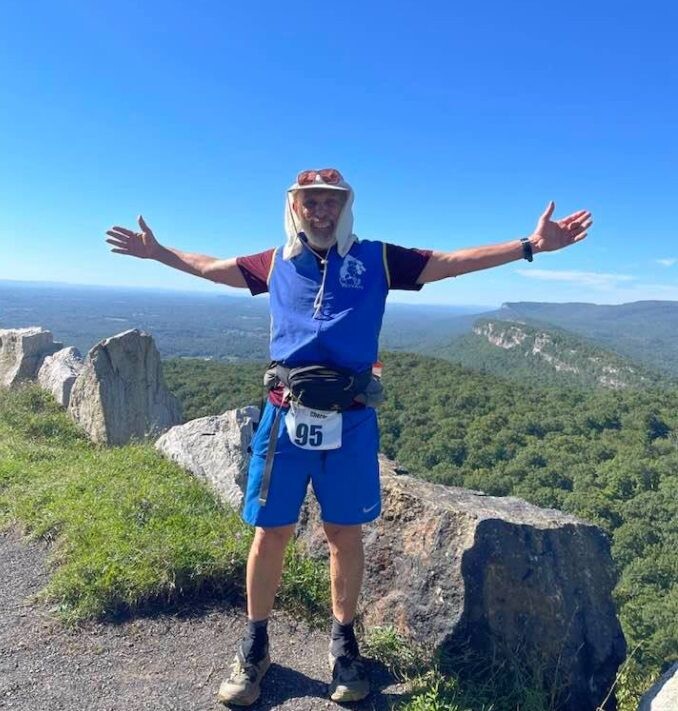
“Age is not a limit,” Cherns tells Canadian Running. “I still feel 30 inside, and I’m beating guys that are 20, 30, 40 years younger than me. So I think the message is, no matter what your age is, keep going and keep doing what you’re doing.”
Although age does offer runners the benefit of experience, running success in older life doesn’t just happen. Cherns says choosing healthy foods and cultivating a positive mental attitude have been crucial to his continuing to be a strong competitor.
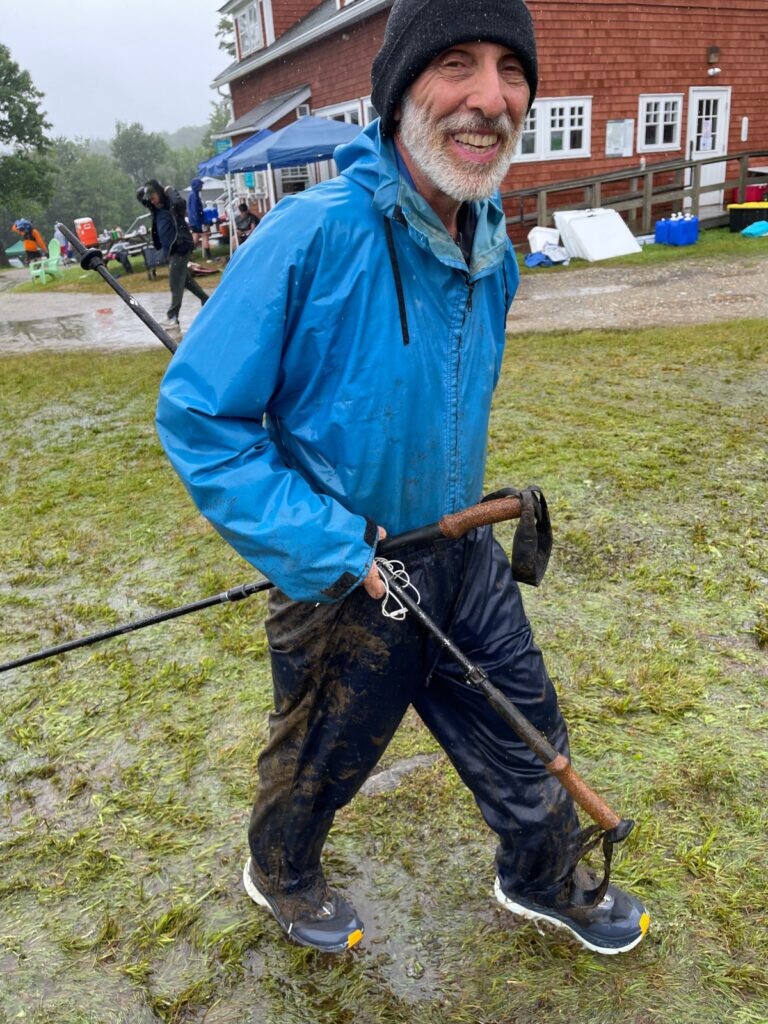
“My success definitely comes from my diet,” he says. “I’m a vegan, and that’s an anti-inflamatory diet. I’m trying to prevent inflammation in my body because these are stressful (running) events, so I’m trying to make it as easy as possible.”
He says meditation and approaching running as a spiritual practice have been key to maintaining a positive mindset during challenging races.
“Meditation and spirituality give me fortitude. Inner peace and stillness give me strength. I can do things that others can’t because of my inner fortitude, which supports my being very, very mentally strong and very, very emotionally strong,” says Cherns, who was a student of the late endurance athlete and spiritual teacher Sri Chinmoy.
Another key ingredient to continued success and joy in running is to continue to look ahead, says Cherns, and always to set one’s sights high. “My ideas are always self-transcending. I want to be prolific. I want to keep pushing my goals so that running is all a new adventure for me. I’ve run more than 300 ultras—in the next five years I’d like to bring that to 500. Ultimately, can I do 1,000 ultra marathons in my lifetime? You know, that’d be cool,” he says.
“I’m trying to go for the stars. There’s no reason why you can’t go for the stars, no matter what age you are.”
(07/19/2023) Views: 552 ⚡AMPby Paul Baswick
Core strength for runners: Three basic exercises to get faster
Adding some simple core-strength exercises to your routine might not result in an immediate six-pack, but it will make you a stronger, more stable and injury-resistant runner. New to core strength? We’re here to help–here are a few basic exercises and the reasons why, as a runner, you should add these to your training routine.
Why core strength?
Adding some core mobility and strength to your weekly routine comes with a multitude of benefits that carry over to running. You’ll improve your posture: a strong core helps maintain proper alignment, preventing you from slouching or leaning forward while running. A stable core provides a solid foundation for your limbs to work efficiently. This stability is particularly important on trails or when navigating uneven terrain.
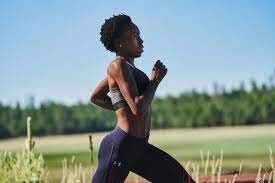
A strong core can reduce the risk of common running injuries like lower back pain, IT band syndrome, and knee issues. Your core supports the spine and pelvis, and strengthening it reduces the impact on the joints. Finally, you’ll increase your power and speed. A strong core results in more powerful and efficient strides. While a well-rounded strength routine is something to work up to, adding a few simple core exercises post-easy run will give you a speed and stability boost.
1.- Planks

Traditional planks and side planks help strengthen the entire core, including the abdominal muscles and obliques.
Start in a push-up position with your hands directly beneath your shoulders and your body in a straight line from head to heels, feet should be hip-width apart.
Tighten your abdominal muscles and squeeze your glutes. This will help maintain a neutral spine throughout the exercise.
Hold this position, keeping your body in a straight line. Start with 20-30 seconds and gradually increase the time as you gain strength.
Modify: to make the standard plank less challenging, you can perform the exercise on your elbows instead of your hands. Rest on your forearms, and the rest of the steps remain the same. You can also drop your knees to the mat for support.
2.- Russian twists
This exercise targets the obliques and improves rotational strength, which is beneficial for maintaining stability during running.
Sit on the ground with knees bent and your feet flat on the floor. Lean back slightly while keeping your back straight, with your torso at a 45-degree angle to the floor.
Tighten your abdominal muscles, engaging your core to stabilize your spine and maintain a neutral posture. Bring your hands together in front of your chest, and try holding a weight or medicine ball to add resistance.
Slowly rotate your torso to one side, bringing your hands or the weight beside your hip. Keep hips and lower body stationary–the movement should come from your upper body. Slowly twist back to the starting position. and repeat the twist on the opposite side. Start with 10-15 repetitions per side and gradually increase the number as you become more comfortable.
3.- Bicycle crunches
These target the rectus abdominis and obliques while also engaging the hip flexors–all muscles that play a significant role in maintaining stability and balance while running.
Lie on your back on a mat or a comfortable surface. Place your hands behind your head, keeping elbows wide open, and lift both legs off the ground with knees bent at a 90-degree angle.
Tighten your abdominal muscles to engage your core and keep your spine stable.
Simultaneously perform a crunch and a rotation. Bring your right elbow towards your left knee while straightening your right leg. At the same time, rotate your torso to the left. Return to the starting position and repeat the movement on the other side, bringing your left elbow toward your right knee while straightening your left leg and rotating your torso to the right.
Continue to alternate sides in a fluid and controlled motion, resembling a pedalling motion like riding a bicycle. Aim for 10-15 repetitions per side to start with and gradually increase as your core strength improves.
When it comes to core training, consistency is key. Start by including core exercises in your routine two to three times per week, and prioritize form over the number of reps. Make sure you are including adequate rest and recovery if you are adding strength to an already intense running routine.
(07/19/2023) Views: 502 ⚡AMPby Keeley Milne
Six-time world champion confirms attendance for this year’s Antrim Coast Half-Marathon
Six-time world champion and former Olympic silver medalist Genzebe Dibaba has confirmed she will take to the starting line for this year’s Antrim Coast Half-Marathon.
The 32-year-old Ethiopian, who finished second in the 1500m at the 2016 Games in Rio de Janeiro, is the latest elite name to be added to the field for this year’s event, which takes place on August 25-27.
A former World Junior champion, and a two-time junior race winner at the World Cross Country Championships, Dibaba won her first world title in the 1500m at the 2012 World Indoors in Istanbul.
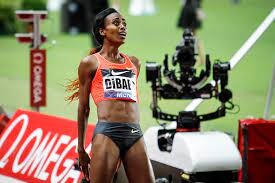
Her second came two years later in the 3000m at the World Indoors in Sopot, Poland, before she added the 1500m title at the 2013 World Championships in Beijing.
She would add another 1500m World Indoor title in 2016 in Portland before claiming gold in both the 1500m and 3000m at the 2018 World Indoors in Birmingham.
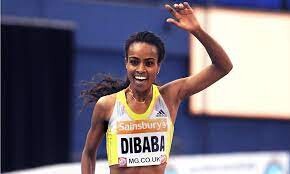
Dibaba, whose best half-marathon time is 1:05.18, will face stern competition from the likes of Amsterdam Marathon winner Degitu Azimeraw and former Great Ethiopian Run winner Zeineba Yimer.
However, Dibaba will enter the event as one of the favorites to cross the line first and race director Ruth McIlroy is thrilled they have added another huge name to the line-up.
"Everyone is delighted we have secured Genzebe, she's been someone we have been working towards getting to the event over the last 12 months,” said McIlroy.
"We feel we have one of the fastest half marathon courses in the world and think she, along with some other stars, will run extremely quick.
"Both the men's and women's elite races have a similar calibre to a global final so we could be looking at something very special in August.”
On the men’s side of the event, Ethiopian great Jemal Yimer is going for his third straight win in the event and is boasting considerable form after winning the Los Angeles Marathon and setting a UK & Ireland All-Comers record with a time of 58.33.
However, Yimer is only one of three runners who have broken the 59-minute mark in the field this year, with Kenya’s Daniel Mateiko having set a time of 58.26 and two-time Tokyo Marathon winner Birhanu Legese also competing.
The local challenge will be spearheaded by Irish Olympian duo Paul Pollock and Kevin Seaward, while Scotland’s Callum Hawkins also runs in a star-studded field.
Meanwhile, world junior champion Ermias Girma has been confirmed for the Condor Executive Street Mile to be run on the Friday night, with the Ethiopian eyeing up the first sub-four-minute mile.
Former Commonwealth Games bronze medalist Winnie Nanyondo is also confirmed for the event as she looks to better her personal best time of four minutes and 18 seconds.
Elsewhere, McIlroy is keen to see the Antrim Coast & Belfast bid given the green light to represent the United Kingdom in its bid to host either the 2025 or 2026 World Road Running Championships.
The bid, which has already been endorsed by Northern Ireland’s five main political parties, is Athletics UK’s preferred choice and will be the last to present to World Athletics president Sebastian Coe.
"With 50,000 runners from over 160 countries, it would be a truly great way to celebrate the 25th anniversary of the Good Friday Agreement and showcase the beauty of our province and sporting excellence to the rest of the world,” added McIlroy.
The bid will be heard on Tuesday, July 4, with the winning regions revealed on August 18 at the World Track & Field Championships in Budapest.
(07/19/2023) Views: 507 ⚡AMPby Adam McKendry
MEA ANTRIM COAST HALF MARATHON
The MEA Antrim Coast Half Marathon 2022 has been approved by World Athletics as an Elite Event. The World Athletics certified course takes in some of the most stunning scenery in Europe, combined with some famous landmarks along the route. With it's flat and fast course, the race is one of the fastest half marathons in the world. Starting...
more...World champion Tobi Amusan faces one-year ban for missed drug tests
Nigeria’s Tobi Amusan, the reigning world champion and world record holder in the 100m hurdles, is facing a potential one-year suspension for three missed drug tests within 12 months.
According to a post on Amusan’s Instagram on Tuesday evening, she was charged with missing three drug tests within 12 months. If an athlete misses three doping tests, it can result in a suspension of up to two years, even if the athlete has never failed a drug test. The Athletics Integrity Unit (AIU), the body responsible for handling doping cases in track and field, charged Amusan even though she claims to have been tested within days of her third missed test.
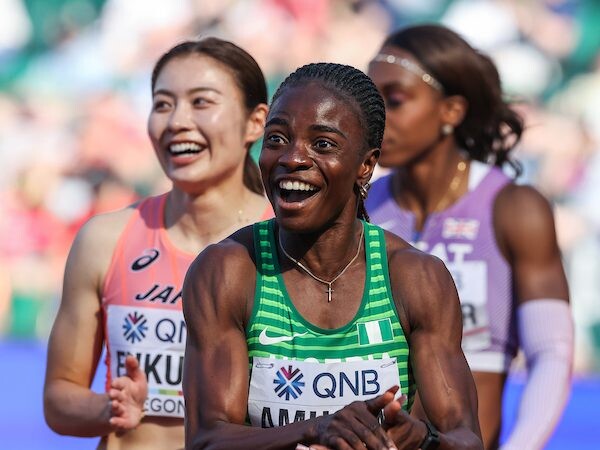
Amusan said her intention is to challenge the charge and have her case decided by a tribunal of three arbitrators before the upcoming World Championships next month. Amusan did not disclose any reasoning for why she missed three tests but advocated that she is a clean athlete and undergoes regular testing by the AIU. She remains hopeful that the situation will be resolved in her favour, which would allow her to defend her world title at the World Athletics Championships in Budapest next month.
The 26-year-old became Nigeria’s first world record holder and world champion in the 100m hurdles at the 2022 World Athletics Championships, where she clocked a resounding world record of 12.12 seconds in the semifinals and a wind-aided 12.06 seconds to win the final.
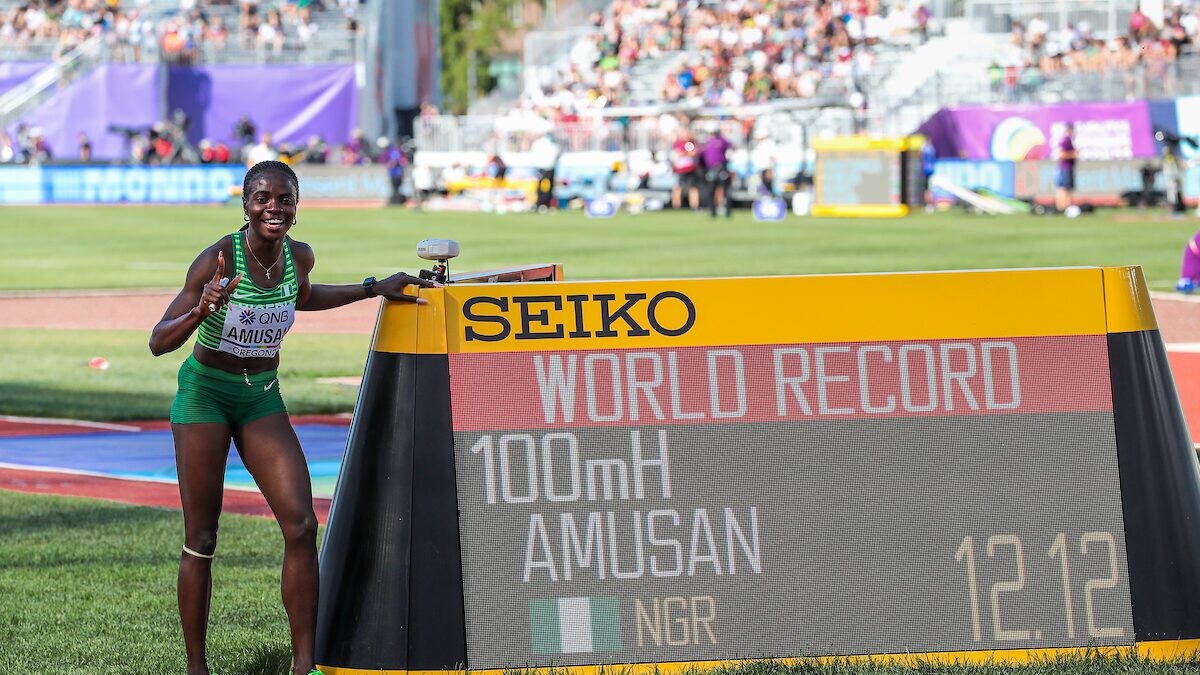
This season, Amusan currently holds the second-best time in the world with a recorded time of 12.34, achieved on July 16 at Silesia Diamond League in Poland. The current world lead is held by the reigning Olympic gold medalist in the event, Jasmine Camacho-Quinn of Puerto Rico, who recorded a time of 12.31 seconds in May.
(07/19/2023) Views: 575 ⚡AMPby Marley Dickinson
Regular exercise has a beneficial impact on the body’s response to inflammation: Study says
For years, researchers and health practitioners have known that regular, moderate exercise has a positive impact on your body’s response to inflammation, but exactly why it has that effect has remained a mystery. A new study out of York University has helped to shed light on this poorly understood phenomenon.
The researchers at the School of Kinesiology and Health Science discovered that regular exercise impacts the production of white blood cells that are responsible for killing infections and healing injuries.
Inflammation–friend or foe?
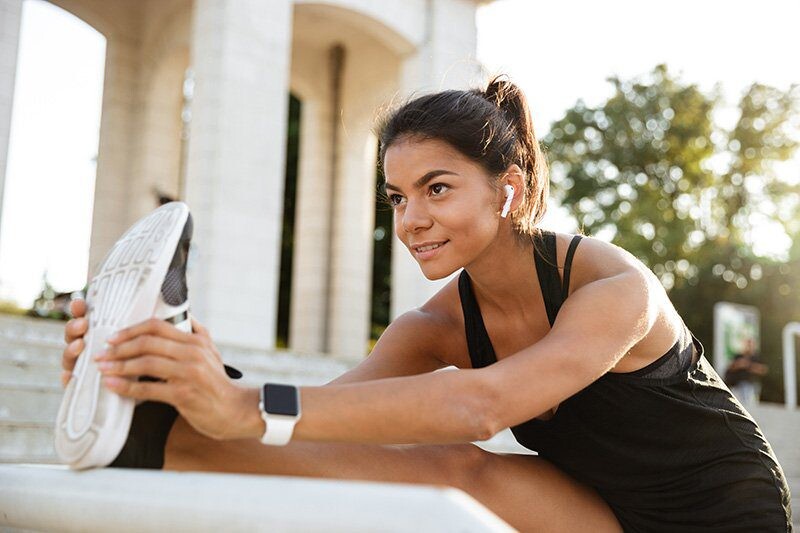
Inflammation is often treated as a bad thing, but it has an important role to play in our immune response. When you get sick or injure yourself, a certain amount of inflammation is necessary to fight off an infection or heal the injured tissue. Problems begin when you have excessive inflammation. Heart disease, diabetes, many autoimmune diseases and cancers all start because of an excessive inflammatory response from your body’s immune system. (COVID-19 was another example of the deleterious effects of an excessive immune response, which ended up attacking otherwise healthy organs in the body.)
Exercise is known as an immunomodulator. This means it helps your body moderate its immune response at the onset of illness or injury, ensuring its inflammatory response is just enough to allow for healing, without going overboard and causing a cascade of other problems

The study
The study, which was performed on mice, showed that moderate-intensity exercise had a “training effect” on the precursors for macrophages (the white blood cells that are responsible for mounting an inflammatory response and are your body’s first line of defense against infections). After the mice underwent a regular, moderate-intensity exercise regime, they experienced a “persistent metabolic rewiring and changes to chromatin accessibility in bone marrow-derived macrophages (BMDMs), which, in turn, tempers their inflammatory responses.”
In other words, exercise changed the way the cells breathed, according to Faculty of Health Associate Professor and York Research Chair Ali Abdul-Sater.
“Much like if you train your muscles through exercise, we showed that exercise of moderate intensity ended up training the precursors of those macrophages in the bone marrow,” says Abdul-Sater. “The way that exercise is doing this is by changing the way those cells breathe, essentially, how they use oxygen to generate energy and then changing the way they access their DNA.”
The cool part about these results is that the changes they were seeing weren’t temporary. While there are plenty of studies demonstrating the temporary immune-boosting effects of exercise, these results showed that the changes to the mice’s immune systems were still evident a week later.
Of course, if you’re wondering how well a mice study translates to humans, the researchers believe their findings are very applicable to us. As complex as our immune system is, it is also very ancient, which means that it is much the same across all mammals.
“The thing with humans is there’s no intervention that will work on everyone. We know that, but what this study suggests is that moderate and persistent exercise not only improves metabolic health, but also will improve immune health in the long run,” says Abdul-Sater.
The takeaways
If nothing else, this study reinforces the importance of exercise in a healthy immune system. But note that these benefits were demonstrated with a regular, moderate-intensity exercise regime.
Marathon training, for example, is generally not considered to be moderate exercise, and this study did not look at how a high-mileage or high-intensity running program affects the immune system. In fact, there is some research to demonstrate that bouts of high-intensity exercise (like running) in excess of one hour can actually have a temporary immuno-suppressing effect.
This doesn’t mean you should stop training, but runners need to be particularly careful that they’re eating enough to support their activity, that they’re eating plenty of fruits and vegetables, getting enough sleep and prioritizing recovery. It’s equally important that when you do get sick, you cut back on your training or take a break until you’re better, for the sake of your immune system.
(07/18/2023) Views: 505 ⚡AMPby Running Magazine
2026 Commonwealth Games in doubt after Australian hosts pull out over funding row
Australian state cites rising costs as reason to cancel their plans to host the Games
The 2026 Commonwealth Games are in doubt after Victoria announced it would not host the event anymore.

State Premier Daniel Andrews stated that an increase in costs from £1.4 billion to £3.7 billion was the primary reason for the cancellation.
“When the Commonwealth Games needed a host city to step in at the last minute, we were willing to help – but not at any price,” he tweeted. “And not without a big lasting benefit for regional Victoria.”
“It’s now clear: more than AUD$6 billion for a 12-day sporting event is just too high. It’s more than twice the estimated economic benefit the Games would bring our state.”
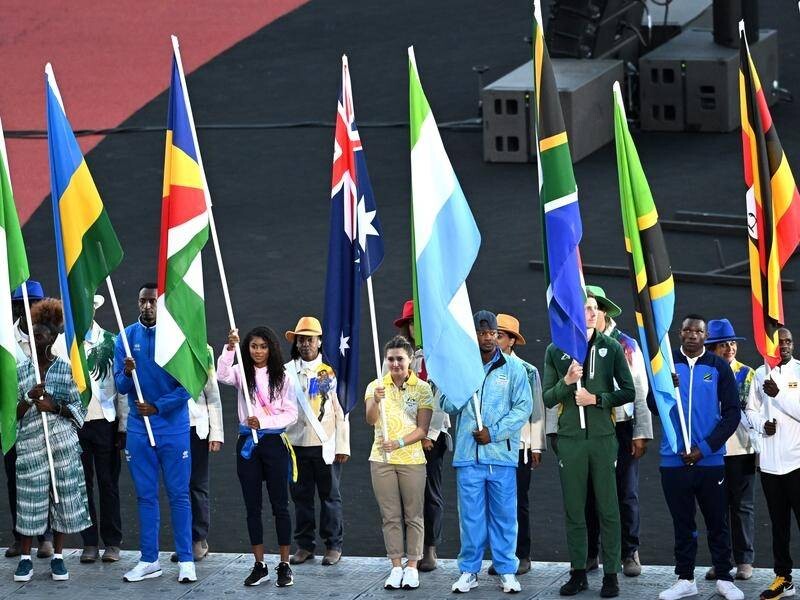
Victoria had come to the rescue of the Commonwealth Games Federation last March when they offered to host the 23rd edition of the event.
The Games were to be held between March 17-29 2026, across five regional Victoria centers in Geelong, Bendigo, Ballarat, Gippsland and Shepparton. Melbourne was due to host the Opening Ceremony.
However, the Australian state has now followed Durban – the South African was stripped of their bid to stage the 2022 Games in 2017 due to financial constraints – in being the second consecutive Commonwealth Games host to have withdrawn.
“This is hugely disappointing for the Commonwealth Sport Movement, for athletes around the Commonwealth and the Organizing Committee who are well advanced in their planning and preparation,” the CGF said in a statement.
More than 5,000 athletes from 56 countries and territories were due to compete in 21 sports.
(07/18/2023) Views: 422 ⚡AMPby Tim Adams
The Commonwealth Games
The Commonwealth Games are coming to Victoria - bringing an action packed sports program to our regional cities and delivering a long-term legacy for our future. From 17 to 29 March 2026, Geelong, Bendigo, Ballarat, Gippsland and Shepparton will be on the world stage, attracting millions of viewers and creating thousands of jobs. The multi-city model will...
more...Ferdinand Omanyala Confident Ahead of World Athletics Championships: Nothing but Gold
In the last few years, Ferdinand Omanyala has become one of the best sprinters in the world and is looking to cement that in August at the 2023 World Athletics Championships in Hungary.
He comfortably qualified for the event and will face stern competition from the Americans as he seeks to win one of the most important titles in his career.

The 27-year-old is Africa's fastest man but has yet to win a Diamond League race so far this season. He will take part in the Monaco Meet later this month. He recently clocked 9.85 seconds to win the national trials. Unfortunately, he will be the only man to represent Kenya in the 100m race.
The Commonwealth Games champion has a personal best of 9.77 seconds and wants to run 9.60 seconds. Only three men in history have run under 9.70 seconds, Usain Bolt, Yohan Blake, and Tyson Gay, per World Athletics. Therefore, it will be an uphill task for the Kenyan star.
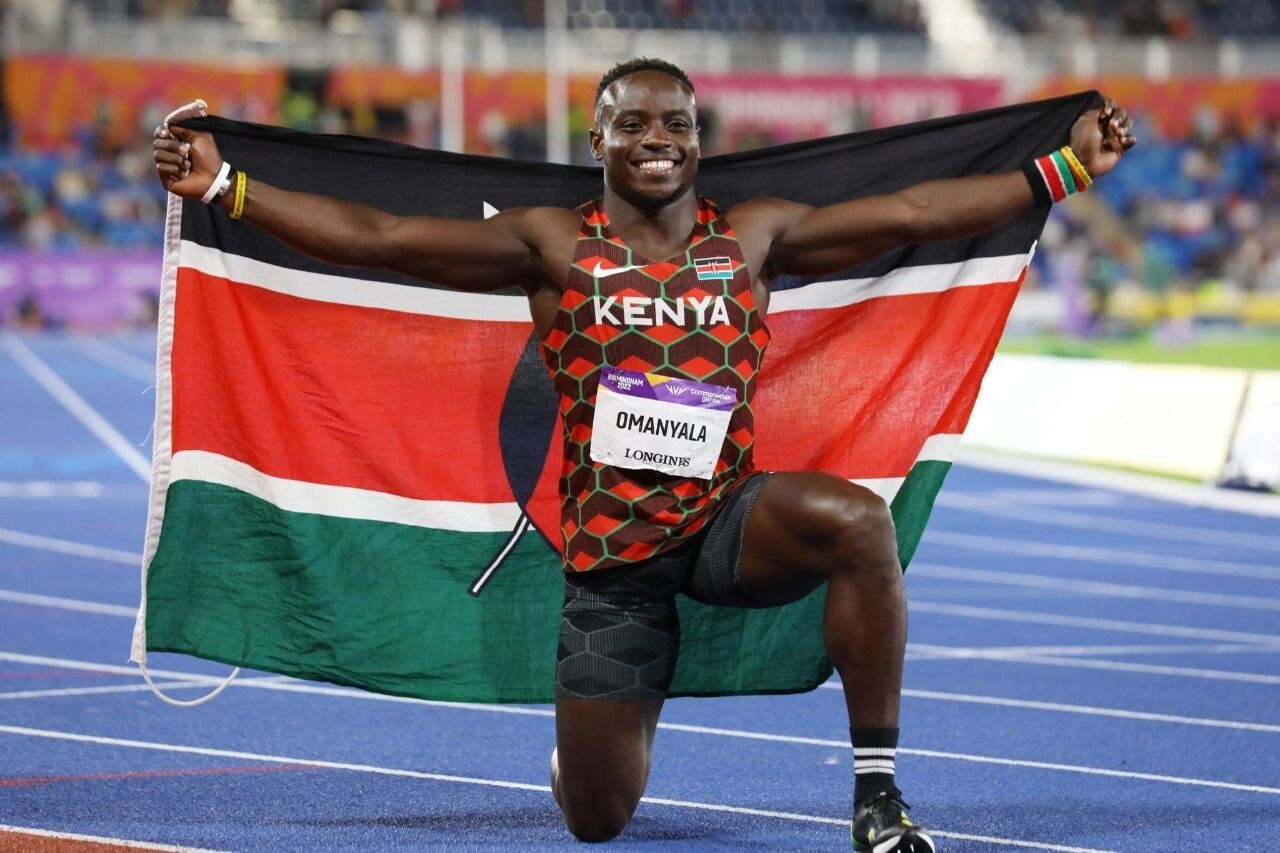
Omanyala's mindset heading to Budapest
Kenya is known for their middle and long-distance running, producing world-beaters for decades. Omanyala will make history if he beats defending world and Olympic champion Fred Kerley to win gold in Budapest.
He is confident going to the showpiece.
Kenya has never won a medal in the 100m race, and Omanyala will be the first if he wins it.
Omanyala leads Diamond League standings
Sports Brief previously reported on Omanyala being on course to qualify for the Diamond League finals, with the Commonwealth champion leading the standings after five legs.
He raced in his second-ever Diamond League race against an elite field in Rabat on May 28. He then followed it up with back-to-back races in Florence, Italy, and in Paris, France.
Omanyala - Africa's fastest man - took podium places in all three races. He came in third in Morocco before claiming two consecutive second-place finishes in Italy and France.
(07/18/2023) Views: 501 ⚡AMPby Edwin Kiplagat
World Athletics Championships Budapest 23
From August 19-27, 2023, Budapest will host the world's third largest sporting event, the World Athletics Championships. It is the largest sporting event in the history of Hungary, attended by athletes from more than 200 countries, whose news will reach more than one billion people. Athletics is the foundation of all sports. It represents strength, speed, dexterity and endurance, the...
more...Practice race-day pacing with this workout
Learn how to dial into your 5K and 10K pace with these timed intervals
Part of the art of running is learning how to get into your planned pace and maintain it, then sprinting to the finish line. Many runners have fallen into the trap of going out too hard or too easy, only to crash and burn in the last few kilometers, or have too much left in the tank at the finish. This simple workout will help you practice your pace for the 5K and 10K so that you know how it feels and when race day comes, you can nail your pacing like a pro.
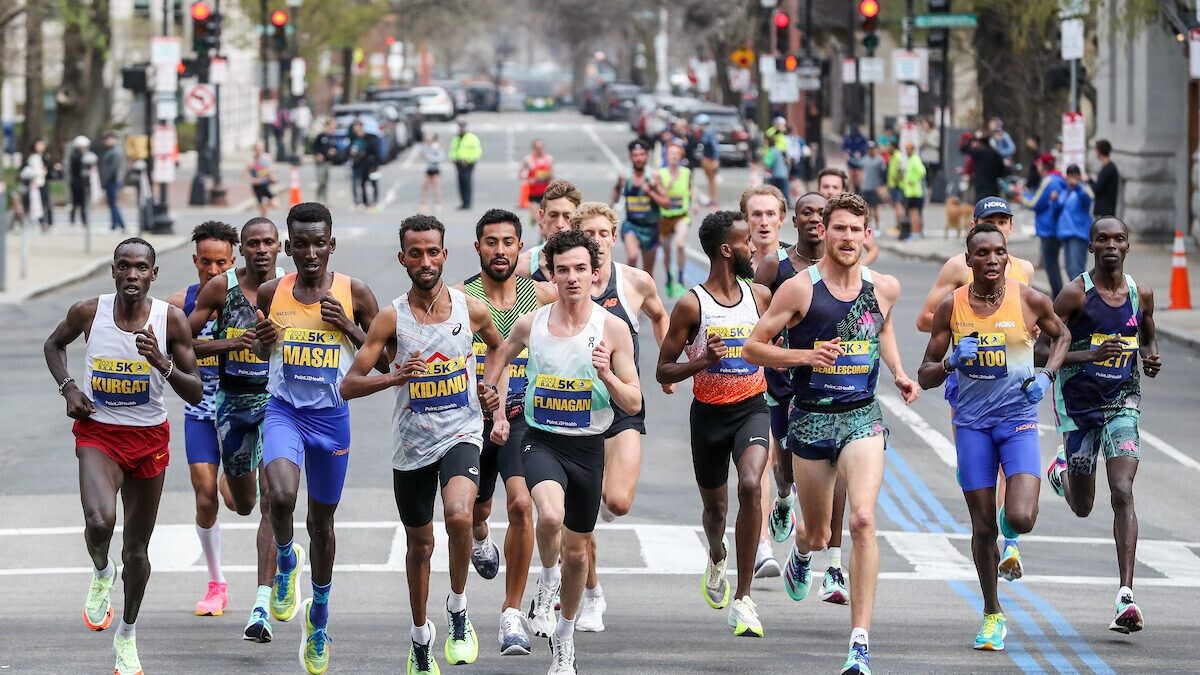
There are three parts to this workout: the first is a short tempo run. You can think of this as an extension of the warmup, where you’re giving your body a chance to work down to the faster paces you’ll be trying to hit in the rest of the session. To do this, start at about half-marathon pace and gradually speed up so that you’re running your 10K pace by the end (say, for the last 20-30 seconds).
The second two sections are your chance to practise your 5K and 10K paces. Transitioning from tempo pace to 5K pace might feel awkward, so if you don’t hit your pace perfectly on the first fast interval, don’t sweat it–you’ve got three more chances to nail it down. Complete the workout by running another longer interval, this time at 10K pace. When you’re doing this after the short intervals, it will be tempting to start out too fast, so be sure to stay focused right from the start.
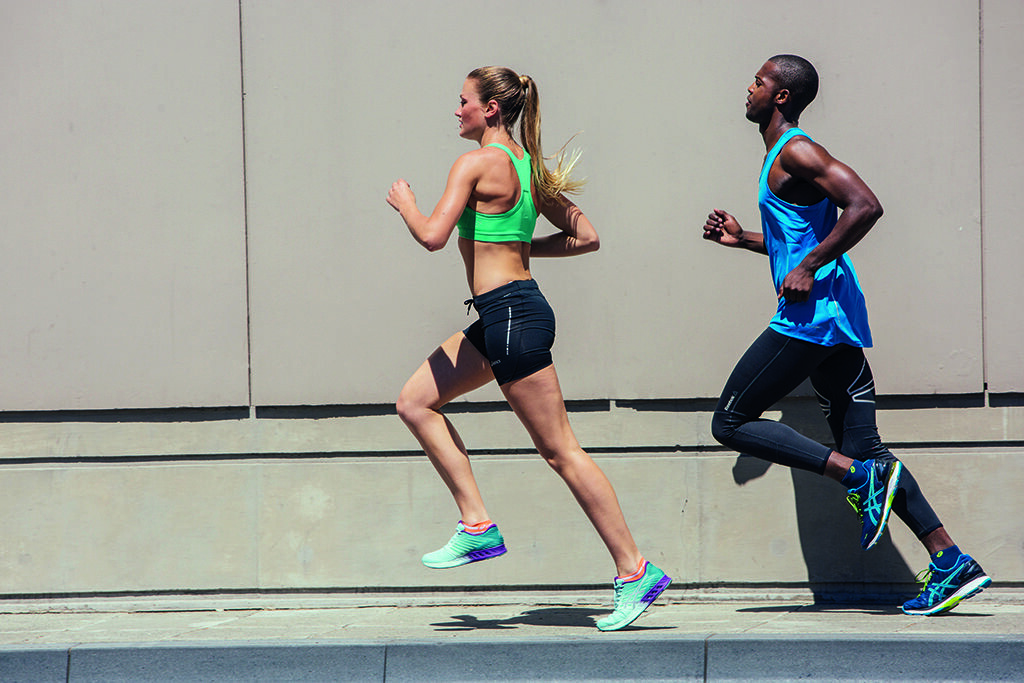
The workout
Warmup: 15-20 minute easy jog
Workout:
5-minute tempo run, followed by 2 minutes of rest
4 x 2 minutes at 5K pace, with 1:30 rest between each interval
5 minutes at 10K pace
Cooldown: 10-15 minutes easy jogging, followed by light stretching
(07/18/2023) Views: 567 ⚡AMPby Brittany Hambleton
Cardboard beds for athletes to return at Paris 2024 Olympics
The infamous beds are back! 16,000 cardboard beds will be supplied for all Olympic and Paralympic athletes plus media.
The cardboard beds that went viral from the Tokyo 2020 Olympics will make a resurgence at the 2024 Games in Paris. The 2024 Olympic organizing committee confirmed that they have selected Japanese mattress manufacturer Airweave, which will supply an impressive tally of 16,000 cardboard beds for all athletes housed in the Olympic and Paralympic Villages, as well as journalists staying at the Media Village.

To relieve any concerns about the size, these beds come in a standard dimension of nearly three feet wide and six and a half feet in length. However, the beds can be extended to 2.20 meters for tall athletic superstars (like seven-foot basketball player Victor Wembanyama of France). After all, we don’t want Olympians’ or Paralympians’ legs dangling off the end of the bed.
You might recall the frenzy on social media surrounding these cardboard beds during the previous Olympics. Some suggested that Tokyo 2020 organizers were being “anti-sex,” as if these beds were specifically engineered to sabotage athletes’ romantic and athletic endeavors. The rumors were swiftly debunked when videos flooded the app TikTok showing Olympic athletes jumping on the beds to test their sturdiness.

Two-time U.S. Olympic 5,000m medalist Paul Chelimo shared his thoughts on the cardboard beds, stating that it likely wouldn’t be a problem for distance runners, and how they could probably fit four of them.
Motokuni Takaoka, the esteemed founder of Airweave, joined the athletes in this whimsical testing routine. He gleefully jumped on the beds himself to demonstrate their durability, exclaiming, “We have designed these cardboard beds for three or four people jumping because after winning a medal, athletes get very happy!” Who can argue with that?
Paris 2024 president Tony Estanguet expressed his satisfaction with Airweave’s beds, praising their use of recycled materials in line with the organizing committee’s sustainability aspirations. “We were impressed by Airweave’s technology,” he said in a press release. “We know that we have a solid partner in terms of sustainability and delivery.”
When cardboard beds reach the end of their useful life at the Olympics, they are broken down and recycled. Unlike other materials that may contribute to landfill waste, cardboard is biodegradable, making them an easy eco-friendly choice to promote a greener Olympic Games.
(07/17/2023) Views: 474 ⚡AMPby Running Magazine
Paris 2024 Olympic Games
For this historic event, the City of Light is thinking big! Visitors will be able to watch events at top sporting venues in Paris and the Paris region, as well as at emblematic monuments in the capital visited by several millions of tourists each year. The promise of exceptional moments to experience in an exceptional setting! A great way to...
more...Three things ultra beast Courtney Dauwalter can teach all runners
Courtney Dauwalter has been stunning the ultratrail world over and over: not only does she keep winning every race she runs, but she’s been obliterating course records and beating almost all of the men. On Sunday, the Leadville, Colo.-based athlete annihilated the Hardrock 100 course record, finishing an incredible fourth place overall, only three weeks off setting a blistering new Western States 100 record. Here’s what you can learn (no matter your distance of choice) from the way Dauwalter trains and races.
1.- Run with joy and gratitude
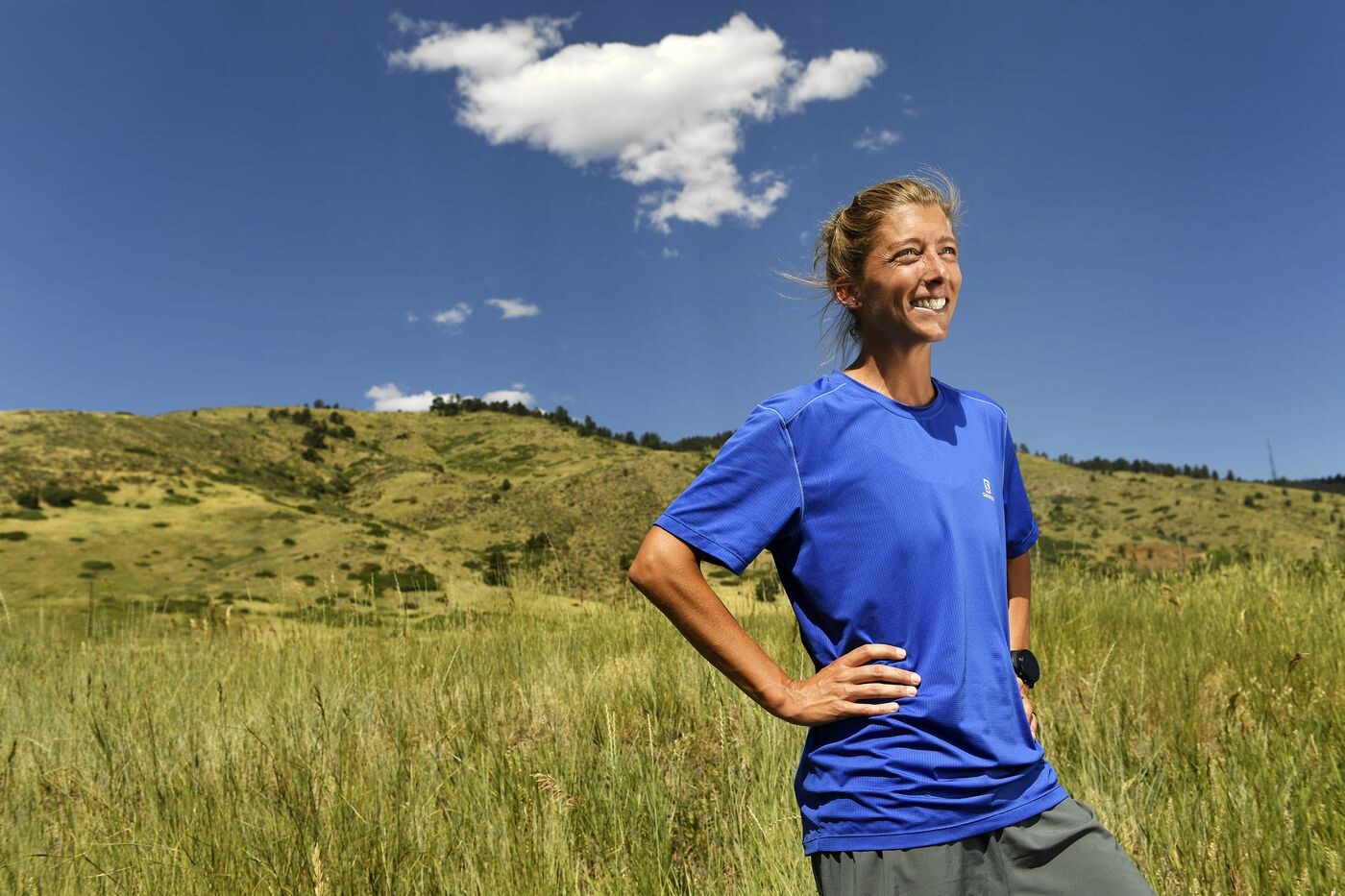
It sounds simple, right? Running and racing should make us happy, but training can all too easily get filed as a chore on an endless to-do list. Dauwalter exudes joy and gratitude when she races, no matter the day or situation. Dauwalter is known by competitors and fans alike for the big smile she shares with everyone on the course.
She effusively thanks volunteers and takes time to ask how her crew is doing. She high-fives all the little kids. On the Some Work All Play podcast, coach and ultrarunner David Roche asked Dauwalter what she would like her legacy to be. The trail phenom answered with her trademark humility and graciousness: “In general? That I made people smile and laugh and have a good time.”
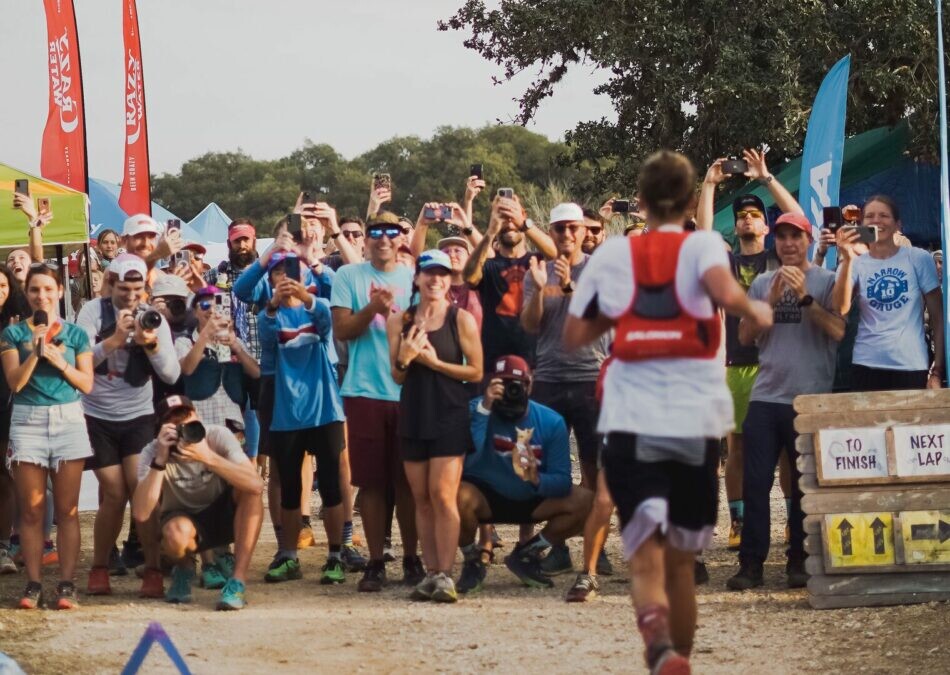
Most of us won’t win a course record at a world-renowned event, but we can embody Dauwalter’s attitude in our own training and races. Checking in with others, savouring the fun of moving our bodies, and that simple thing, smiling, will make everything feel a little bit easier and a lot more fun.
2.- Adjust your training according to how you are feeling
Dauwalter has no coach, doesn’t follow a strict training plan, and goes by feel. She’s clearly perfected the art of self-awareness over time, but there’s a takeaway there for all of us. Even though it can be incredibly helpful for runners to follow a program or have guidance while they train, keeping a reserve of flexibility and using self-check-ins can help the regular runner optimize their performance.
“There are so many ways to train, enjoy, and go after running goals. Having a training plan, using devices and analyzing data, or not doing any of those things, are all great options,” Dauwalter recently explained to trailrunnermag.com “I think it depends on the person and how they find joy. But I also think there is no downside to occasionally leaving the watch at home and heading out the door for a run where you just listen to your body and not worry about metrics.”
Keep things loose, and be willing to adjust your plans if you feel the need for a data-free jaunt or when you note that your body is needing more rest.
3.- Eat with exuberance
Dauwalter is known for her sweet tooth and habit of fuelling long races with cheese quesadillas. She’s often heard asking for her post-race beer, and even her Instagram tagline declares her a lover of long inseams and candy. Dauwalter told Roche that she refuses to restrict what goes into her body: “If it sounds good, if it tastes good, if it fulfills a craving, then it’s exactly the thing that I’m eating.” Eating makes her happy.
Eating has a complicated dynamic for some, and runners come from a wide array of nutritional needs and preferences. Whatever your relationship with food and fuel, bringing Dauwalter’s enthusiastic spirit into your kitchen or food choices can make food more fun.
(07/17/2023) Views: 551 ⚡AMPby Keeley Milne
Utah’s Clayton Young won the Crazy 8s 8K title on Saturday night
Utah’s Clayton Young bided his time until the last moment and made a strong move to win Saturday’s 33rd Ballad Health and Niswonger Children’s Hospital Crazy 8s 8-kilometer run on the candle-lit streets of the Model City.
With 200 meters to go, Young — the 2019 NCAA 10,000-meter champion from BYU — broke away from a group of six runners as he made his way into J. Fred Johnson Stadium to claim his second USATF title in 22:46 and the $5,000 that went along with the win.
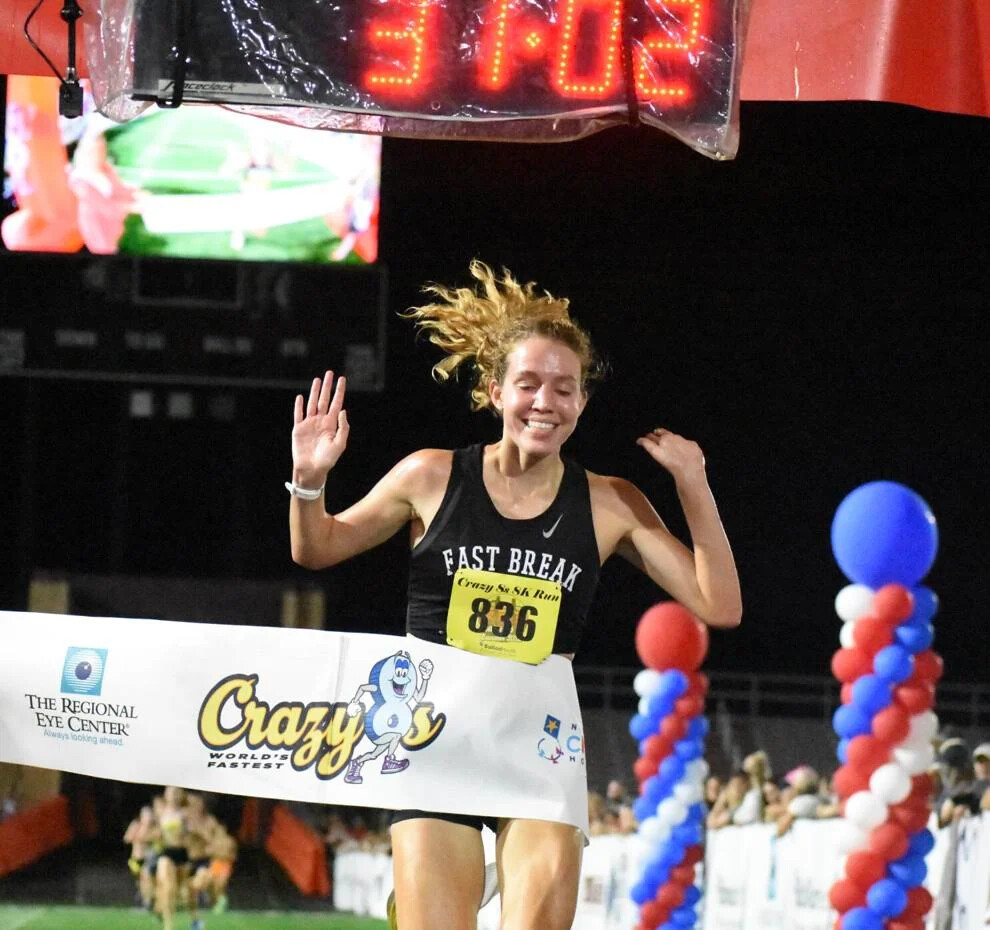
There were nearly 3,200 finishers in Saturday’s races, including the Almost Crazy 3K, which was up almost 300 from last year.
“I was talking with my teammate Conner Mantz, who was runner-up last year and he said when he made his move, he felt like it wasn’t strong enough,” Young said. “He told me that I should be making that move before I turn up the hill. When I made my move, I was thinking about him and how he coached me through those final stages.”
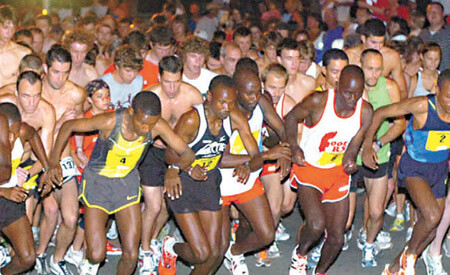
Alberto Salazar’s American record of 22:04 lived another day. The start of the race was delayed by 45 minutes because of a strong thunderstorm that swept through the area.
“I had a lot of confidence going into this race,” Young said. “I’ve trained with Conner a lot and he’s had a great season, so that was a pretty good indicator. I just rode his coattails and went out there to see what I could do today.”
ZAP Endurance runner Andrew Colley was runner-up, finishing in 22:48. Oklahoma State graduate Isai Rodriguez took out the pace early and finished third in 22:49.
Young — who won the 2021 USATF 15K title in Jacksonville, Florida — trains with Mantz and now he’s got one up on his former BYU teammate.
“It’s finally nice to win another U.S. championship,” Young said. “You’ve got to celebrate all the victories, no matter how big or small they are. They keep you going and keep you motivated.
“To feel that strength over the last 800 meters was really validating and hopefully it’ll propel me through these next couple of races and into a fall marathon.”
Kingsport native Emma Russum — a member of Dobyns-Bennett’s 2019 state cross country state title team who now runs for Chattanooga — won the women’s division in 31:02.
It’s a dream come true of sorts for Russum, who’s regularly run the race since she was 6 years old.
“It feels really good to win and it’s even better because I got second last year,” Russum said. “I ran 20 seconds slower than last year, but it was super fun and I definitely was trying to keep a more relaxed effort at the beginning.
“People were yelling at me in the last bit that a girl was coming, so I had to kick it in. I love this race and I’ve been running it since I was big enough to run in (Little 8s).”
Russum made a little bit of area history as well, becoming the third local female runner to win the Crazy 8s title. She joined Johnson City’s Jenna Hutchins and Bristol, Virginia’s Stephanie Place.
“It’s really cool to be a part of such a short history of local winners,” Russum said.
(07/17/2023) Views: 646 ⚡AMPby Tanner Cook
Crazy 8s 8k Run
Run the World’s Fastest 8K on the world famous figure-8 course on beautiful candle-lit streets with a rousing finish inside J. Fred Johnson Stadium. Crazy 8s is home to womens’ 8-kilometer world record (Asmae Leghzaoui, 24:27.8, 2002), and held the men’s world record (Peter Githuka, 22:02.2, 1996), until it was broken in 2014. Crazy 8s wants that mens’ record back. ...
more...Stephanie Bruce on running while pregnant: “It doesn’t have to make sense to everyone”
"This is a gift–to be out doing what I love while growing a baby," Bruce says.
American marathoner Stephanie Bruce is not letting pregnancy slow her down. In May, 18 weeks into her third pregnancy, Bruce was the top female finisher at the Big Sur 12K in 45:41, coming in second overall, only a minute behind first place.
Known for her upfront talk about post-pregnancy running after the birth of her other two children, Bruce has been sharing social media updates chronicling the joys and challenges of running (and racing) while pregnant, noting, “It doesn’t have to make sense to everyone.”

Bruce has had a prolific career in cross-country, representing the U.S. twice at the World Cross Country Championships, in 2017 and 2019. Bruce was the second American behind Emma Bates at the 2019 Chicago Marathon, where she ran her personal best time of 2:27:47, and she had a 10th place finish at the NYC Marathon in November (2:31:05). She has spent the last decade training with Ben Rosario’s Hoka NAZ Elite team in Flagstaff, Ariz.
In January 2022, Bruce announced she would be retiring at the end of the season, after she was diagnosed with a congenital heart condition called bicuspid aortic valve disease (BAVD), a dysfunction of the aorta valve limiting the amount of blood flowing from your heart to the body.

A few months later, in what she called “the pivot,” she changed her mind, sharing on her blog that “after a period of deep reflection–now I have had a change of heart. I am not ready to hang up my racing shoes.”
A few months later, Bruce announced her pregnancy. The athlete plans to return to racing competitively after her baby is born and has been documenting her journey to inspire others. Bruce says still she can still run reps between a 3:00 and 3:30 min/km pace, but is finding turning over in bed is becoming difficult. In her third trimester, she says that she misses competing.
Bruce explains her goal in sharing her pregnant running experience: “To show women our bodies can handle it, if we choose, not everyone and that’s ok if we stay on the couch and don’t feel motivated. Every pregnancy experience is different and I am simply sharing how mine is playing out.”
Bruce recently published a book, written with Rosario, titled Follow Your Heart, The Story of Stephanie Bruce’s Not-So-Final Season.
(07/17/2023) Views: 542 ⚡AMPby Keeley Milne
When Will Eliud Kipchoge Slow Down?
What we can learn from the world’s greatest distance runner of all-time while he’s still in his prime
Eliud Kipchoge has expanded the universe of what’s humanly possible in the marathon, and he will forever remain a legend in the sport of long-distance running.
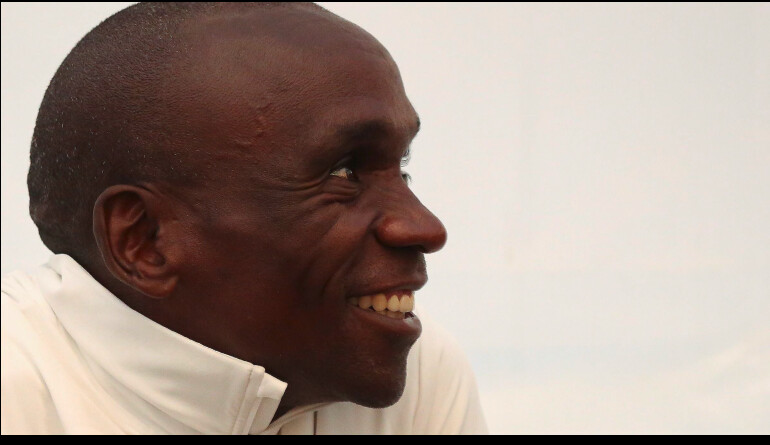
Not only for himself, but especially for those who have come after him. That includes everyone, both elite and recreational runners, who are preparing a marathon this fall or some distant point in the future. His current 2:01:09 world record and his barrier-breaking 1:59:40 time-trial effort in 2019 are legendary feats, both for the current generation of runners and for all time.
The 38-year-old Kenyan marathoner is a once-in-a-lifetime athlete, but time waits for no one, and especially not a long-distance runner. Like all elite athletes, his time at the top is limited, but fortunately, there is still time to immerse in the inspirational examples he’s providing.
Kipchoge recently announced he’ll return to the Berlin Marathon on September 24, where, last year, he won the race for the fourth time and lowered the world record for the second time. It is most likely what will be the beginning of a grand denouement as he goes for another gold medal at the 2024 Olympics next summer in Paris.
Given that he won his first global medal in the City of Light—when, at the age of 18, he outran Moroccan legend Hicham El Guerrouj and Ethiopian legend-in-the-making Kenenisa Bekele to win the 5,000-meter run at the 2003 world championships—it would certainly be one of the greatest stories ever told if he could win the Olympic marathon there next year when he’s nearly 40.
Certainly he’ll run a few more races after the Olympics—and maybe through the 2028 Olympics in Los Angeles—but, realistically, it is the start of a farewell tour for a runner who will never be forgotten.
Don’t get me wrong: I’m not at all writing Kipchoge off. In fact, I am excited to see him run in Berlin and can’t wait to watch next year’s Olympic marathon unfold. But just as we’ve watched Michael Jordan, Tiger Woods, Serena Williams, Shalane Flanagan, Usain Bolt, Allyson Felix, and other elite athletes succumb to the sunsetting of their peak performance level, so too will Kipchoge eventually suffer the same fate.
What I’m saying here is that we still have time to watch and appreciate Kipchoge eloquently working his magic and continue to be inspired in our own running and other pursuits in life. Remember how we marveled at Michael Jordan’s greatest in “The Last Dance” more than 20 years after his heyday? This is the start of the last dance for Kipchoge, who, like Jordan, is much, much more than a generational talent; he’s an all-time great whose legacy will transcend time.
Running has seen many extraordinary stars in the past 50 years who have become iconic figures— Frank Shorter, Joan Benoit Samuelson, Ted Corbitt, Carl Lewis, Steve Jones, Paul Tergat, Catherine Ndereba, Paula Radcliffe, Haile Gebrselassie, Kenenisa Bekele, Mary Keitany, Brigid Kosgei, and Kilian Jornet, to name a few—but none have come close to the body of work and global influence of Kipchoge.
Not only is Kipchoge one of the first African athletes to become a household name and truly command a global audience, but he’s done more than other running champions because of he’s been able to take advantage of this advanced age of digital media to deliberately push positive messages and inspiring content to anyone who is willing to receive it.
Kipchoge has won two Olympic gold medals, set two world records, and won 17 of the 19 marathons he entered, but he’s so much less about the stats and bling and more sharing—to runners and non-runners alike—that “no human is limited” and also that, despite our differences, we’re all human beings faced with a lot of the same challenges in life and, ultimately, hard work and kindness are what put us on the path to success.
How can an average runner who works a nine-to-five job and juggles dozens of other things in daily life be inspired by an elite aerobic machine like Kipchoge?
He is supremely talented, no doubt, but many elite runners have a similar aerobic capacity to allow them to compete on the world stage. What Kipchoge uniquely possesses—and why he’s become the greatest of all-time—is the awareness and ability to be relentless in his pursuit of excellence, and the presence and good will of how beneficial it is to share it.
If you haven’t been following Kipchoge or heard him speak at press conferences or sponsor events, he’s full of genuine wisdom and encouragement that can inspire you in your own running or challenging situation in life. His words come across much more powerfully than most other elite athletes or run-of-the-mill social media influencers, not only because he’s achieved at a higher level than anyone ever has, but because of his genuine interest in sharing the notion that it’s the simplest values—discipline, hard work, consistency, and selflessness—that make the difference in any endeavor.
This is not a suggestion to idolize Kipchoge, but instead to apply his wisdom and determination into the things that challenge you.
“If you want to break through, your mind should be able to control your body. Your mind should be a part of your fitness.”
“Only the disciplined ones in life are free. If you are undisciplined, you are a slave to your moods and your passions.”
“If you believe in something and put it in your mind and heart, it can be realized.”
“The best time to plant a tree was 25 years ago. The second-best time to plant a tree is today.”
Those are among the many simple messages that Kipchoge has lived by, but he also openly professess to giving himself grace to take time for mental and physical rest and recovery. It’s a simple recipe to follow, if you’re chasing your first or fastest marathon, or any tall task in life.
Kipchoge seems to defy age, but his sixth-place finish in the Boston Marathon in April proved he’s human. As much as it was painful to watch him falter, it was oddly refreshing and relatable to see him be something less than exceptional, and especially now that he’s tuning up for Berlin. He has nothing left to prove—to himself, to runners, to the world—but he’s bound to keep doing so just by following the same simple, undaunted regimen he always has.
There will be other young runners who will rise and run faster than Kipchoge and probably very soon. Fellow Kenyan Kelvin Kiptum—who has run 2:01:53 (Valencia) and 2:01:25 (London) in his first two marathons since December—seems to be next in line for Kipchoge’s throne of the world’s greatest runner. But even after that happens, Kipchoge’s name will go down in history alongside the likes of Paavo Nurmi, Abebe Bikila, Emil Zátopek, Grete Waitz, Shorter and Samuelson because of how he changed running and how he gave us a lens to view running without limits.
Berlin is definitely not the end of Kipchoge’s amazing career as the world’s greatest long-distance runner. I fully expect him to win again in an unfathomable time. But the sunset is imminent and, no matter if you are or have ever been an aspiring elite athlete at any level, a committed recreational runner, or just an occasional jogger trying to reap the fruits of consistent exercise, his example is still very tangible and something to behold.
(07/16/2023) Views: 1,108 ⚡AMPby Outside Online
This Olympian Runner’s Go-To Endurance Salad Couldn’t Be Easier
There’s nothing difficult about this nutrient-dense green recipe to keep the immune system strong and recovery speedy
For me, salads have always been the culinary equivalent of a sad trombone. I’m active. I want something warm and hearty after a hard effort, not the stuff you give the class gerbil in elementary school. This, I know, is a wildly outdated characterization of salads, if not a surprising one coming from a vegetarian.
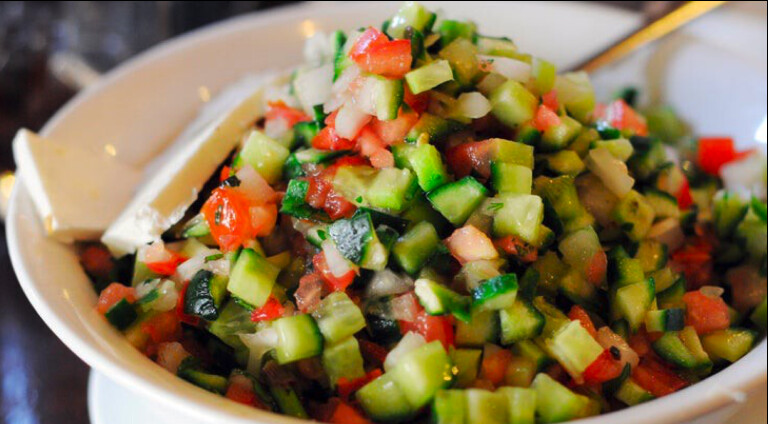
But I live in Germany, where there are a lot of rules, and a lot of exceptions to those rules. My exception for salads is the Israeli salad, usually defined as a chopped salad with diced tomatoes, onions, and cucumbers topped with a light, lemon-based vinaigrette. Simple, right? A recent trip to Israel coupled with a chat with none other than Olympian runner Maor Tiyouri helped me change my perspective.
Tiyouri is a wildly accomplished Israeli Olympic long-distance runner. Over the course of her career, she’s held the national record in the 5,000-meter run and is a three-time national champion. So it’s fair to wonder: what’s fueling these impressive performances?
Although she doesn’t credit one dish to her success, she’s quick to mention the Israeli salad. Tiyouri describes it as a staple of her diet; something she eats twice a day. But that wasn’t always the case.
Tiyouri admits that she slacked off on the salads. Then her nutritionist, Tamar Ashlagi, told her in plain medical terms: “You’re Israeli! You have to eat salad every day. Where are your Israeli roots?” Ashlagi is the nutritionist for the Israeli Olympic windsurfing, sailing, and long-distance running teams. She encourages everyone to eat salads, which she says are an important component of the Israeli and Mediterranean diet.
“In Israel, there is a large, readily available variety of vegetables, and they are relatively cheap. There are a lot of possibilities for preparing a salad using seasonal vegetables,” she explained. “The salads can be simple and don’t require too much time to prepare, making them readily available even for tired or busy individuals.”
Of course, it’s not just about their simplicity. Salads are fundamentally good fuel for long-distance runners. “The high fiber content is beneficial for the gut microbiome and digestion,” she said.
Introducing more salads into Tiyorui’s diet wasn’t just about honoring her Israeli roots. A veggie-rich, nutrient-dense salad full of fiber like the Israeli salad is a welcome addition to any runner’s diet.
“Israeli salads contain multiple types of vegetables and are usually seasoned lightly with olive oil, which is beneficial for the cardiovascular system,” Ashlagi explained. “It is common knowledge that every vegetable has different nutritional values. Therefore, the more colorful the salad is, the more nutritious it is.”
A colorful salad usually means more vitamins, minerals, and antioxidants, which are known to be anti-inflammatory. In other words, Israeli salads can play a nutritional role in an endurance athlete’s recovery and combating free radicals, not to mention the high fiber content helps regulate blood sugar.
That said, this doesn’t mean you should start stuffing your face with salads every chance you get. “Athletes should be aware that eating a salad close to training or competition is not a good idea because of the high fiber content that can cause gut discomfort due to slow digestion,” Ashlagi explains.
For Tiyouri, Israeli salads come with a bonus benefit. It’s a taste of home for the 32-year-old, now based in Boulder, Colorado.
“When I miss home, I want to make it,” she says. Now it’s part of her morning routine. She’ll cut up some tomatoes, cucumbers, and top it with olive oil, lemon, salt, and pepper. “I usually do that in the morning, after a workout and with dinner,” she says.
Tiyouri isn’t rigid with her Israeli salads. As long as it has tomatoes and cucumber, she welcomes some greens (spinach, arugula) and additional veggies (radishes, red bell pepper), even Israeli feta cheese if she can get her hands on some. It all depends on what she has available in her fridge, what’s in season, and frankly, what she needs to eat before it spoils. “Sometimes I just want to throw everything in there,” she says.
This just might be the easiest dish to make in the series so far. At minimum, all you need is a cucumber, some grape tomatoes, olive oil, lemon, salt, and a knife to make it all happen.
But we’re not about doing the bare minimum. For this recipe, we’re adding some color—chopped red bell pepper and a carrot along with some of Tiyouri’s favorite bonus regional ingredients, feta cheese and cilantro.
This recipe also adds chopped dates. Why dates? Because they come up time and time again when you ask Israeli athletes about some of their favorite endurance snacks. They grow well in Israel where the temperatures can crawl above 100 degrees Fahrenheit and can be eaten directly from the tree.
Nutritionally speaking, Ashlagi notes that dates are a good source of carbohydrates, glucose, and fructose—making them a quick and optimal source of quick energy for exercise.
“Dates can serve as a replacement for around two energy gels,” she explained. “It’s also a great snack if you desire something sweet, if consumed moderately.”
Within the Israeli salad, dates offer a sweetness to balance out the saltiness of the feta.
You can adjust the quantities in this recipe as you like. And like Tiyouri, feel free to add an extra veggie or swap some out for your favorite vegetables. Not only will she throw in a radish from time to time, she might cut up some avocado or toss in some corn. Put in whatever ingredients are going to make you excited about having this salad. Below is a recipe to get you started.
Ingredients
Serves: 2 people
Instructions
1) Halve your cucumber and slice each half lengthwise into four slices. Hold the slices together like a bouquet and chop them into small pieces. Add them to a medium-sized mixing bowl.
2) Halve the tomatoes and add them to the bowl along with the red bell pepper, carrot, dried dates, and finely chopped cilantro.
3) Soak minced red onion in lemon juice and set aside.
4) Cube the feta cheese or crumble it directly into the bowl with your hands. Add the kosher salt, black pepper, olive oil, and lemon juice with onions. Mix thoroughly until the salad is well coated and serve.
(07/16/2023) Views: 370 ⚡AMPby Outside Online
2023 Hardrock 100 Women’s Race
If it wasn’t for Courtney Dauwalter (pre-race interview) running the Western States 100 just three weeks prior, crushing the women’s record there, and potentially being a bit worn out at the start line of the Hardrock 100, it would have been hard to find someone to bet against her winning the race this year. But if she were to falter, there were several women who were ready to jump at the opportunity.
For the first part of the race, it seemed like France’s Anne-Lise Rousset Séguret was going to do just that. While Dauwalter led in the very early miles of the course, Rousset opened up a sizable gap coming through Maggie Gulch at mile 15.5 and was moving with enthusiasm toward Pole Creek, the next aid station. She came into Sherman at mile 30 in seventh overall in 6:29, looking strong. Dauwalter was just six minutes behind, and Annie Hughes (pre-race interview) came in next, 52 minutes off the lead. With still many miles to run, it was still anyone’s race. Frenchwoman Claire Bannwarth (pre-race interview) came through just seven minutes later and was followed by Japan’s Kimino Miyazaki (pre-race interview), who was 1:22 off the lead but looking spry and happy.
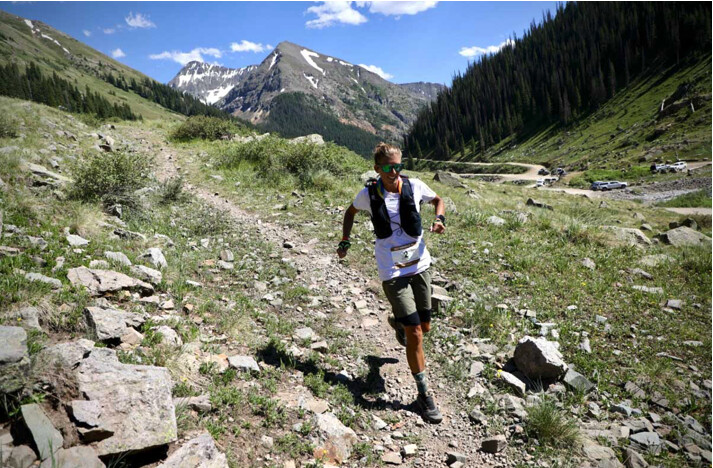
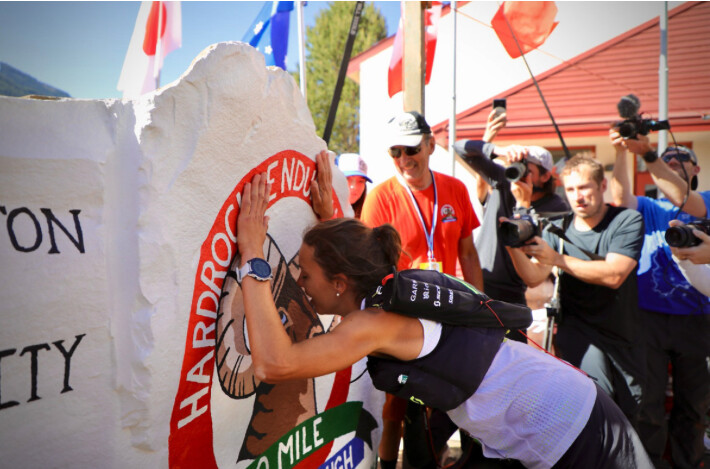
The top-two women came back together through Grizzly Gulch at mile 36 with Hughes trailing them at just under an hour back. When Rousset led Dauwalter into Grouse Gulch, mile 43.5, by nearly 10 minutes after traversing Handies Peak, the course high point, it seemed like maybe the Western States 100-Hardrock 100 double was going to be too much for Dauwalter to handle.
But it’s never a good idea to bet against the most dominant female trail ultrarunner of this generation. By mile 50, she’d closed the gap to four minutes, and in Ouray at mile 58.5, it was down to two minutes. When it came to the climb out of Ouray, Dauwalter made her move, and the elastic to Rousset finally snapped over the top of Virginius Pass. Dauwalter never looked back.
Meanwhile, Hughes stayed steady in third place while dealing with stomach issues and the rest of the women’s pack, including Miyazaki, Bannwarth, Christina Bauer, Whitney Mickelsen, Darla Askew, Becky Bates, and last-minute waitlist entrant Emily Halnon, who only got into the race the morning before, continued to chase — all within close proximity to each other.
Dauwalter ran into Telluride at mile 74.5, her pace still hovering just a few minutes over course-record pace, but now 23 minutes ahead of second-place Rousset, and executed the fasted crew stop of the Telluride aid station, getting in and out in under three minutes. She was on a mission.
Just 10 miles later, she was well below course-record pace, crushing the Bear Creek Trail climb out of Telluride and moving herself into third overall as some of the lead men began to falter. Rousset also continued her relentless march, and while she was 48 minutes back on Dauwalter at mile 84, she was only three minutes up on course-record pace.
In the end, there was no catching Dauwalter as she ran back to Silverton to kiss the rock with a new women’s counterclockwise course record of 26:14:08, besting the one set by the legendary Diana Finkel in 2009, and finishing fourth overall. She also set a new overall women’s record, beating her old time of 26:44:36, which she set last year.
Not only that, she set a new overall record for the Western States 100-Hardrock 100 double with a combined time of 41:43:42, beating Jeff Browning’s old record of 42:12:43 that he set in 2016.
Rousset would finish second after a gutsy run with a time of 27:29:55, which registers as the fifth-fastest time in event history, and Hughes would hold onto third with a time of 32:13:03 after spending nearly 100 miles battling stomach and breathing issues.With large gaps between the first, second, and third women, all eyes turned to the competition between fourth and 10th where the time gaps were tight and the women were often in the aid stations together in the back half of the race. Miyazaki and Bannwarth ran in close proximity to each other battling for fourth and fifth, while Mickelsen, Halnon, Bates, Askew, and Bauer seemed to maintain the same overall pace as the miles ticked by.
(07/16/2023) Views: 445 ⚡AMPby Eszter Horanyi -I run far
Hardrock 100
100-mile run with 33,050 feet of climb and 33,050 feet of descent for a total elevation change of 66,100 feet with an average elevation of 11,186 feet - low point 7,680 feet (Ouray) and high point 14,048 feet (Handies Peak). The run starts and ends in Silverton, Colorado and travels through the towns of Telluride, Ouray, and the ghost town...
more...2023 Hardrock 100 Men’s Race
Without any clear race favorite this year, the men’s race was wide open, and France’s Aurélien Dunand-Pallaz (pre-race interview) made the most of the opportunity to go to the front immediately, leading the race line-to-line. Even before the first mile was up, Dunand-Pallaz had opened up a gap on the rest of the field and never looked back, running steady and strong through the heat of the day and the dark of the night.
Behind Dunand-Pallaz, the race between the rest of the field never let up, but the gap to the leader continued to grow steadily as the hours passed. Silverton local Avery Collins (pre-race interview)led the early chase, along with Dylan Bowman (pre-race interview), who had finished second here in 2021. While Dunand-Pallaz was running his first Hardrock 100, Bowman had course experience on his side, and Collins had the course in his backyard to train on.Behind the two Americans, another Frenchman, Beñat Marmissolle (pre-race interview), was biding his time in third. Brian Culmo, Spaniard Javi Dominguez, Arlen Glick, former Hardrock 100 champion Jeff Browning, Paul Terranova, and Jesse Haynes rounded out the top 10 in the early miles of the race.Coming through the Maggie aid station at mile 15.5, it seemed like Dunand-Pallaz was going to give the men’s record a run for its money, coming in about 10 minutes under course-record pace. By this time, he was also 10 minutes up on Collins, who was running in second. While Dunand-Pallaz’s gap on the course record had disappeared by the time he dropped into the Sherman aid station at mile 30, his gap on the rest of the field had grown to 13 minutes, now with Marmissolle running in second with Bowman and Collins just a couple of minutes back. The rest of the top 10 remained unchanged.And aside from a few shuffles within the field, not a whole lot changed in the top 10 until the witching hours, after the heat of the day turned to the dark of night and legs started to get heavy. Then things started to change, and quickly. While the two Frenchmen continued their relentless march forward, both Collins and Bowman faltered, and it was Dominguez who left the Chapman aid station at mile 84 in third. Glick was fourth, Terranova fifth, and Browning sixth. Both Collins and Bowman took extended stops at Chapman to regroup, losing their positions but eventually headed back out on the trail to finish.While others struggled behind him, Dunand-Pallaz crested the last climb well clear of the field. Marmissolle followed 40 minutes back. And from there, it was almost all downhill for the two Frenchmen. Dunand-Pallaz ran back into Silverton to kiss the rock and win his first Hardrock 100 in 23:00:07, the eighth-fastest time in history.
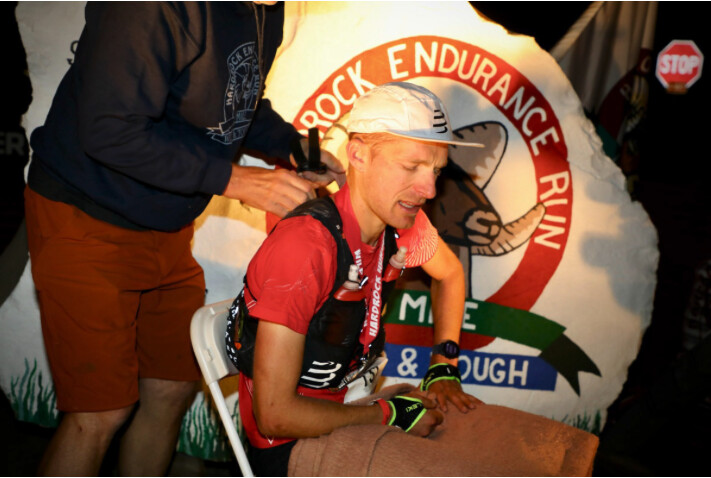
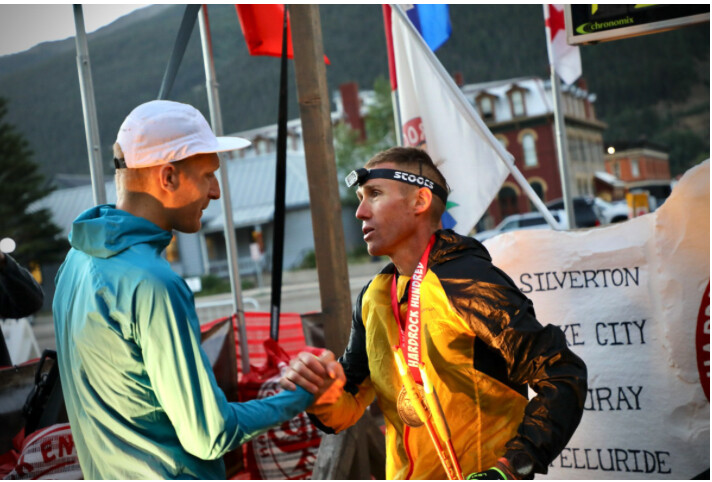
Marmissolle finished second and was followed by Dominguez who ran a steady and smart race from start to end finished third in 26:12:01. Glick finished fourth with a time of 26:43:05, and Browning would round out the top five with a time of 27:17:02.
(07/16/2023) Views: 382 ⚡AMPby Eszter Horanyi -I Run Far
Hardrock 100
100-mile run with 33,050 feet of climb and 33,050 feet of descent for a total elevation change of 66,100 feet with an average elevation of 11,186 feet - low point 7,680 feet (Ouray) and high point 14,048 feet (Handies Peak). The run starts and ends in Silverton, Colorado and travels through the towns of Telluride, Ouray, and the ghost town...
more...TD Beach to Beacon 10K celebrating its 25th year
We're getting closer to the annual TD Beach to Beacon 10K Road Race. It's happening on the first Saturday of August, just over weeks away.
This year is the 25th anniversary of the race, and more than 8,000 people are registered to run.
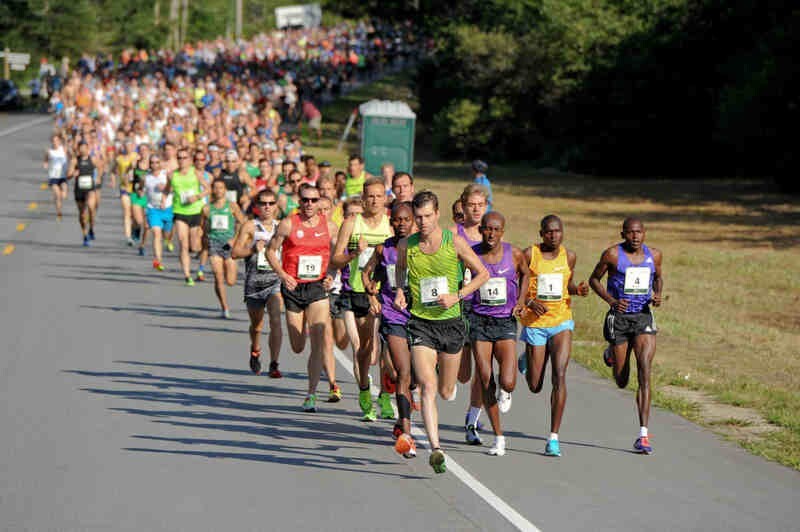
Each year, the scenic race held in Cape Elizabeth needs about 800 volunteers to make it happen.
People from all over New England and throughout the world come to Maine for the race. It begins on Route 77 near the entrance of Crescent Beach State Park, winds along tree-lined streets and past breathtaking ocean vistas, and ends in Fort Williams Park at historic Portland Head Light, the most photographed lighthouse in the world.

Thousands of spectators cheer runners along the route and at the finish. In 2021, more than 2,000 runners participated in the race’s only virtual TD Beach to Beacon 10K.
The popular annual race debuted in 1998 with 2,408 runners crossing the finish line.
More than $90,000 in prize money is awarded to the top finishers and place winners in various categories for men and women, and a separate $30,000 donation is provided to a designated beneficiary each year by TD Bank. This year's beneficiary is Valo Maine, a nonprofit that helps Maine teens with their mental well-being.
The iconic event is managed by DMSE Sports of Woburn, Massachusetts. Along with the TD Beach to Beacon 10K, DMSE assists the Boston Athletic Association with managing the Boston Marathon and other high-profile sports events.
(07/15/2023) Views: 631 ⚡AMPby Hannah Yechivi
TD Beach to Beacon 10K
Joan Benoit Samuelson, a native of Cape Elizabeth, Maine, won the first-ever women's Marathon at the 1984 Olympics in Los Angeles and is founder and chair of the TD Bank Beach to Beacon 10K. "A long time dream of mine has been realized" says Samuelson. "I've always wanted to create a race that brings runners to some of my most...
more...Four exercises to improve spine mobility
As a runner, you may not often think about your back, but neglecting this important part of your body not only puts you at greater risk for injuries but can reduce running efficiency and ultimately slow you down. If you haven’t given your back any attention lately, try adding these simple exercises to your routine once or twice a week and start reaping the benefits.
Thoracic spine mobility plays a crucial role in the overall performance and well-being of runners. The thoracic spine refers to the middle and upper back region, consisting of 12 vertebrae that connect the cervical spine (neck) and the lumbar spine (lower back). Maintaining mobility in this area is important for runners due to its impact on posture, breathing mechanics and overall movement efficiency.
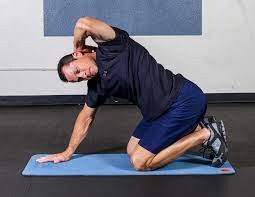
To improve thoracic spine mobility, try doing the following exercises once or twice a week. If you frequently feel stiff through your back, neck and shoulders, consider booking an appointment with a chiropractor, who can provide a more in-depth assessment and help you regain mobility through your spine.
1.- Cat/cow stretch
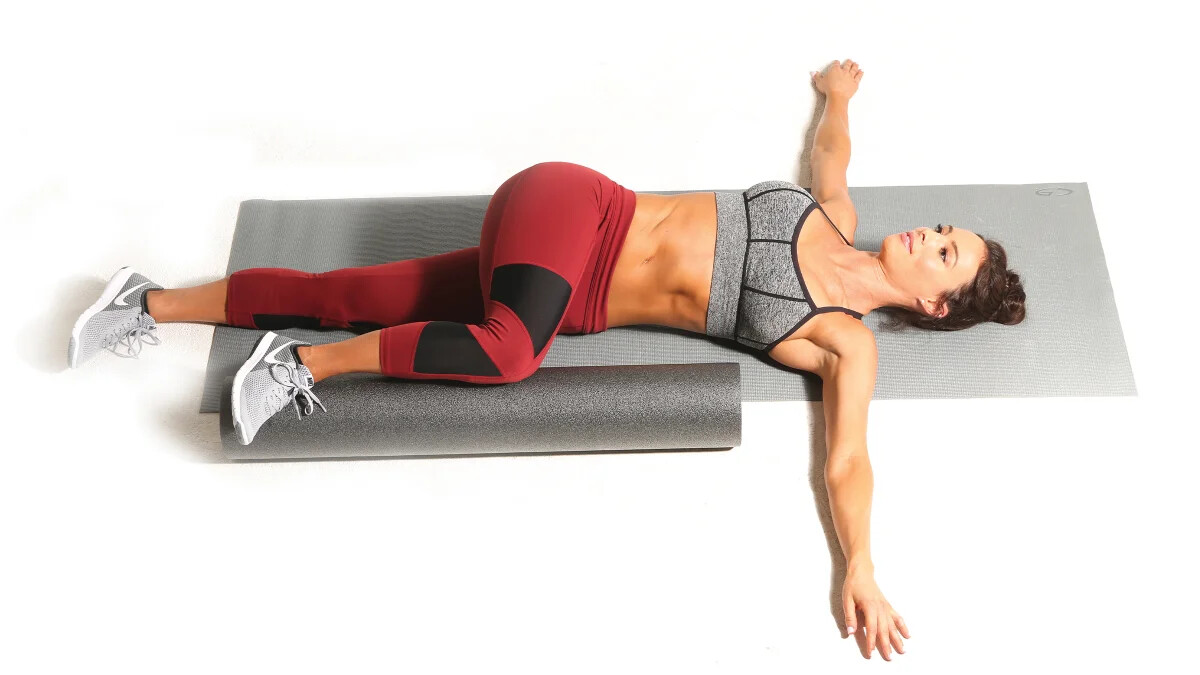
Begin on your hands and knees. Inhale as you move your butt up towards the ceiling, pressing your hands into the floor, arching your back and pressing your chest toward the floor as you lift the head up (this is the cow). From there, exhale as you move into cat position, rounding out your back and pushing shoulder blades away from you as your spine forms a “C” curve in the opposite direction. Repeat this 10 times, focusing on keeping your should blades relaxed while breathing deeply and steadily.
2.- Quadruped t-spine rotation
Get on your hands and knees, with your spine in a neutral position. Place one hand on the back of your neck, without putting pressure or pulling down on your neck.
Leading with your eyes, begin to rotate your head and shoulder as far as possible down toward your opposite elbow. Reverse the motion (still leading with your eyes), by rotating your head and shoulder upward as far as possible without twisting your lower back. Move through this motion 10 times, then repeat on the other side.
3.- Open book
Start by lying on your left side, stacking your right leg on top of your left, with your knees bent. Extend your arms straight out in front of you, palms touching. Lift your right hand and extend it upward, opening up the arm like it’s a book. Slowly move your arm until it is extended straight out to your right with your palm up, resting on the floor. Follow the top hand with your head and eyes throughout the entire movement, so that your head and eyes are turned toward the right at the end of the movement. Hold this stretch for a few breaths before returning to the starting position with palms stacked on top of each other. Repeat up to 10 times on each side.
4.- Thoracic extension over foam roller
Place the foam roller perpendicular to your torso. Sit in front of the foam roller, and gently hold your head with your hands, interlocking the fingers and supporting the weight of your head (you should simply be holding your head, not pulling on it).
Take a deep breath, then as you breathe out slowly lean backward so that your upper back is reaching back over the foam roller. Allow your shoulders to reach gently toward the floor while the foam roller supports your upper back. Lift the hips to roll up and down the muscles of the upper back. Return to the starting position, and move the foam roller up an inch and repeat the process, moving up your spine after each stretch. This is a very intense movement, so don’t force your body into discomfort. Stretch only as far as your body allows while you continue to breathe steadily. If you find yourself holding your breath, you’re probably pushing too hard and should ease up until you can return to regular breath.
(07/15/2023) Views: 484 ⚡AMPby Brittany Hambleton
How to Properly Prepare for Hot-Weather Races
Ah, summertime! It's one of the best seasons for long trail runs, but it's also the hottest and one of the most difficult times to train.
As temperatures and UV indices climb, runners in many regions can feel the dew point explode, and that can make it seem like any semblance of fitness gained over the winter and spring is suddenly gone. We can all recall an early summer run that makes us not only question our confidence, but whether we're going to make it through the next few months.

There are notoriously warm races on the horizon, and there's a lot of talk about heat and how to mitigate it: sauna training, layering, topical cooling-all the tools to get amateur and elite athletes alike through challenging conditions. Many of the runners who just raced the Western States 100 had relied on mid-afternoon runs when temperatures were at their highest, as well as sauna or hot water immersion training. The race, as with many other summer and early fall races, typically boasts soaring high temperatures along sections at lower elevations.
For decades, the three most-watched sporting events worldwide-the Summer Olympics, FIFA World Cup, and the Tour de France-are typically held during the hot summer months of the Northern Hemisphere. However, prior to 2012, most of the scientific literature on heat acclimation for athletes was based on laboratory testing and controlled environments, and not from real competitions in scorching conditions. With eight of the hottest years in recorded human history having been logged since 2015, global sport organizations such as the International Olympic Committee have finally placed enormous emphasis on providing up-to-date guidelines and recommendations in order to keep athletes safe.
The COVID-19-delayed Tokyo Olympics in 2021 were the hottest Games in modern history with temperatures soaring into the mid-80s and humidity hovering at 82 percent during the women's marathon. The good news is that it sparked considerable discussion and hypothesizing in sport-science communities about best ways for the athletes and their teams to prepare and endure heat. Ultrarunners everywhere watched as the world's best distance runners implemented topical cooling techniques such as pre-competition ice vests and bags of ice during the marathon-a relatively new or at least a more aggressive tactic to attenuate the impact of heat before and during competition.
Heat is considered an equalizer, an element that everyone has to manage, no matter if you're attempting to train or race through it. But does it have to be a performance-sapping equalizer? Can heat training (potentially year round) be viewed as an opportunity to improve fitness, tolerance, and mental strength for challenging race day conditions?
How Heat Impacts Performance
First up, let's discuss what happens when athletes exercise in the heat. Blood flow to the skin, as well as sweat rate, increase to promote heat dissipation. While aimed at keeping the human body safe, these processes increase physiological strain and the chance for dehydration in prolonged endurance events, leading to a subsequent increase in cardiovascular strain. This creates a chain reaction that negatively impacts aerobic performance. Researchers globally agree that the most salient way to lessen the strain that heat imposes is to perform a heat acclimation period ahead of race day.
Improvements in aerobic performance and thermal comfort achieved through heat acclimation are bolstered by these processes, as outlined in a 2011 scientific article from the U.S. Army Research Institute of Environmental Medicine.
Heat Acclimation
Let's dive even further into what the science says about heat acclimation, when and how to implement it, and what athletes of all levels can do to mitigate heat stress before, during, and after exposure to a hot endurance event.
A study published in the British Journal of Sports Medicine in 2015 provided the first-of-its-kind, gold-standard consensus recommendations for heat acclimation, and remains one of the most cited pieces of recent literature regarding training and competing in heat, along with Julien Periard's comprehensive review from 2021 for the American Physiological Society. In both reviews, the authors discuss heat acclimation, hydration, and cooling strategies as the pillars of successfully competing in the heat.
The authors report that most adaptations happen within the first week and more slowly within the following ten days. In order to achieve near complete adaptations to fully optimize aerobic performance, athletes need to plan for two weeks of focused acclimation. A pre-Tokyo Olympics study from 2020 suggests following the gold standard of 10-14 days of long-term heat acclimation followed by a shorter five-day reacclimation period just ahead of competition (during the taper period) in order to get the most out of "peak weeks" of training without compromising the health of the athlete with the added stressor of heat training.
It is important to note that the average loss of heat acclimation is roughly two-point-five percent per day following 48 hours without exposure to heat. But reacclimation happens quickly. The rate of decline varies from individual to individual and typically occurs at a slower rate than induction to heat acclimation.
The literature favors training in the same environment as the upcoming race, and if that isn't possible, training indoors in a heated room is the next best option. These once-a-day sessions should last at least 60 minutes, at an easy effort, while keeping a close eye on heart rate (preferably at about 75 percent of max heart rate). Athletes should expect to see their heart rate decrease as adaptations continue to occur, and as such, the duration or intensity of the session should be increased in order to maintain the training stimulus.
What if you don't have access to the same outdoor environment nor the set-up to train in a heated room? A study from 2007 demonstrated that 12 sessions of post-exercise sauna bathing at approximately 190 degrees Fahrenheit for 30 minutes at a time over the course of three weeks enhanced endurance performance.
What about dry heat versus humid heat and acclimating to either? The science demonstrates that acclimating to dry heat improves exercise in humid heat and vice versa. But acclimating in humid heat evokes higher skin temperatures and circulatory adaptations. In other words, the stereotypical dad statement: "But it's a dry heat!" holds somewhat true.
Are there benefits to heat acclimation when your race is in temperate or cool environments? A study from 2010 on cycling performance demonstrated a five percent increase in VO2max in cool conditions versus an eight percent increase in hot; a six percent improvement in time-trial performance in cool conditions vs. an eight percent improvement in hot; and an equal increase in power output at lactate threshold in both cool and hot conditions of five percent.
Hydration
Training in hot conditions increases sweat rate, which leads to progressive dehydration (if fluid intake is not increased), causing a similar cascading effect that is essentially the reverse of what happens during heat acclimation: decrease in plasma volume, evaporative heat loss, and cardiac filling all leading to a reduction in capacity to tolerate the effort in the heat.
A 2015 study in the British Journal of Sports Medicine underscores the importance of starting training or competition in the heat in a well-hydrated state with sodium supplementation before and during the event, minimizing body water mass losses during prolonged exercise in the heat, and being sure recovery hydration regimens include sodium, carbohydrates, and protein.
A 2010 study published in the Journal of Applied Physiology demonstrated enhancement and acceleration of heat adaptations, as well as further increases in blood plasma volume by taking in a protein-carbohydrate mix (0.3g of protein/kg of body weight and 3.6kcal of carbohydrate/kg of body weight) within 10 minutes of heat training.
Cooling Strategies
Numerous studies underscore that cooling strategies implemented immediately before, during, or after competition should be used in addition to heat acclimation, not as substitutes. Cooling strategies provide the most benefit during sustained exercise, but should not be used for sprinters. They include both external methods like ice bandanas and saturated towels, cold water immersion, fanning, topical menthol sprays, and internal options such as the ingestion of cold fluids or ice slurries. (Did someone say post-run slushies?!)
Ice bandanas and saturated towels demonstrate the ability to lower skin temperature (without lowering muscle temperature and risking injury) and effectively lower cardiovascular strain. Ice slurries have been shown to be more effective at cooling athletes than cold fluid ingestion, as the latter has also shown reductions in sweating and evaporation. The literature encourages combining techniques (external and internal), as doing so has a higher cooling capacity than the same techniques used in isolation.
A meta-analysis from 2020 found that topical menthol spray caused cooler thermal sensation and improved thermal comfort, but no significant differences in sweat production, core temperature, or heart rate were demonstrated. Findings showed external application, warmer environment, and higher body mass indices as improving menthol's effects on endurance performance without compromising the body's response to the heat.
How to Apply This in Training?
For athletes targeting a warm or hot race, we have a few options in how to structure heat acclimation. As a coach, I recommend against adding in heat acclimation as a novel stimulus without an anticipated hot race on the calendar, because most athletes still have a lot of other low-hanging fruit to grab first. (Looking at you, quality sleep!). If you are a highly trained athlete, chat with your coach prior to initiating heat acclimation in the absence of a warm-weather event on your schedule.
If you have a history of RED-S (Relative Energy Deficiency In Sport), work closely with your coach and medical team to be absolutely certain you aren't adding in too much stress to your training all at once. Taking body weight measurements can be a part of hydration monitoring, but it's important to contemplate the pros and cons of doing so. Another consideration is making sure you have a clear picture of your iron/ferritin status prior to initiating a robust heat acclimation protocol, as iron is lost through sweat.
(07/15/2023) Views: 472 ⚡AMPby Trail Runner Magazine
Former Canadian track star Michael Woods wins Tour de France stage
Michael Woods, 36, of Toronto had the best day of his cycling career Sunday, winning the ninth stage of the Tour de France. The sub-four-minute miler sat patiently behind leader Matteo Jorgenson of the Movistar team, who led the stage for 47 km, taking advantage of Jorgenson’s flagging energy only 400m from the top of the mythical Puy de Dôme and surging ahead for the stage win. Woods, a former 1,500m runner and Canadian record holder, rides for the Israel–Premier Tech team.
Woods and Jorgenson were part of an early breakaway of 14 riders that also included stage nine runner-up Pierre Latour of France and third-place finisher Matej Mohoric of Slovenia, as well as Canada’s Guillaume Boivin. The Puy de Dôme is a dormant volcano in the central massif of south-central France whose summit marks the culmination of the ninth stage of the Tour, which includes a number of challenging climbs
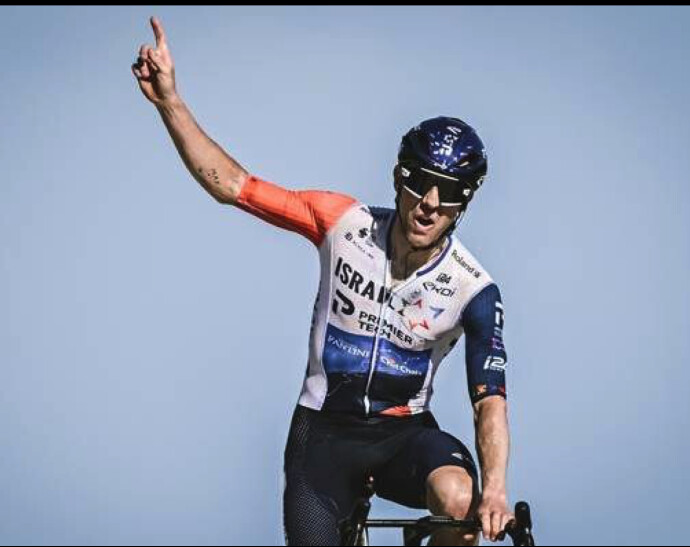
Originally from Ottawa, Woods has held the Canadian U20 mile record (3:57.48) and U20 3,000m record (7:58.04) since 2005. He was a multi-year national champion in running and won gold at the Pan American Junior Championships during his early years. Woods ran at the University of Michigan, but transitioned from running to cycling after repeated foot injuries brought a halt to his running career; he went pro as a cyclist in 2013 and made the Canadian Olympic team for Rio in 2016. He also competed at the Tokyo 2020 Olympics, finishing fifth in the men’s individual road race.
In 2018, Woods won a stage in the Vuelta a España; like Sunday’s Tour stage win, it was at the culmination of a steep climb. He first competed in the Tour de France in 2019 (the first Canadian to compete in the Tour since 2016), riding for the US-based EF Education First team and finishing 32nd overall. He did not finish in 2021 or 2022, so Sunday’s stage victory represents a massive success for Woods, who is only the third Canadian to win a stage of the Tour, after Steve Bauer (who is now a sporting director with Israel-Premier Tech) won the first stage in 1988 and Hugo Houle won last year’s stage 16. He is also the oldest rider to win a mountaintop stage since Raymond Poulidor (who is Dutch rider Mathieu van der Poel’s grandfather) won the stage culminating atop Saint-Lary-Soulan in the Pyrenees in 1974 at age 38.
2022 winner Jonas Vingegaard of Team Jumbo-Visma retains the yellow jersey but lost about eight seconds to the Slovenian superstar Tadej Pogacar.
(07/15/2023) Views: 448 ⚡AMPby Running magazine
Study finds blade runners do not have a competitive advantage
Are prosthetic, “man-made” limbs more efficient or powerful than biological legs? This has been debated in track and field circles for years, but recent research suggests what amputee runners have known all along–they aren’t. At least, not over 400 metres.
A recent study from the University of Colorado at Boulder found that blade runners, including the world’s fastest 400-metre sprinter, Blake Leeper of Tennessee, have no competitive advantage over non-amputee runners. Instead, they likely have a significant disadvantage.Prosthetic limbs, particularly those designed for athletic performance, have come a long way since Terry Fox made his inspiring, yet at times painful-looking, journey across Canada.
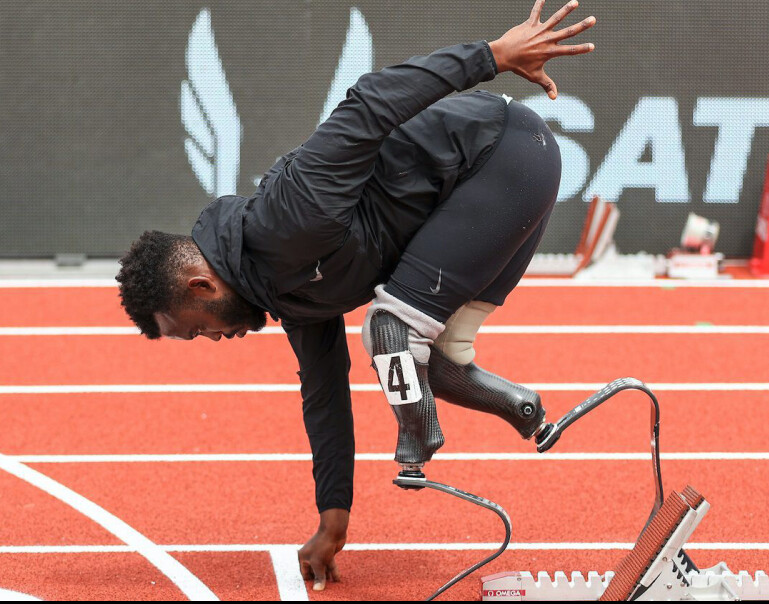
In the last decade, we’ve seen amputee runners run ultramarathons and set Guinness World Records, and many of us recall Oscar Pistorius, the double-amputee blade runner from South Africa who became the first to win a non-disabled medal at the 2011 World Track and Field Championships (he won silver in the 400m). Pistorius was later convicted of murder in the death of his girlfriend, Reeva Steenkamp, and remains in prison today.
Back in 2011, Pistorius had to take legal action against the IAAF (now World Athletics) to allow him to compete in the World Championships, since the governing body of track and field claimed his prosthetic limbs gave him an advantage over his competitors.
Leeper, who is also a double-amputee and the fastest blade runner over the 400m distance today, has faced similar rejection. He was ruled ineligible to compete at the 2020 Tokyo Olympic Games due to the perception that his “blades” gave him an unfair advantage.
The study
As it turns out, two legs do appear to be better than none, despite the incredible technology behind today’s prosthetic limbs. The study, published in the journal Royal Society Open Science, collected performance data from Leeper, Pistorius and six other bilateral amputee sprinters and compared that to the best non-amputee sprinters in the world across five performance metricLeeper also visited the researchers’ lab for a series of tests to measure his acceleration out of the starting blocks, maximum speed along straightaways and around curves, velocity at aerobic capacity and sprint endurance (all-out effort). This information was also compared to available data from elite non-amputee runners.
The research found that runners using prostheses were 40 per cent slower out of the starting blocks, had 19 per cent slower velocity at aerobic capacity and were one to three per cent slower around curves, compared to non-amputees.
“We found that no athlete with prosthetic legs has ever performed better than elite non-amputee athletes in lab-based experiments in any measure that relates to sprinting performance,” said first author Owen Beck.
The researchers presented their preliminary findings to the Court of Arbitration for Sport in 2020 in a bid to get Leeper to an Olympic start line, but the athlete was yet again deemed ineligible–the court ruled that his prostheses made him too tall. (The same researchers had found in a previous study that height did not provide an advantage when it comes to maximum sprinting speed, but Leeper was still ruled ineligible.)
While their results didn’t help Leeper this time, the researchers hope their work will change the conversation to provide more opportunities for amputee runners.
“A lot of assumptions have been made about running prostheses and performance with no data to support them,” said senior author Alena Grabowski, associate professor of integrative physiology at CU Boulder. “I hope this will get people to really question rules being put into place that keep athletes with disabilities from competing even when they have shown with science that they can compete fairly.”
(07/15/2023) Views: 385 ⚡AMPby Running Magazine
Kilian Jornet confirms UTMB plan with entry into Eiger Ultra Trail
Kilian Jornet has confirmed he plans to be in Chamonix at the end of August to defend his UTMB title.
And he will race at this weekend’s Eiger Ultra Trail with the aim of securing the single running stone he needs to qualify for UTMB.
Return from Himalayas
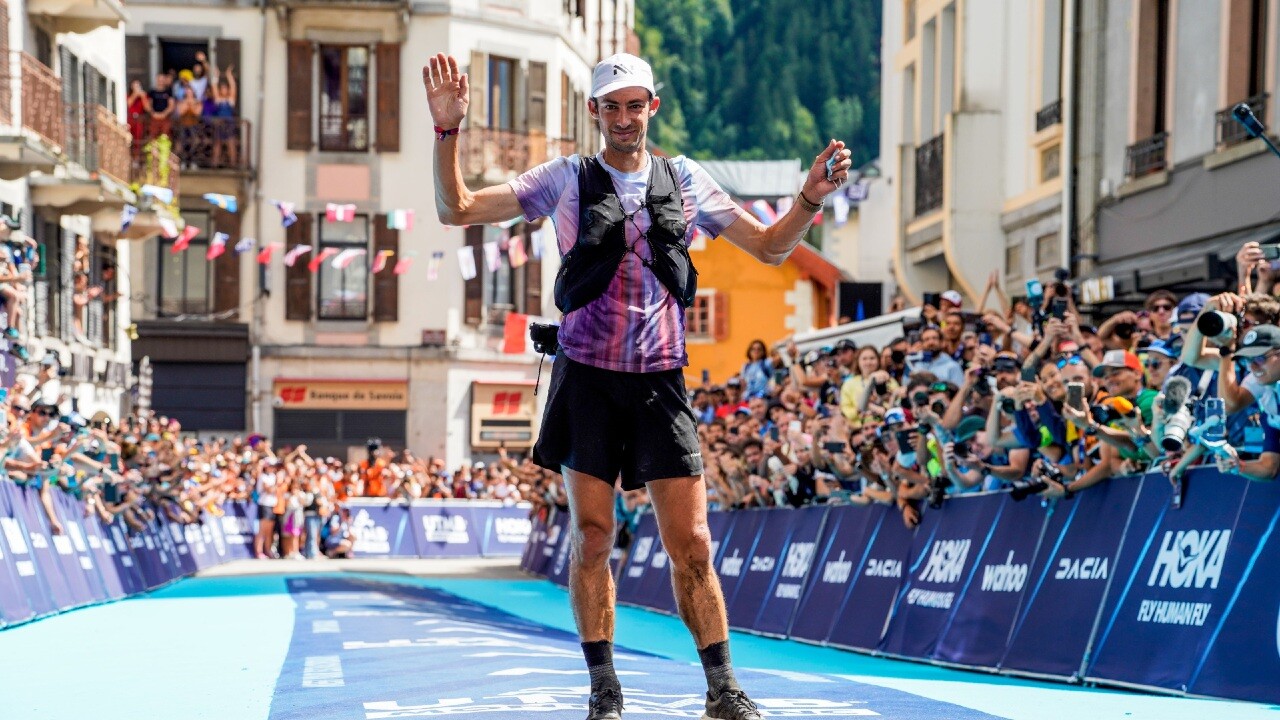
Kilian Jornet is only recently back from a trip to the Himalayas, a trip that saw him survive an avalanche that carried him for 50 metres during a solo attempt on the West Ridge of Everest, and the legendary trail runner and mountaineer has told his Instagram followers that he wanted to be sure he was fully recovered.
”I wanted to see how I was feeling, how I was in my body [after the trip to the Himalayas],” he said.
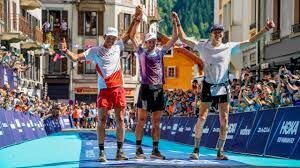
‘’I have mentioned I wanted to do some long distance at the end of the season and actually I am kind of looking like I would like to do UTMB.
‘‘But I need to classify first and I need to have some points so I will try to get them this weekend at Eiger and see if I can be at Chamonix at the end of August.’’
Eiger E16 Pleasure Trail
Jornet will be taking on the E16 Pleasure Trail race on Saturday – a 16k race that is described by the UTMB as ‘perfect for short distance specialists, and for those wishing to enjoy a shorter trail at their leisure.’
Although that race may not be the most likely to feature a runner of Jornet’s calibre, as one of the top-three UTMB finishers last year he has a priority for registration for this year’s event, but he must have at least one running stone and he has chosen Eiger to achieve it.
Last year’s UTMB saw Jornet at his very best as he took his fourth race victory, set a new course record and became the first person to cover the famous course in under 20 hours.
When Jornet announced his 2023 schedule earlier in the year, the only defined race was a return to Sierre-Zinal on August 12th – a race he’s won nine times, setting the course record of 2:25:36 in 2019.
Alongside a ‘trip to the Himalayas’ Jornet said he was considering a ‘Long-distance project/race’ later in the season. That race now looks most likely to be UTMB.
(07/14/2023) Views: 559 ⚡AMPby Chris Buckley
North Face Ultra Trail du Tour du Mont-Blanc
Mountain race, with numerous passages in high altitude (>2500m), in difficult weather conditions (night, wind, cold, rain or snow), that needs a very good training, adapted equipment and a real capacity of personal autonomy. It is 6:00pm and we are more or less 2300 people sharing the same dream carefully prepared over many months. Despite the incredible difficulty, we feel...
more...Bill Rodgers is set to run his 43rd Quad-City Times Bix 7
In 1978, Bill Rodgers entered 30 road races and amazingly, astonishingly, he won 27 of them.
Over the course of his running career, he won 22 marathons, all during a thoroughly incredible 10-year period from 1974 to 1983.
He doesn’t win anything anymore, not even in his age group, but the 75-year-old Boston resident is still running, and he will be coming back to run the Quad-City Times Bix 7 for the 43rd time on July 29.
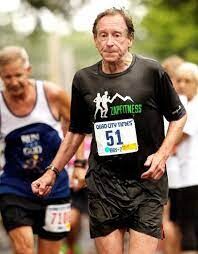
Rodgers said he thought he had done the Falmouth Road Race on Cape Cod about 35 times and the Cherry Blossom 10-miler in Washington, D.C., perhaps 30 times.
He never has entered any race as frequently as he has the Quad-City Times Bix 7, which is holding its 49th event this year.
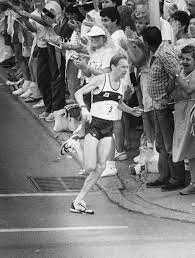
“And the Bix is probably the most challenging of them all,’’ Rodgers said. “But it’s a race I remember so well from that first time in 1980. I was still young and I could duke it out and I could race. Now I just try to hang on.’’
A man who once logged hundreds of miles in training each week now jogs 25 to 30 miles a week. He has done about 10 races this year, including Cherry Blossom. He said he now just went back to some of the old events he did during his heyday.
“But I’m back in the pack,’’ he said. “I’m way back in the pack because I’m 75 years old. It’s like a whole different thing. My strength used to be that I was a marathoner and I could do high mileage. I was a high-mileage runner. I wasn’t as quick as some runners, but I could do the mileage.’’
Not anymore. During the COVID-19 pandemic, Rodgers had a chance to sift through almost 50 years of running logs and he calculated that he has done more than 1,500 races and run at least 190,000 miles in his lifetime.
Most automobiles don’t last that long. And Rodgers hasn’t had the benefit of having a change of tires or periodic oil changes.
His body is feeling the effects of all that mileage. When he enters races now, he frequently finds himself trailing runners of a similar age who have fewer miles on their personal odometers.
“What I’m seeing is I see a lot of these runners who are in their 60s and 70s and they’re all ahead of me, but they just started running pretty recently or something,’’ he said.
He steps up to a new age group this year but doesn’t figure on being a contender to win it. The Quad-City Times Bix 7 course record for men ages 75-79 is 54 minutes, 58 seconds. Rodgers’ finishing time a year ago was 1:08:43.
Despite that, he still enjoys running.
“Now when I do 30 miles a week, I feel like when I was doing 100 miles a week,’’ he said. “I feel good, relatively speaking. No complaints with regards to running. I think it’s a great way to live.’’
Rodgers won the Quad-City Times Bix 7 the first two times he came here, in 1980 and 1981, and finished in the top 10 on seven occasions.
However, he is remembered almost as much for other years.
In 1995, he paused as he was coming down Kirkwood Boulevard to catch women’s leader Olga Appell just as she collapsed from heat exhaustion. He made sure that Appell received medical attention before jumping back into the race.
(07/14/2023) Views: 501 ⚡AMPBix 7 miler
This race attracts the greatest long distance runners in the world competing to win thousands of dollars in prize money. It is said to be the highest purse of any non-marathon race. Tremendous spectator support, entertainment and post party. Come and try to conquer this challenging course along with over 15,000 other participants, as you "Run With The Best." In...
more...Stuck indoors? Some running drills to boost fitness
Some days you just don’t want to go outside. While we know running in adverse conditions can be a good mental-strength builder, even the most hardcore runners occasionally don’t want to tackle the rain/lightning/extreme heat or whatever is happening out the door. No access to a treadmill? No problem–here are some easy ways to give your fitness a boost on those rare times you just want to stay in.
Clear some space and grab your shoes (or not, these exercises all work great in bare feet) and get ready to feel a burn.

The 100-up drill
If you only have a few minutes, 100-ups are the way to go. Christopher McDougall, author of the bestselling Born to Run and Born to Run 2, swears by this exercise as a way to improve and polish your running technique. Best performed in bare feet, you can also fit it in before or in the middle of your regular run to spice things up.

Stand up tall, core engaged, shoulders back, and feet hip-width apart. Bend elbows at 90 degrees into your natural running arm swing position.
Drive your right knee up to hip height while simultaneously driving your left arm forward and up and right arm back in an arm swing, just as if you were running.
Return your foot to the starting position, landing on the ball of your foot directly underneath you. Repeat on the alternate side for 100 repetitions, 50 per side. Start slow, but feel free to increase your pace once you’ve got the hang of it.
Skipping rope
Get your heart rate soaring by jumping rope in place. Skipping is an effective cardio exercise that improves cardiorespiratory health, tones muscles, strengthens bones and boosts flexibility. You’ll feel like you’ve been sprinting and are also boosting your co-ordination, focus and body awareness. Try a 10-minute skipping workout to get started.
Burpees, burpees, burpees
You either love them or hate them–but it’s hard to ignore how effective burpees are. Burpees use a whole set of movements to target major muscle groups, including legs and hips, glutes, core, arms, chest and shoulders. While you hop, squat and push-up, you’ll burn as many calories as you would running, while getting an overall workout.
Begin in a squat position with knees bent, back straight, and feet shoulder-width apart.
Lower your hands to the floor in front of you, just inside your feet. With your weight on your hands, kick (or step) your feet back, so you’re on hands and toes (or knees) in a pushup position.
Keeping your body straight from head to heels (or head to knees), do one pushup. Drop your knees to the ground to modify, if keeping them lifted is too intense.
Jump or step your feet back to their starting position. Stand and reach your arms over your head, then jump into the air, landing where you started. As soon as you land with your knees bent, get back into a squat position and do another repetition.
The sky is the limit with burpees–do just a few to get a quick cardio boost, or spend 20 minutes leaping about and reap some serious benefits. You may just find that you’ll want to add them into your routine on sunny days as well.
(07/14/2023) Views: 529 ⚡AMPby Keeley Milne
John Korir eyes Chicago Marathon after second place at Boilermaker 15km race
Two times Los Angeles Marathon champion John Korir has confirmed participation in the Chicago Marathon set for October 8 in the United States of America (USA).
The younger brother to former Boston Marathon champion Wesley Korir will be seeking his maiden Chicago Marathon win after finishing third last year in 2:05.01, behind champion compatriot Benson Kipruto (2:04.24) and Ethiopia's Seif Tura, who placed second in 2:04.49. Bernard Koech (2:07.01) and Ethiopia's Shifera Tamiru at 2:07.53 completed the top five places in last year's event.
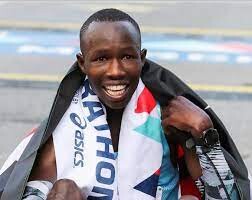
Korir is fresh from finishing second at the Boilermaker 15km road race behind Ethiopian Jemal Yimer last Sunday.
“I was using the Sunday race as part of my training ahead of the Chicago Marathon. Last year, Chicago Marathon was too tough but I want to try my luck this year,” said Korir.
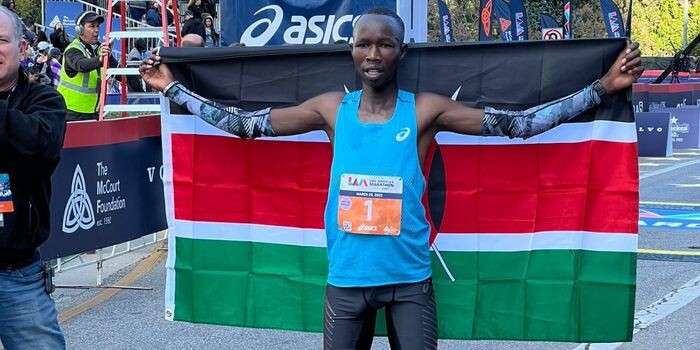
At Bolmaker’s race, Korir said he lost the title in the last kick to finish second in 42:13 behind Yimer (42:06). Kenya’s Charles Langat completed the podium in 42:28.
“He beat me in the last stretch of the race after I miscalculated. However, I thank God for the second position considering the event was very competitive,” he said.
“I normally run two marathons a year plus a few short races as built-up for the World Marathon Majors across the world. Races in the USA have always been my priority,” he added.
Korir said his aim is to once again finish on the podium but a win but if victory comes his way it will be a bonus.
Korir has been out of competition since finishing ninth in 2:1004 in a race won by compatriot Benson Kipruto in the Boston Marathon last April.
“Before heading to Chicago, he will be competing at the Falmouth 12km race on August 20.
In women's cadre, Kenya’s Jesca Chelangat won the Boilermakers 15km after timing 47:31. She was followed by Sarah Naibei (48:45) and Cynthia Limo (48:50).
Chelangat broke the course record set by Edna Kiplagat 13 years ago by 24 seconds. Kiplagat, who was part of the race, placed fourth in 49:10.
(07/14/2023) Views: 494 ⚡AMPby Emmanuel Sabuni
Bank of America Chicago
Running the Bank of America Chicago Marathon is the pinnacle of achievement for elite athletes and everyday runners alike. On race day, runners from all 50 states and more than 100 countries will set out to accomplish a personal dream by reaching the finish line in Grant Park. The Bank of America Chicago Marathon is known for its flat and...
more...Sydney McLaughlin-Levrone will not run 400m hurdles at World Championships
There will be a new 400m hurdles world champion crowned at the 2023 World Championships in Budapest. The reigning world and Olympic champion, Sydney McLaughlin-Levrone, revealed she will only run the 400m flat at next month’s championships, despite an automatic 400m hurdles qualifying spot from winning the world title last year.
McLaughlin-Levrone’s coach, Bobby Kersee, confirmed her plan to the LA Times on Wednesday. Kersee said in May that McLaughlin-Levrone’s race plans for worlds in Budapest would be decided after the USA Track and Field Outdoor Championships; McLaughlin-Levrone won the women’s 400m at the U.S. trials in a personal best and world-leading time of 48.74 seconds, her first time breaking the 49-second mark for one lap of the track.
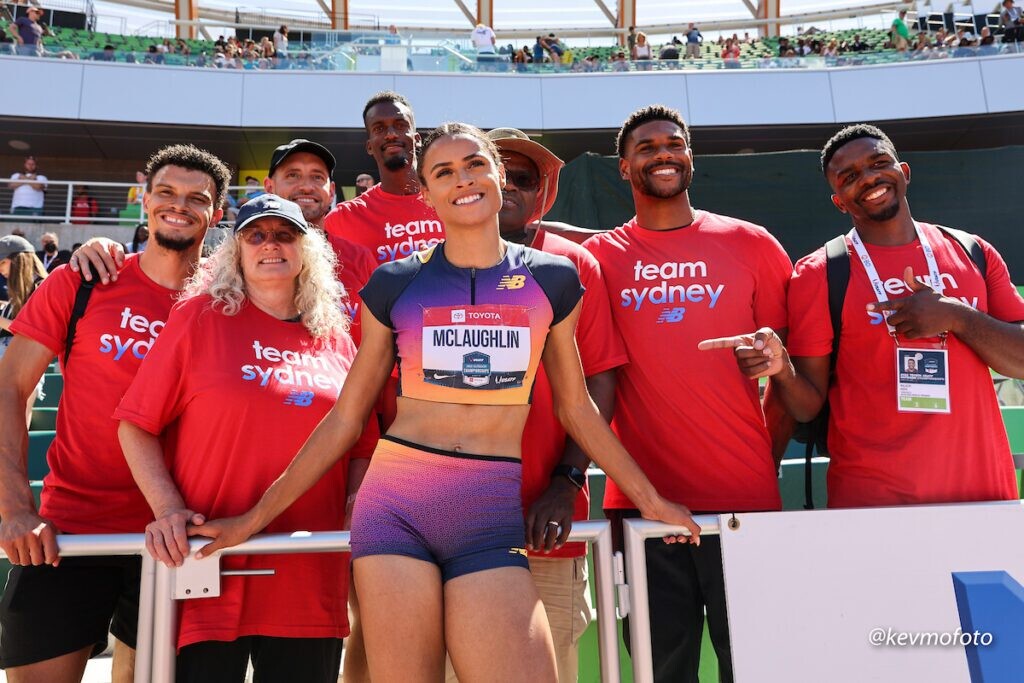
Kersee told the LA Times that the world championships schedule was not conducive to running both the 400m and 400m hurdles. The heats of the 400m hurdles start two hours and 20 minutes before the 400m semi-finals on Monday, Aug. 21. Otherwise, the two events do not overlap.
McLaughlin-Levrone’s rival, Femke Bol, of the Netherlands, who is also the 400m indoor world record holder, is planning to double in the 400m and 400m hurdles. Bol finished as runner-up to McLaughlin-Levrone’s world record of 50.68 in the 400m hurdles in Eugene last year, and has never won gold at Worlds or the Olympics in the discipline.
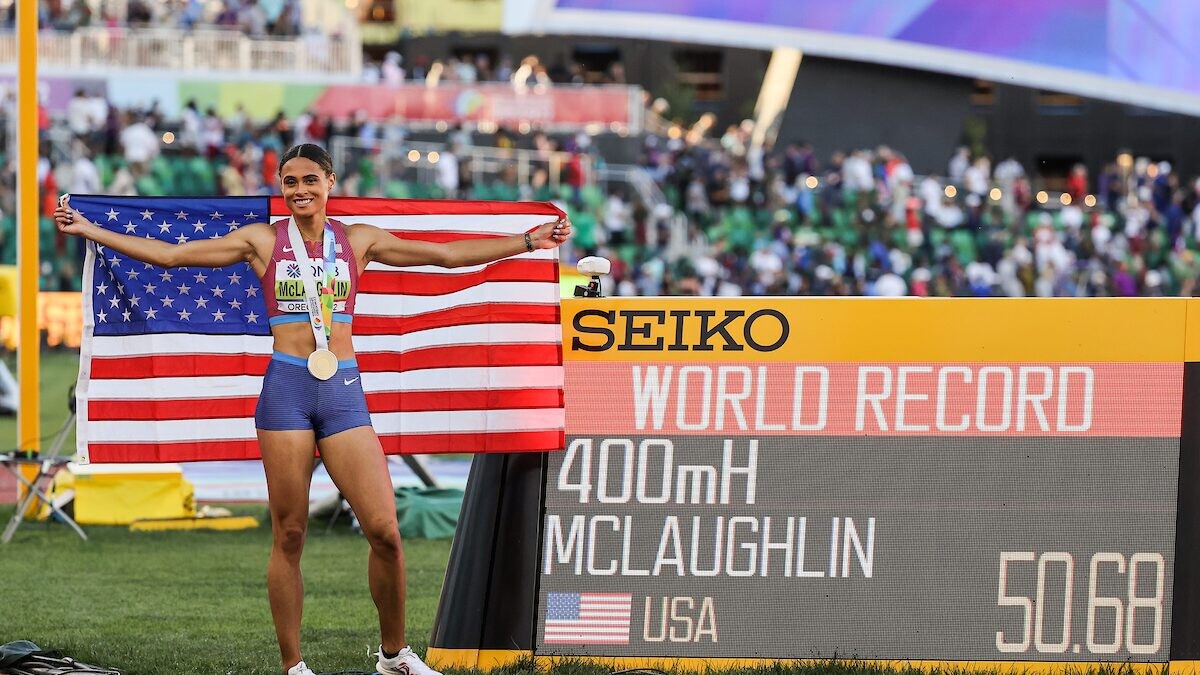
No man or woman has medalled in both the flat 400m and the 400m hurdles at the same world championships.
McLaughlin-Levrone said last fall that she wanted to add the flat 400m to her program to see what she could do. All five of her races this season have been in the 400m; most recently, she ran the second-fastest time ever by an American to win the national title. She has not raced the 400m hurdles since Aug. 8 of last year.
The 23-year-old had a wild card spot into the 400m hurdles at worlds as defending champion, so with McLaughlin-Levrone dropping it from her schedule, this will allow another American onto the team.
Kersee also said that no decision has been made on which event(s) McLaughlin-Levrone will pursue for the 2024 Paris Olympics.
(07/13/2023) Views: 498 ⚡AMPby Marley Dickinson
World Athletics Championships Budapest 23
From August 19-27, 2023, Budapest will host the world's third largest sporting event, the World Athletics Championships. It is the largest sporting event in the history of Hungary, attended by athletes from more than 200 countries, whose news will reach more than one billion people. Athletics is the foundation of all sports. It represents strength, speed, dexterity and endurance, the...
more...

